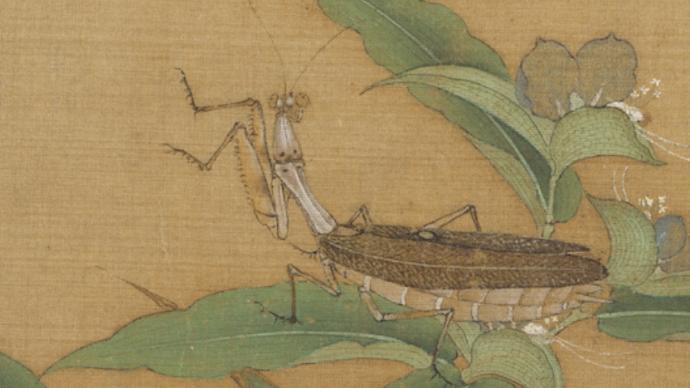
What are the real identities of the insects in the masterpieces of Song and Yuan Dynasties? Is it still identifiable? How is the sound?
The Paper learned that on July 6, the special exhibition "Hide and Seek with Grass and Insects" was exhibited at the National Palace Museum in Taipei. , and learn about the stories and hidden meanings behind grass and insects. At the same time, there are also insect illustrations in literature and pharmacy books, drawings for teaching, insect wall charts and specimens, etc., which can clearly compare the special features of grass and insect paintings and highlight the interest that the paintings want to convey.
The curator of the National Palace Museum in Taipei said that this exhibition specially invited entomologists to participate and write, "Not only does it help us understand how realistic different painters are about the appearance of insects, it helps to identify the types of insects in the paintings, and even the habits of insects can help us understand them. By understanding the depiction of the habitat in the painting, one can even realize the various dramas about life and death that are being performed among the different grass and insect creatures on the painting.”
How to draw grass and insects?
Traditional grass and insect paintings can be divided into two categories: the first type tends to carefully outline the outlines and physical structures of insects, flowers and trees, and carefully paint the corresponding colors to achieve "fine brush" grass and insect paintings that are as clear as photos, so as to present various kinds of grass and insects. The intricate details that people admire. The other type tends to use unrestrained strokes, through the thickness change and sense of speed of the line itself, plus subtle ink or smudge of color blocks, to create a vivid mood of insects and small animals flying and jumping among the grass and trees. A kind of grass and insect painting called "boneless", the brush and ink and color painting seem to be very casual, but it can fully reveal the vitality of grass and insects. Painters sometimes mix the two to achieve the desired effect and to exude different charms.

Song Xudi wild vegetables and insects
In Song Dynasty, Xu Di's "Wild Vegetables, Grass and Insects" distributed dragonflies, locusts, butterflies and cabbage in the four corners of the fan, which should have been slightly rigid. However, the painter matched the colors and proportions appropriately, and the whole appeared simple and harmonious, and the objects and images echoed each other. For example, the green and transparent cabbage leaves spread out as if welcoming butterflies and grasshoppers, but as food for the insects or larvae in the painting, the future of this lovely cabbage may be gnawed and unable to see its shape. The interaction contained in the grass and insect painting is not only between insects; the habitat and vegetation where the insects are located are also important points that cannot be missed. The painter's careful configuration makes the seemingly independent objects in the painting produce a wonderful sense of narrative.This work is said to be known as Xu Di, a 12th-century Jiangsu Piling painter, but his signature is not left on the painting. It is said that Xu Di's depiction of grass and insects is "subtlety", and this lovely "Wild Vegetables and Insects" may reflect Xu Di's style!

Song Xudi Wild Vegetables and Insects (Partial Butterfly)
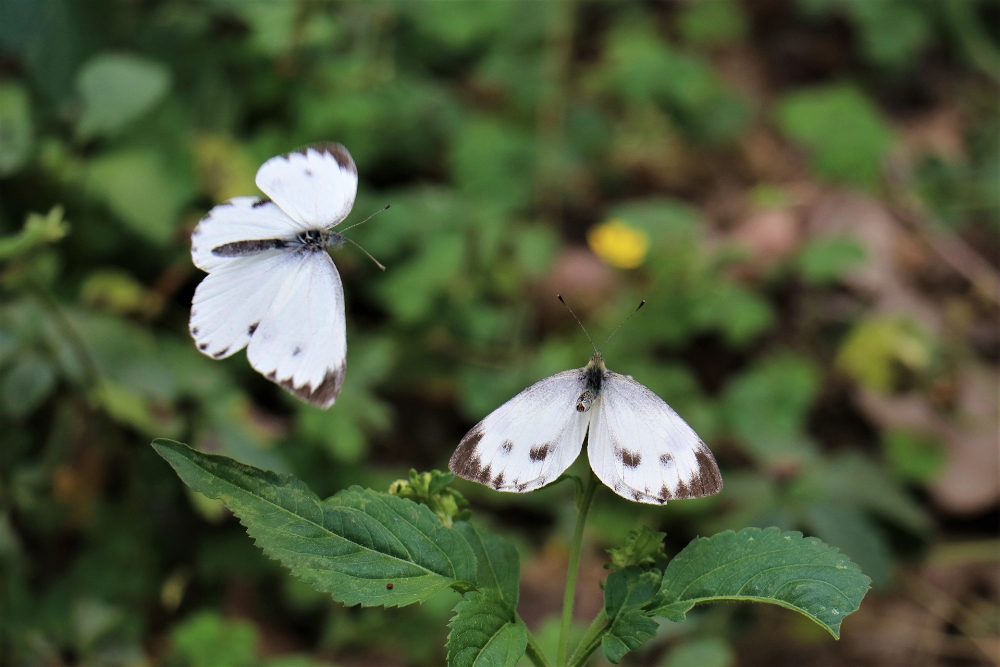
Fringe White Butterfly
The butterfly in the painting has a white base as a whole, and is characterized by rod-shaped antennae, thin feet, hind wings covering the abdomen, and front and rear wings. Most of the members of the pink butterfly family are small and medium-sized, and their wings are often yellowish-white with some dark patterns, and some species have striking red and black spots. Visiting flowers and flying quickly, the males will gather by the stream to absorb water and absorb minerals. Eggs are laid in clusters, needle-shaped; the larvae have a total of five instars, and the color is mainly yellow-green. With the surrounding environment there are brown and green and other color changes. The difference between the picture and the living pink butterfly is the distribution of wing veins, and the proportion of the middle chamber is short and round.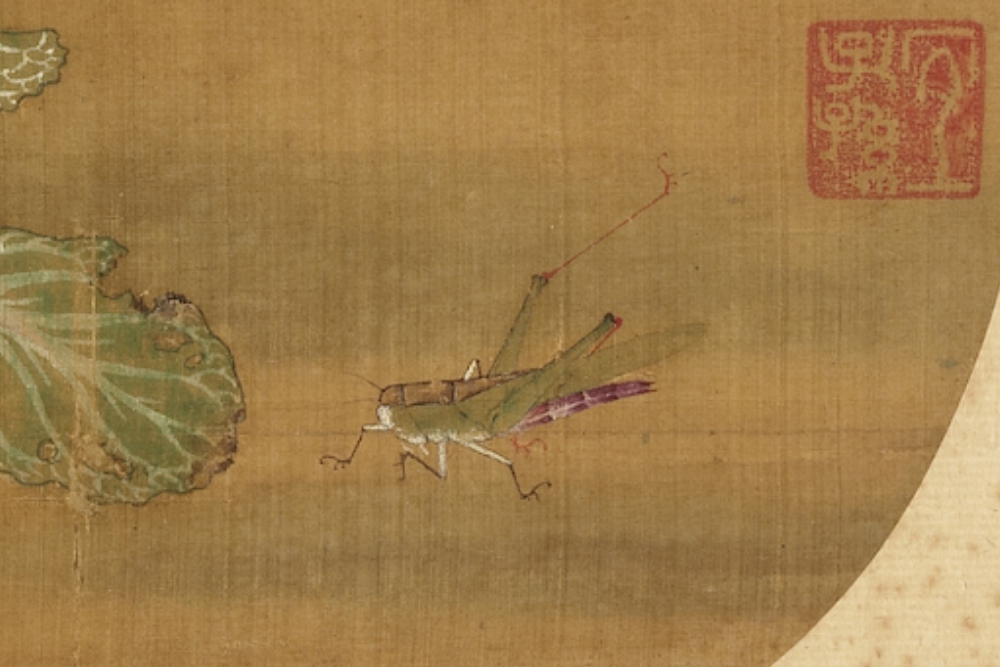
Song Xudi Wild Vegetables and Insects (Partial Locusts)
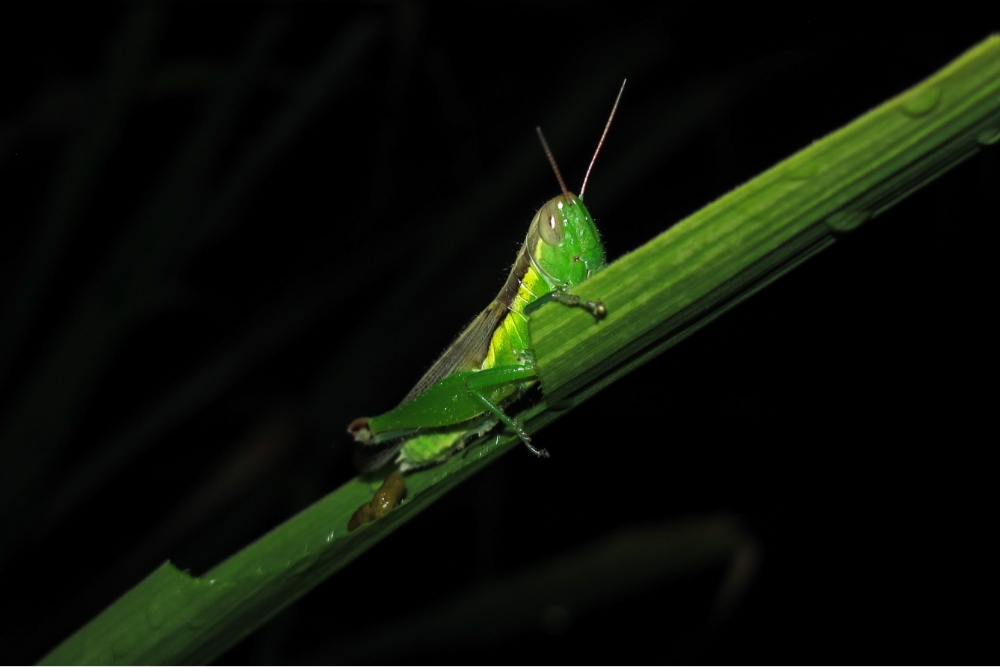
Rice locust
Locusts, Orthoptera Acrididae. The hind feet are specialized as jumping feet, which can be used for long-distance movement and defense against natural enemies. According to the relatively straight front chest, the top single brown, the body side and wings green, the object depicted in the painting may be the rice locust. The rice locust is a swarm of medium-sized locusts widely distributed in Asia. It mainly feeds on grasses, and cash crops such as forage grass, rice, sorghum and wheat are also the feeding range of rice locusts. Unlike migratory locusts, rice locusts do not gather in large numbers to cause locust plagues, and rarely cause disasters that damage crops.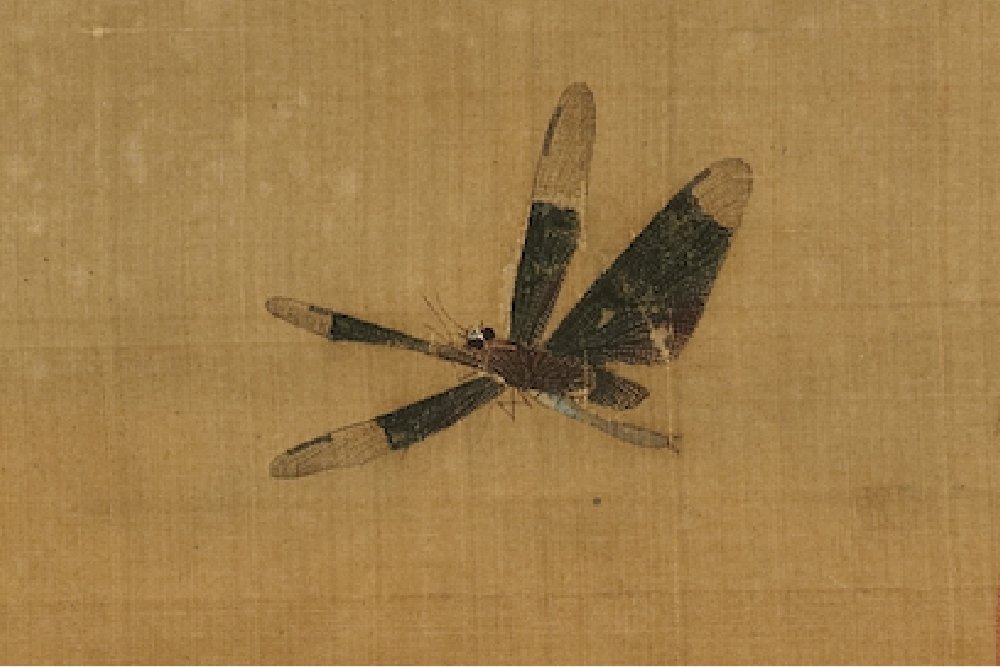
Song Xudi Wild Vegetables and Insects (Partial Dragonflies)
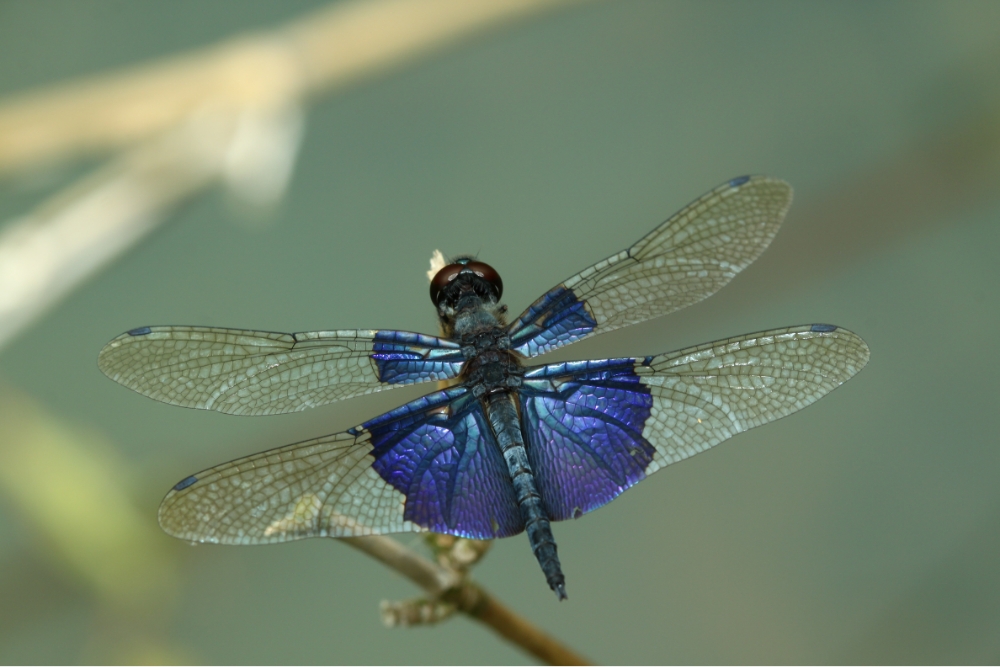
Triceratops
From the black markings on the wings in the picture, it can be inferred that it is a dragonfly of the genus Lysoptera. Lily-winged dragonfly, as the name suggests, refers to dragonflies with gorgeous patterns on their wings. Most of the species of this genus have large areas of blue-black or yellow patches on their wings with metallic luster, which are quite dazzling and eye-catching when flying in the sun. Most of the species of the genus Rhododendron in Taiwan inhabit low-altitude mountainous areas and prefer to live in still waters such as lakes and ponds.
Song Li Di Qiuhui Grass and Insect
At the bottom left of the screen, there are several grass and flowers that cover each other, and there is a praying mantis with arms raised. The curvature of the mantis from the waist to the head, the round and gentle contour of the little beetle's shell, the curvature of the tendon grass and the flowers and leaves are all neat and beautiful. But the best part of this work should be the fine coloring. For example, although the mantis forearm only hooks out the outline, the transformation of the yellowish brown, light yellow, dark green and other color layers on the forearm accounts for the more detailed shape. The richness and delicacy of the colors in the painting make people almost ignore the tense scene of predation and escape, life and death among insects, and indulge in the sensual charm of the flowers and leaves and the small bodies of insects in the painting.In the gap between the branches and leaves at the bottom left of this picture, there is a signature of "Li Di". According to records, he was a court painter who was good at flowers, birds, bamboo and stones in the twelfth century.
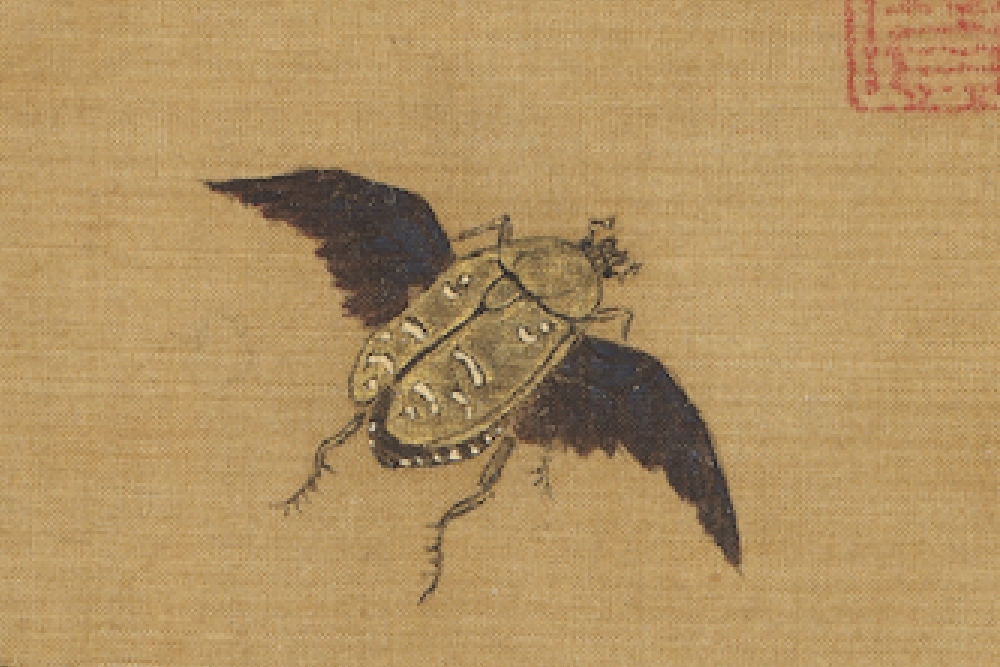
Song Li Di Qiuhui Grass and Insect (Partial Flower Beetle)
This picture is a very vivid drawing of the beetle in flight. The beetle belongs to the subfamily Coleoptera of the class Insecta, and is a diurnal beetle (diurnal), which is often seen. It has the habit of visiting flowers and sucking sap, and often helps plants pollinate, hence the name. The feature in the painting should be of a species of the genus Beetle.
flower beetle
The beetle's forewings are specialized into rigid elytra, which protect the membranous hindwings. Generally, the beetle needs to open the elytra of the forewing when flying, and then unfold the membranous hindwing that is folded under it and fly. But the flight of the beetles is very special. Their elytra does not open, but after retracting their abdomen, they cleverly extend their hind wings directly from the groove on the edge of the elytra to fly. Among the beetles, the elytra can be locked in the state of the elytra. Only certain groups of beetles and dung beetles fly. The author not only faithfully presents the flying appearance of the beetle, but also presents the important features of the beetle such as gill-leaf-like antennae, body plates, patterns and spines on the feet. Although the subtle observation is admirable, it is interesting that all The wing-painted shape is based on bird wings, which are far from insect wings, and it is possible to piece together such a picture without any sense of incongruity, one cannot help but smile!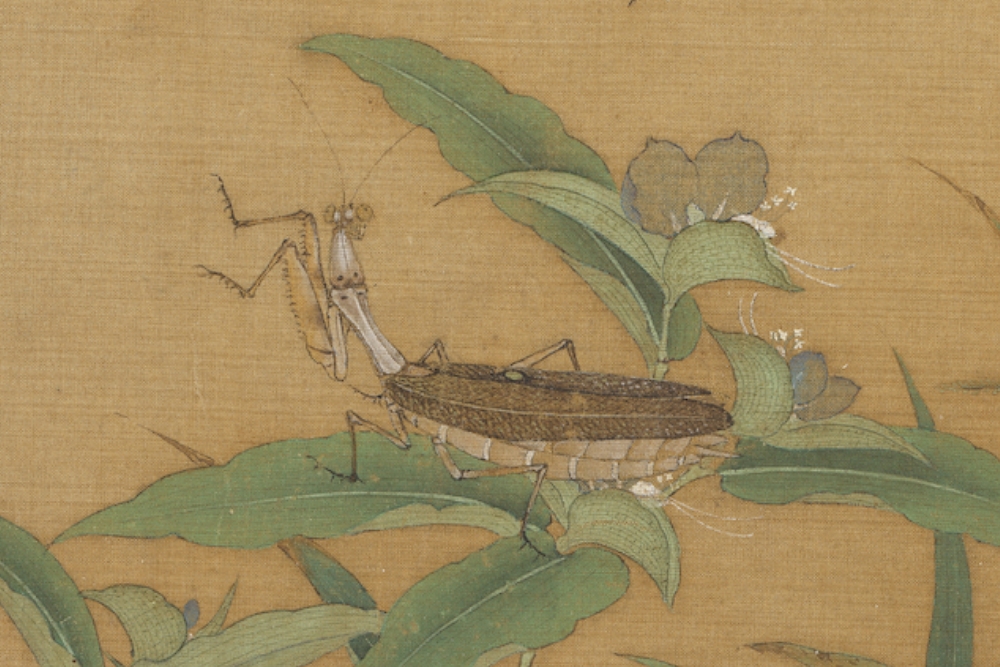
Song Li Di Qiuhui Grass and Insect (Partial Praying Mantis)
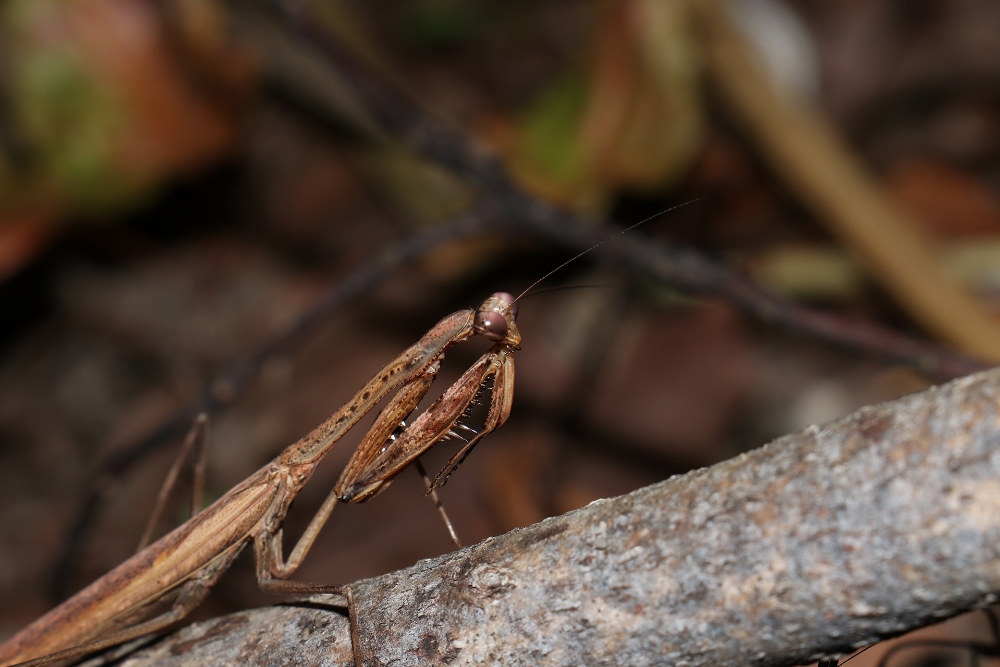
Brown Jing Tang
According to the appearance and markings on the pronotum, the stains on the forewings, and the wing moles, it can be inferred that this is not a mantis of the genus Knives, Phyllophos, or Axe. After removing these groups in China, there is another group of common mantises, namely the mantises of the genus Jing Mantis.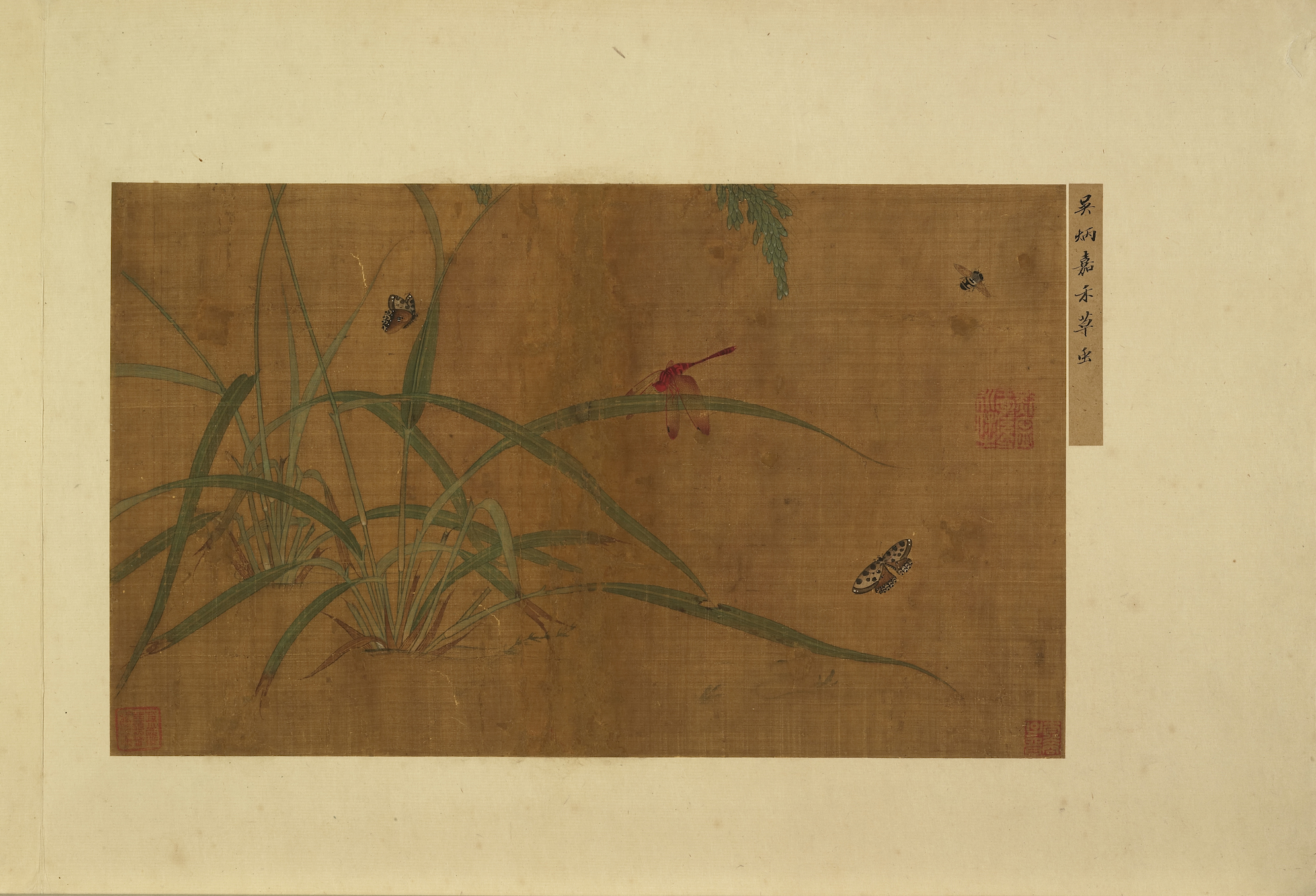
Song Wubing Jiahe Weeds and Insects
In the painting, the leaves of the rice are slender and softly stretched, with blue rice ears hanging down between them. They are not planted on dry land, but a paddy field. In addition to depicting layers of water patterns, the painter also showed the faintly visible algae under the water surface. This small corner becomes the stage for grass and insect painting. Can you find butterflies, flower flies, and dragonflies that the artist painted with fine brushwork flying among the rice?According to the inscription on the upper right, the author is Wu Bing, a court painter from Changzhou (active in the 12th century), who was famous for painting flowers and birds at that time. Parts of the leaves and rice ears in the painting are beyond the size of the painting. It is presumed that it was originally a long scroll. Due to damage, the intact parts were mounted in the current album form.

Song Wubing Jiahe Grass Insect (Partial Dragonfly)
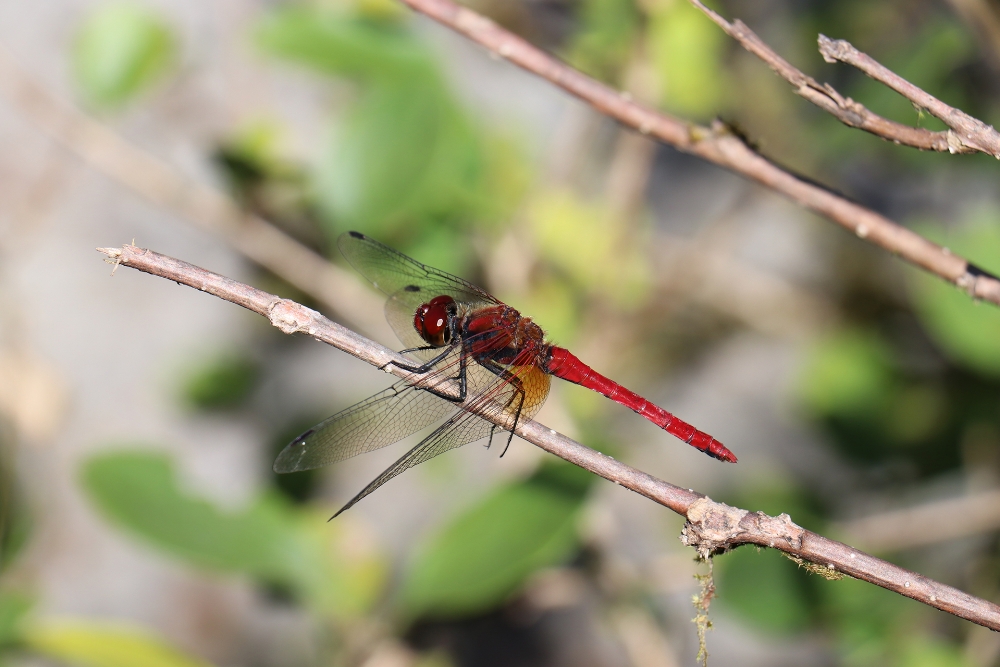
Yellow-based dragonfly male
In the author's picture, there are two rice plants, and the dragonfly, which is common in the field, is used as the painting object, which is also a common scene in Taiwan's water fields. Odonatas are often active near water, and the males will settle on more prominent objects near the water to occupy areas. When other species of dragonflies or males of the same species enter the area, they will drive away. In the painting is the most common species in rice fields, the dragonflies of the genus Odonata. The immature individuals of this genus are mostly golden yellow, while the mature males and some females are bright red, in a green area. Especially in the rice fields.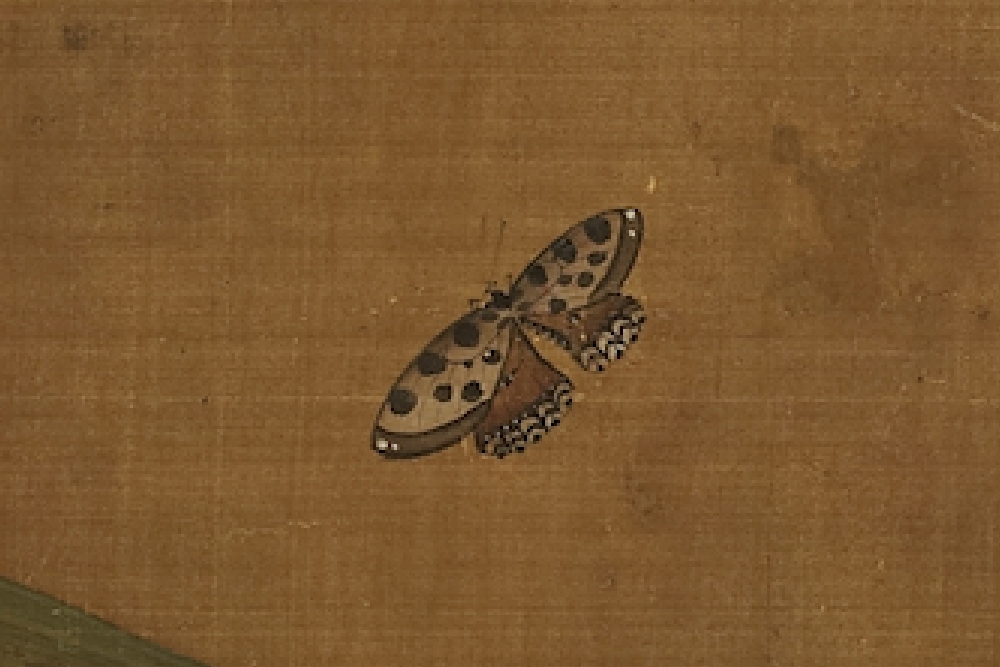
Song Wubing Jiahe Insect (Partial Butterfly)
In the picture on the right, the posterior margin of the hindwing buttocks of the butterfly is concave, which should be a species of Papilionidae; it is also arranged according to the linear arrangement of white spots on the abdomen, the white spots on the top corners of the forewings, the tailless hind wings, and the white spots on the outer edge of the hind wings. Judging from characteristics such as yellowish anal angle, it is suspected to be a yellow-edged swallowtail. However, the yellow-edged swallowtail (Papilio) is not found in the north of Fujian, so I don't know if the painter has the chance to see it; another possibility speculated in terms of stripes is the red nymphalate (red nymph), which is common in temperate regions. .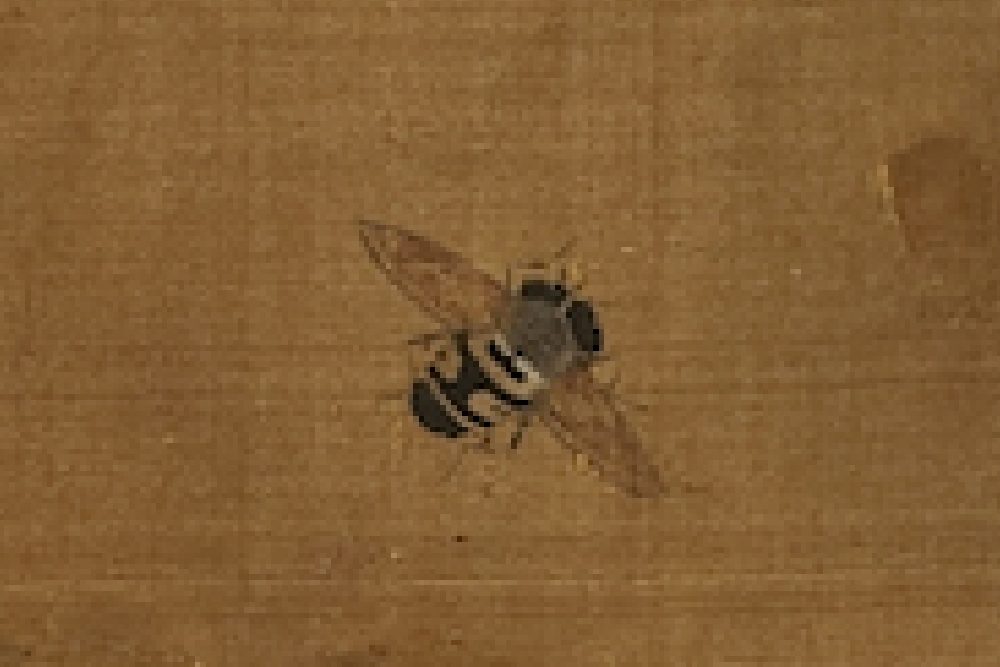
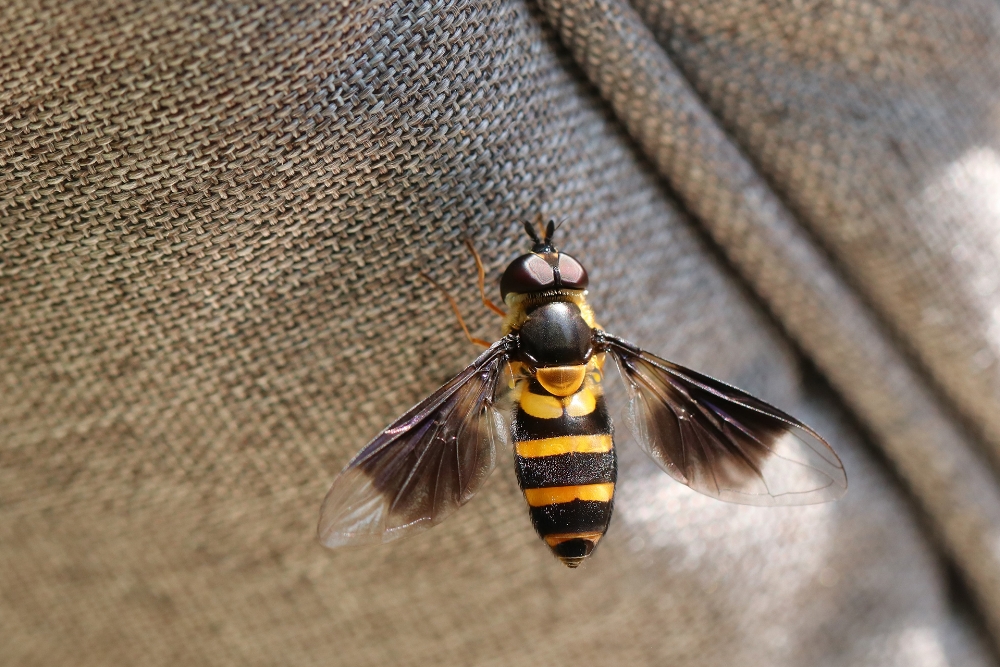
hoverfly
According to the characteristics of only one pair of wings and large compound eyes, it is speculated that the insect in the painting should be some kind of horsefly of the order Diptera. Since the description of the characteristics (such as wing veins, etc.) is not detailed enough, it is difficult to further identify it, but it is inferred from the abdominal pattern that it should belong to food. Aphididae. The hoverfly, commonly known as the flower flies, feeds on pollen and nectar. The adult bee-like pattern on the abdomen keeps predators away. This phenomenon in which non-toxic people look like poisonous ones is called Bayesian mimicry. The larvae of the hoverfly will prey on aphids and are one of the beneficial insects in agriculture.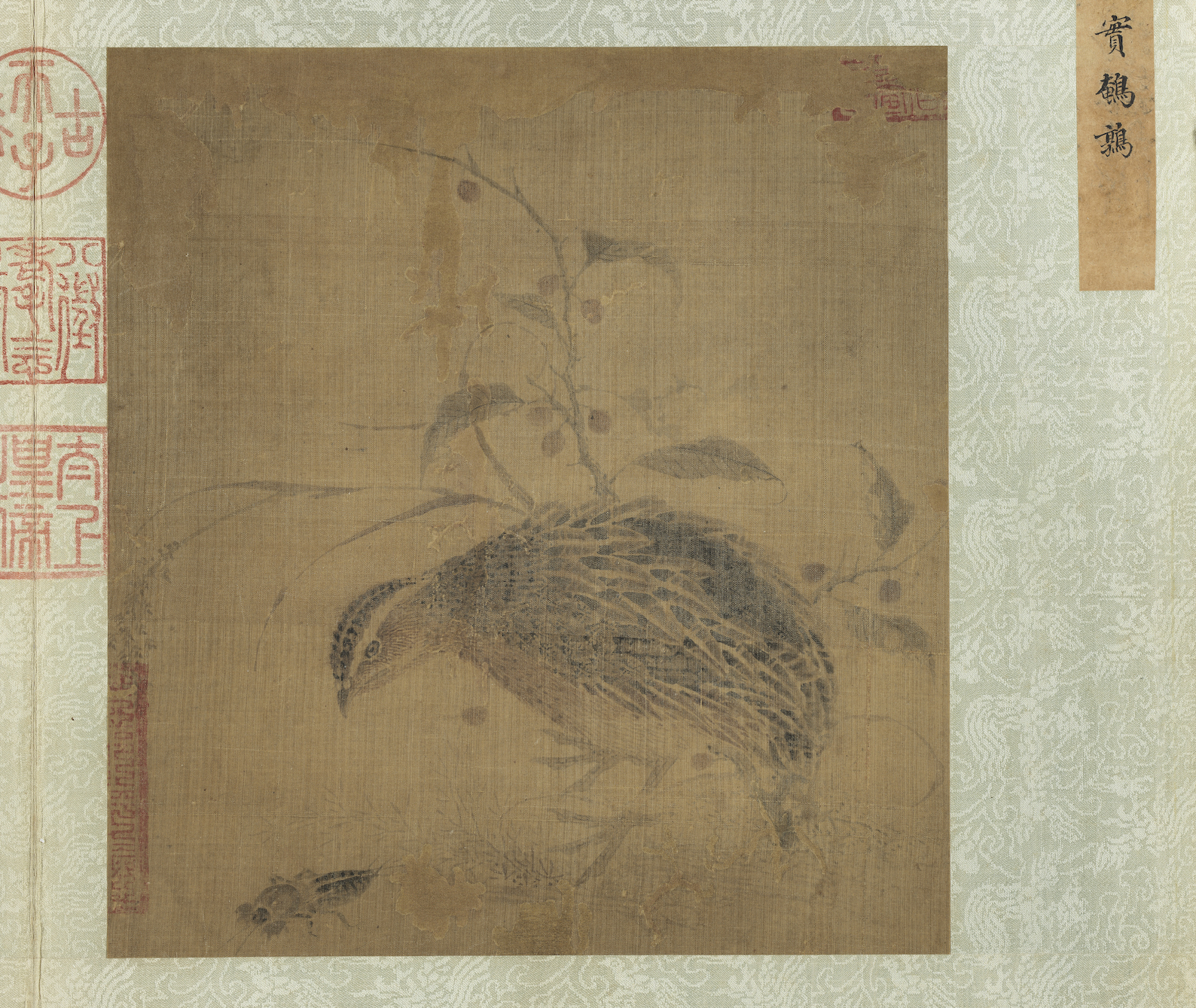
Song Cui Qi Shi Shi Quail
In the painting, the quail standing in front of the wolfberry bush lowered its head and looked at the ground, scrutinizing a mole cricket that might be eaten in the next moment. The seemingly quiet corner of the painting contains the tension of life and death in the natural world. In the painting, except for the quail's feet, which are outlined with lines, almost all other parts like mole crickets and plants use no outlines, but are directly dyed with ink, ochre, and white space to draw shapes and patterns. This technique, which does not use outlines, is often referred to as "boneless" drawing.The "quail" of "quail" is pronounced the same as the "an" of "safe", so the image of quail has always been very popular. The "goji berry" of autumn fruit has the meaning of longevity. "Mole cricket" is an insect that easily damages crops. Therefore , This "Qi Shi Quail" can be interpreted as the meaning of praying for peace and longevity and eliminating disasters.

Song Cui Qiqi Real Quail (Partial Mole Cricket)
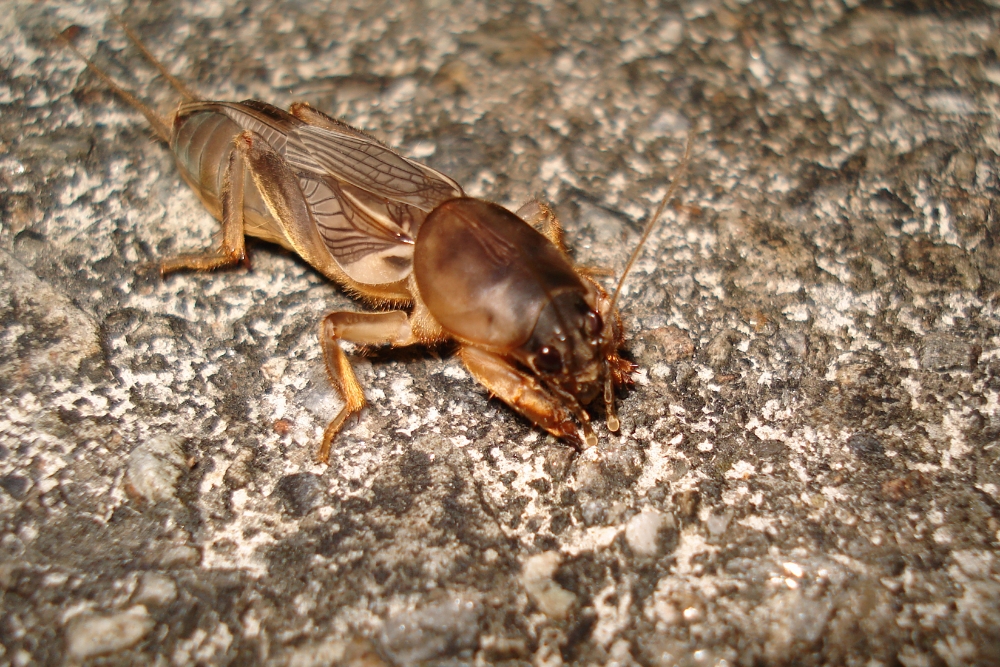
Mole crickets
Mole crickets (Gryllotalpa spp.) are a class of ground-dwelling orthoptera insects. They usually inhabit the soil and rarely appear on the surface. They feed on the roots and stems of plants, so they are regarded as agricultural pests. Their forefeet is specialized in the form of a rake, which is strong and powerful, and can easily dig channels in the soil. The hind feet are not as strong as other orthoptera, so the jumping ability is slightly inferior. Mole crickets have an oval pronotum and short forewings, which can reduce resistance when burrowing. The belly ends with a pair of slender tail hairs that serve as sensory functions. The physical features of the mole crickets in the painting are clearly depicted and are quite easy to identify. Although the forewings are short, males can still attract females by rubbing their wings to make noises; when the environment is disturbed or changed, the mole crickets can use a pair of hindwings to fly away from the original habitat.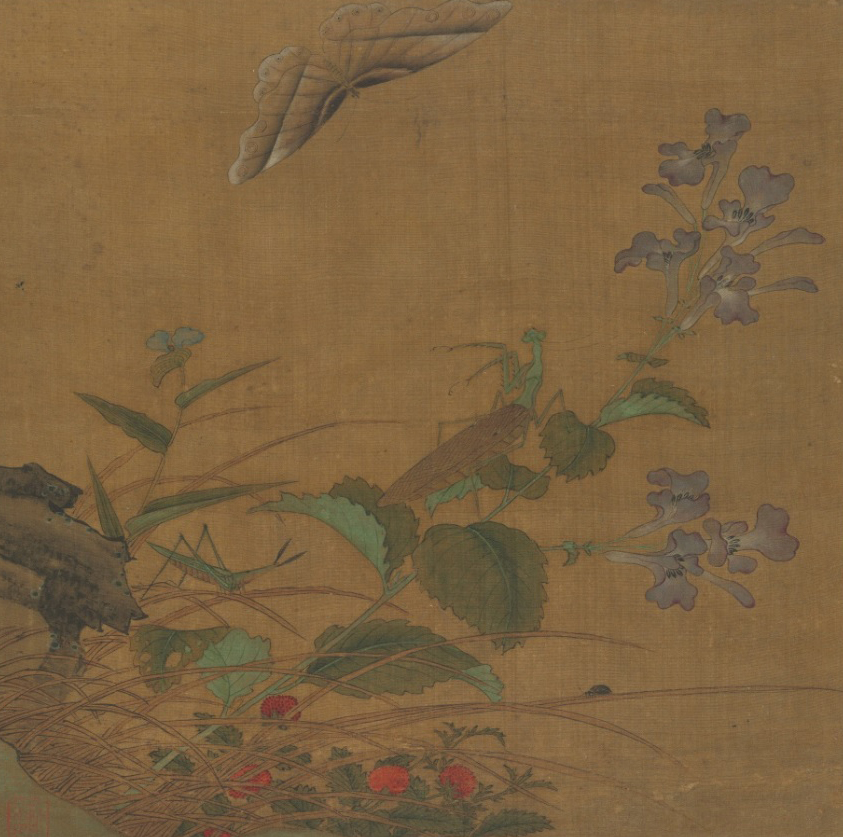
Biography of the Five Dynasties Huang Quanqi Shi Qiurong
Small blue-purple flowers fluttering in the wind along the stone edge, mantis domineeringly stepped on the flower stem and looked up at the flying butterflies. The whole image is rich in images and full of business, but I don’t know why it was completed in a hurry. The outlines of the withered grass are directly interlaced, and many colors are simply painted in one layer. Although it is said to be painted by Huang Quan (903-965), a master of flower and bird painting in the tenth century, it should be the work of a skilled grass and insect painter in the Ming Dynasty.
Biography of the Five Dynasties Huang Quanqi Shi Qiurong (partial praying mantis)
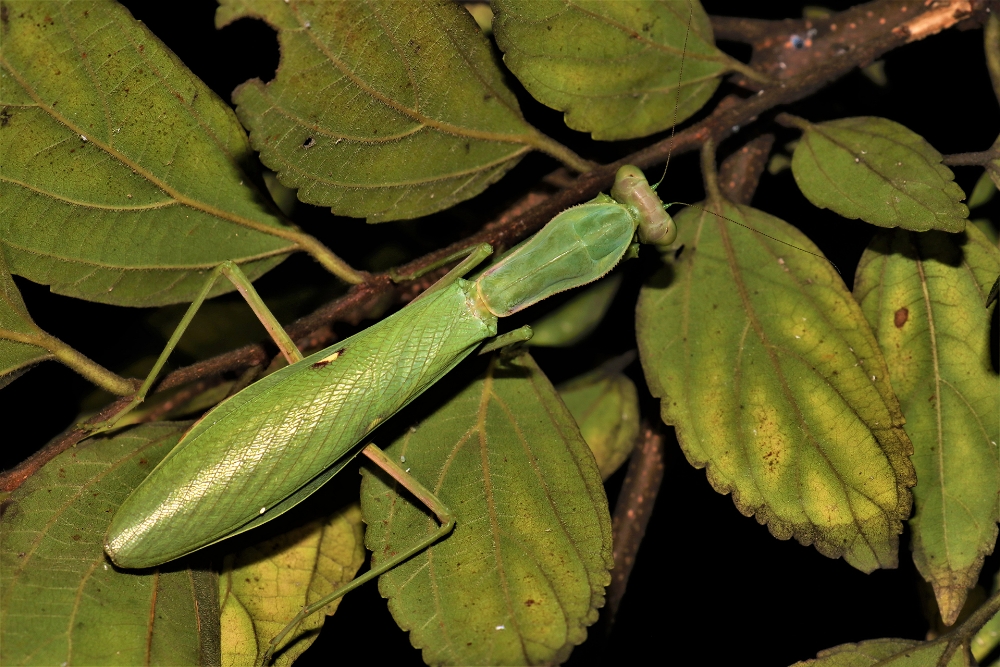
praying mantis
The body color of mantises can change with the environment, and most of them show green, brown and other colors similar to plants, which are very successful camouflage. They will wait on the plants for their prey to approach, and occasionally swing their bodies to pretend that the plants are swaying in the wind, so that the prey cannot be alerted to their presence. . The compound eyes of the praying mantis are made up of many small eyes that can track moving creatures within the line of sight. With super dynamic vision and powerful predation ability, the locusts and butterflies in the picture will become its delicacies.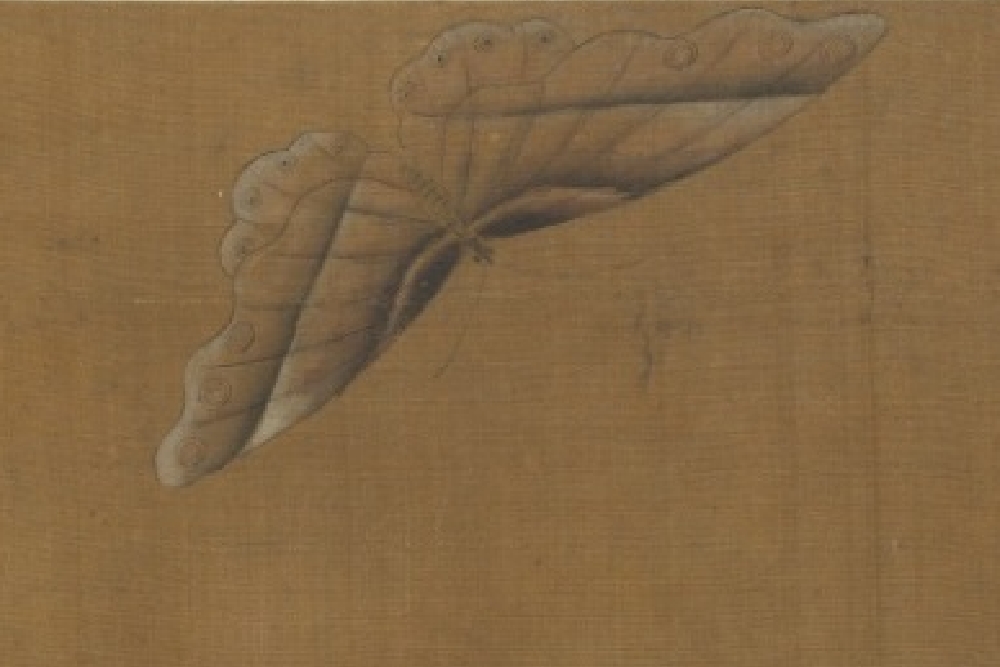
Biography of the Five Dynasties Huang Quanqi Shi Qiurong (Partial Butterfly)
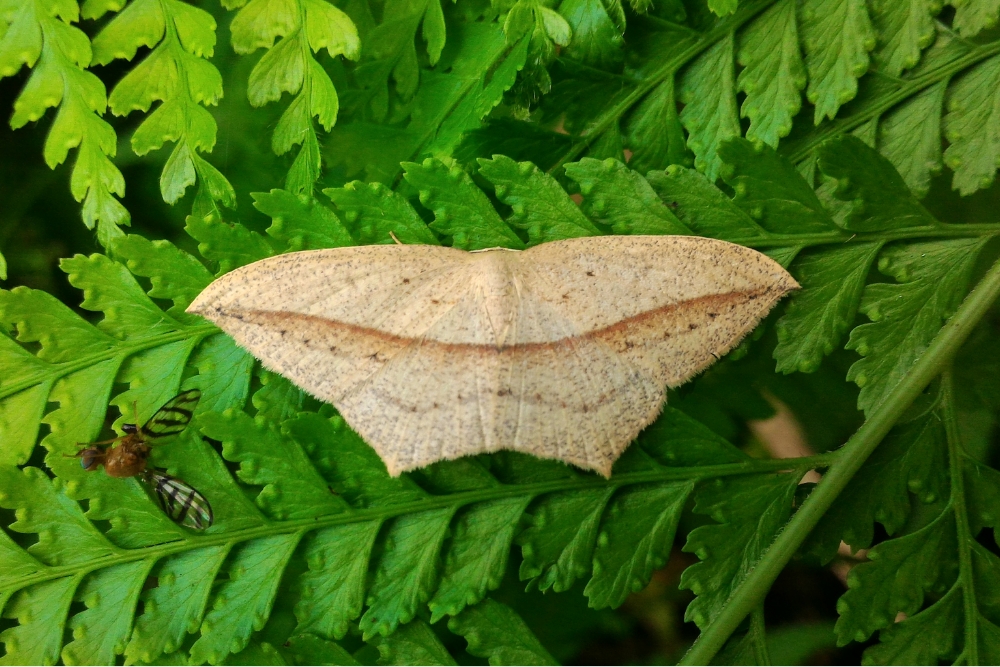
ruler moth
The prototype may be a ruler moth.
Mingsun dragon grass flower and butterfly
This painting depicts a pair of butterflies among wild grass and flowers, and is a wonderful work of "boneless" grass and insects. The proper term "boneless" refers to the fact that the painter does not use lines to outline the outline of the object, but directly paints the shape of the object with color, which is a very important type of traditional painting. Letting the color become the protagonist and emphasizing the change of color rendering is a particularly attractive part of the boneless technique.This painting is from the second opening of Sun Long's sketchbook in the Ming Dynasty. In the lower right corner, you can see the seal of the painter "Sun Long Books". Sun Long served in the court in the fifteenth century, and was good at the technique of ink and color dot dyeing. The painting silk he used was coated with glue first, so it was moistened with the pen but not smudged.
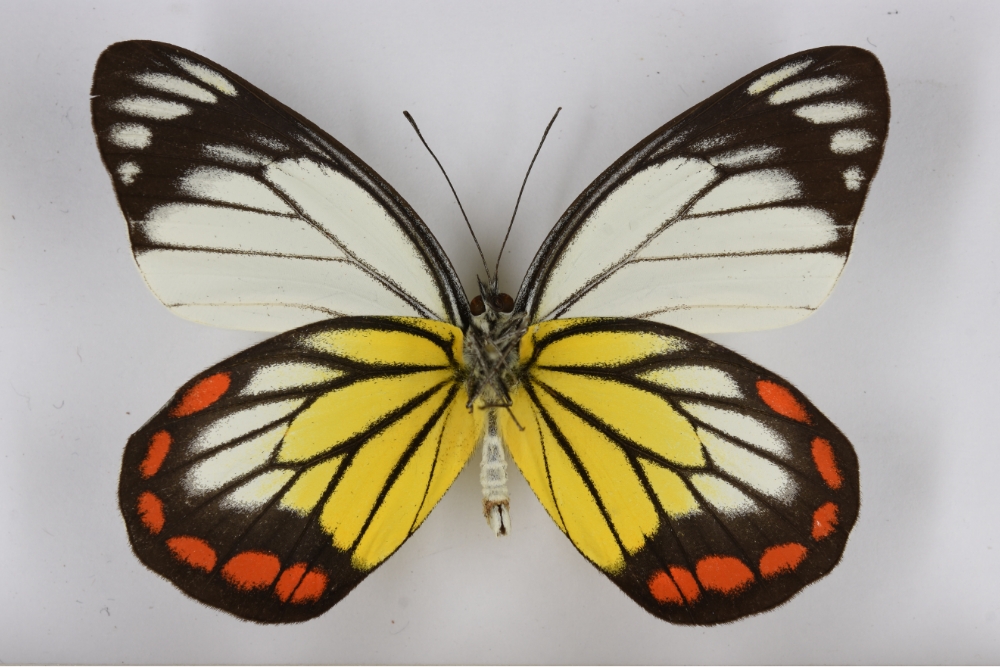
white pink butterfly
The author seems to be depicting butterflies, but not quite. Although the head, chest, abdomen, and feet are very abstract and slender, the individual on the right should be more similar to the white butterfly from the black spots on the end of the forewing and the red markings on the outer edge of the hind wings. It is only a tropical species and is only found in Yunnan and Guangxi in China. Guangdong and Hainan, the author may not have seen it.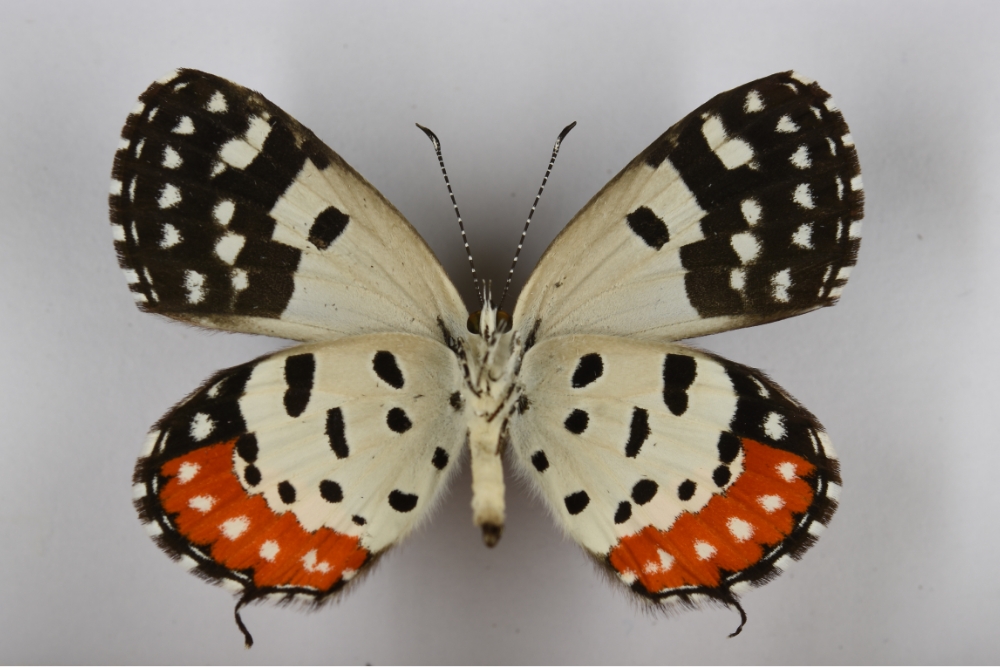
Tali Grey Butterfly
In the picture, the butterfly has black edges on its front wings and red edges on its hind wings, which is also in line with the characteristics of the Tali Grey Butterfly. However, this butterfly is only seen in Hainan in China, and the artist may not be able to see it. It is still to be verified as to its prototype. !
Green-winged tea-spotted moth
The individual features on the left are suspected of being a foot moth. The body size of the Moth family is large and small, but most of the adults are slender, with wide and thin wings. Most species are active at night, and a few are active during the day, so they have the opportunity to be framed with butterflies that are active during the day and be painted into paintings by the artist. However, it may also be difficult to judge correctly because of the thinness and slenderness presented by the boneless painting method.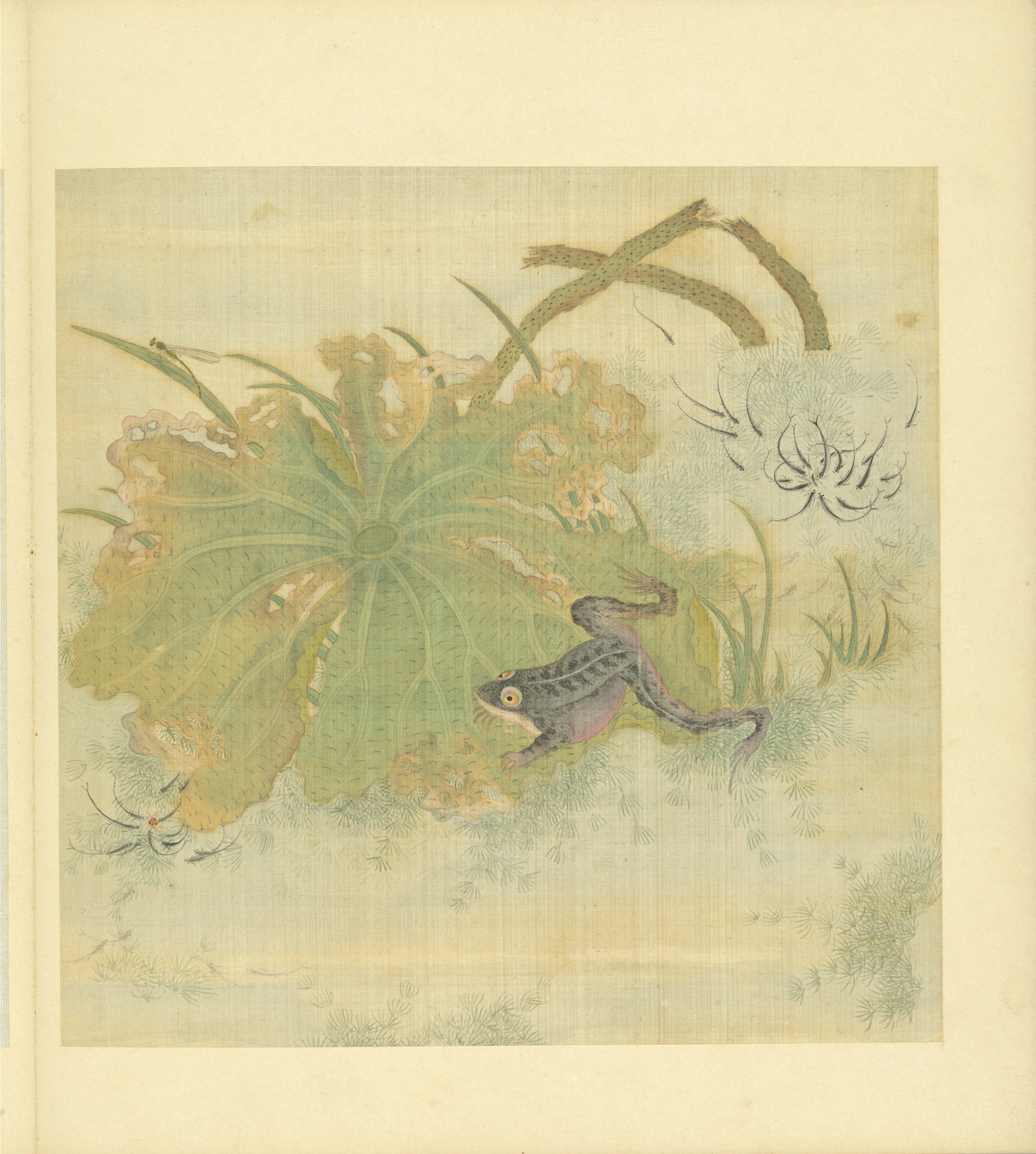
Qing'er, lotus frog, fish and algae
Arjun (17th-18th century), courtesy name Xianggu, was of the Shu Mulu clan, a native of Manchuria inlaid with the blue banner, and he served as a minister of the Ministry of Personnel. He is good at painting and is famous for painting eagles, tigers and other birds of prey. In the seventeenth year of the Kangxi reign (1678), he was commissioned to paint the lions as tributes from the West. He was a famous Manchu bird and beast painter.In this painting, the ecology of the pond in the autumn when the lotus leaves are drying up, is divided by the slightly broken lotus leaves. On one side of the lotus leaves, there is a damselfly parked on the grass, and the naive frogs are peacefully crouching. On the other side of the lotus leaf, among the algae, the flying insects that fell into the water struggled, causing a violent commotion as a group of fish swarmed and competed for pecking. Such a movement and a stillness, just form a contrast. The painter depicts the static damselfly frog with meticulous brushwork, first hooking thin outlines, and then applying and coloring layer by layer; while using freehand brushwork, he quickly draws a dynamic school of fish, with several arcs, slightly adding heads and tails, and adding finishing touches, that is, It explains the lively scene of fish scurrying and fighting for each other. The whole painting cleverly uses a lot of cool colors such as green and blue, embellished with a small amount of yellow with dead leaves and pink of frog belly. The elegant colors make people cool off the heat.
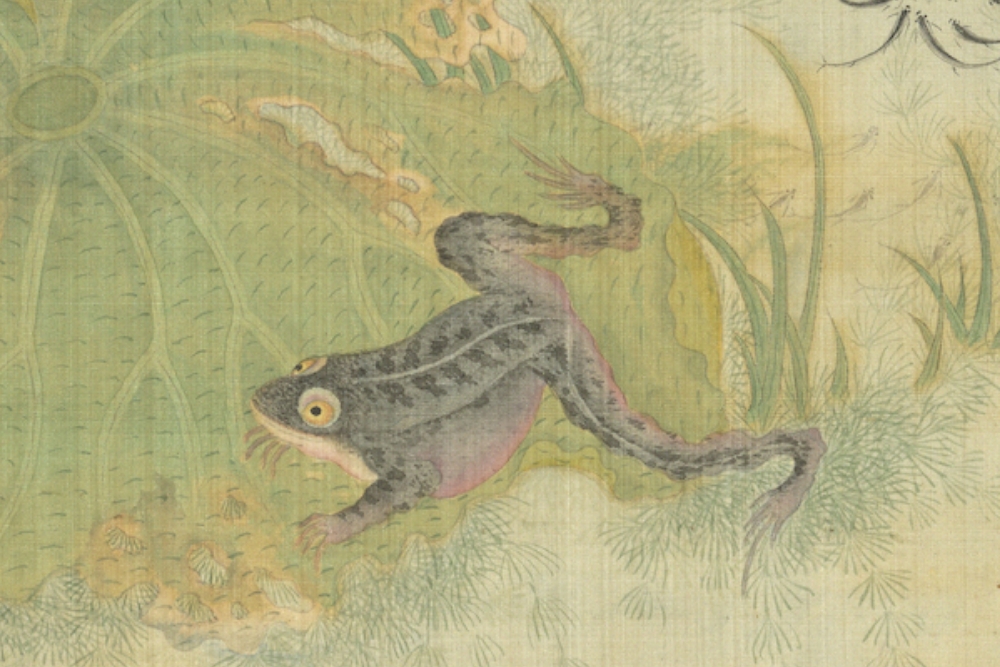
Qing al 粺, lotus frog, fish and algae (partial frog)
During the breeding season, amphibians will go to the water to perform breeding behaviors such as singing and courtship. Just like the frog in the picture rests on the lotus leaf, it is not for food, so it is not very interested in the ladybug that falls in front of the water; it is more like finding a suitable position, ready to show off its singing voice and start to attract the singing of the opposite sex. .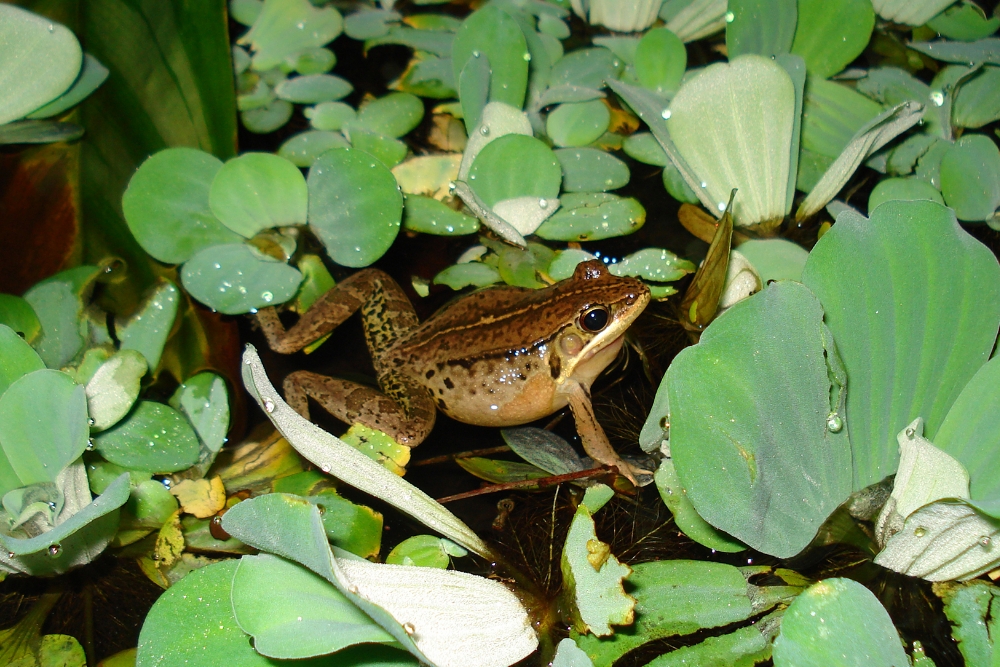
Spotted frogs courtship in the waters of a park pond
In the city, we can often observe male frogs of the native species of Frog pelvis in Taiwan in static waters such as ponds, showing the courtship posture in the painting.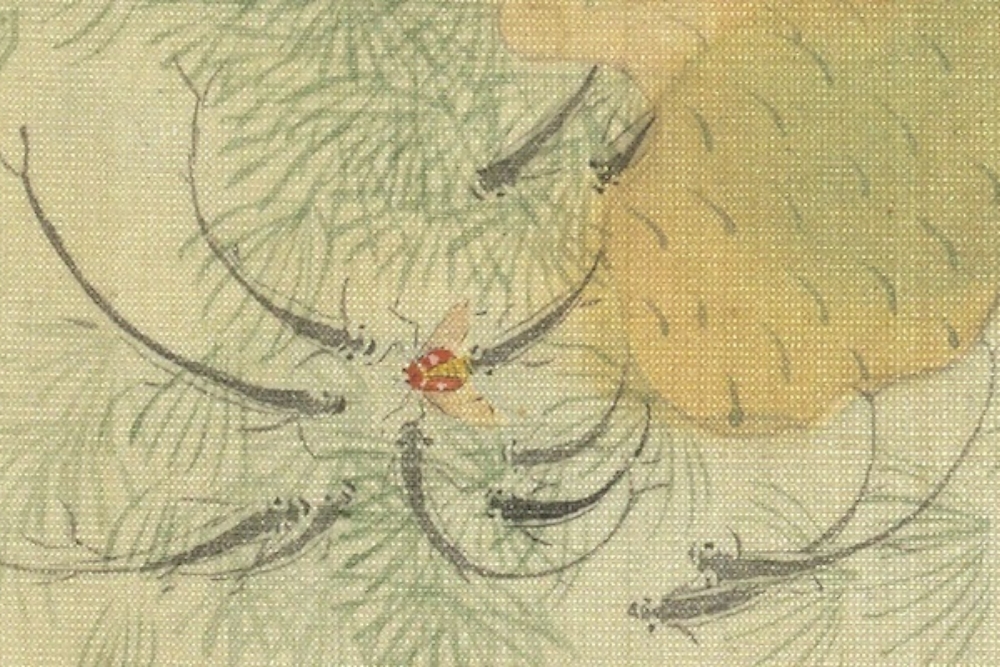
Qing'er, lotus frog, fish and algae (partial)
Ladybugs are insects of the Coccinellidae family Coccinellidae, with rounded dorsal bodies and often brightly colored bodies. The ladybug in the painting seems to be falling to the water in flight, showing the struggling appearance that the hind wings have not yet folded under the front wings, but it has already attracted fish who want to feast on them.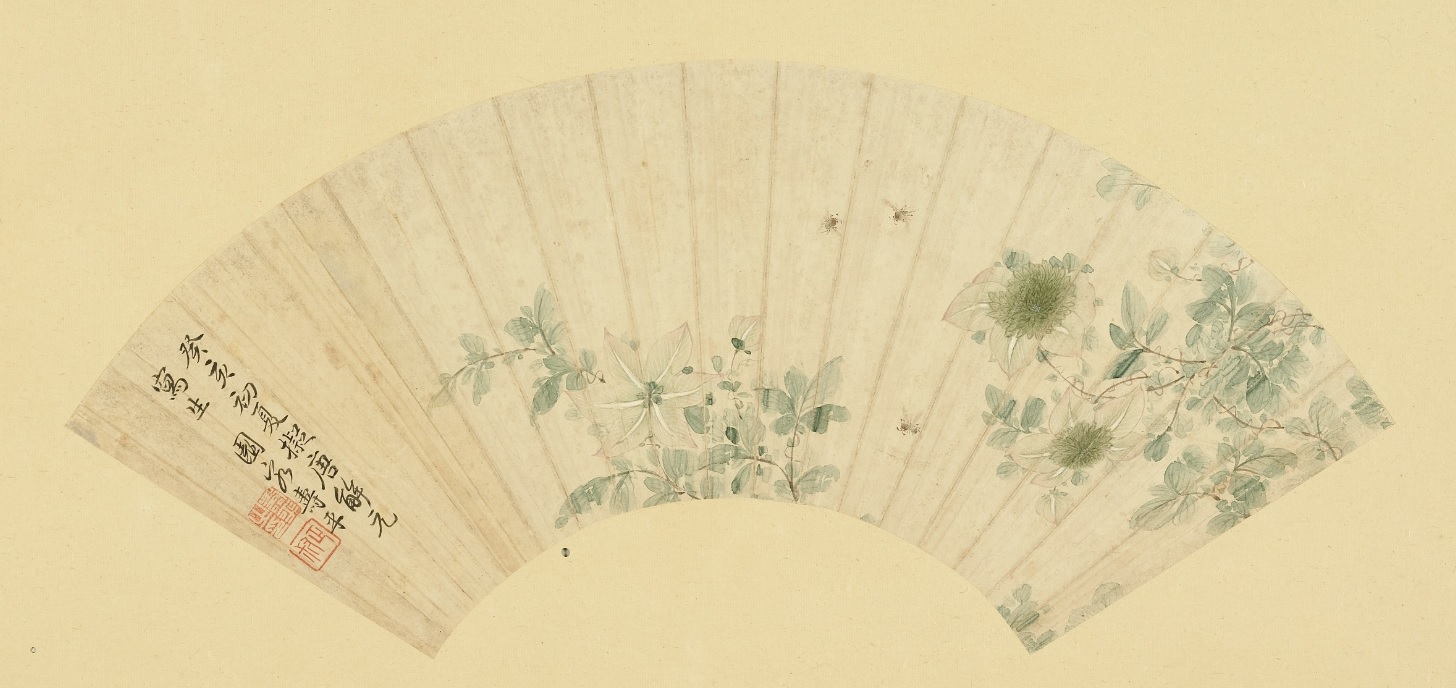
Qingyun Shouping Passionflower
This fan, Yun Shouping, uses both outline and boneless techniques. He wrote the flexed hind legs of the three little bees with thin lines similar to calligraphy Tetons, while the tentacles of the head were changed to round and slow pauses. In addition, he subtly dipped a little ink on the tip of the pen to suppress nature. The halo blooms, successfully showing the hazy impression when the fins vibrate.The flower species in the painting is suspected to be clematis, with six calyx petals. In addition to the veins depicted by white powder, there are subtle color changes from light green to light red, showing Yun Shouping's superb control over water smearing. Although the inscription mentioned that this work resembles Tang Yin's style, it seems that the proportion of self-portrait of sketching is higher. Yun Shouping (1633-1690) was good at applying the "boneless" technique, and through the smearing of richer water color materials, he completed the shape of the depicted objects. He was the founder of the "Changzhou School" and "Piling School" flowers in the Qing Dynasty.
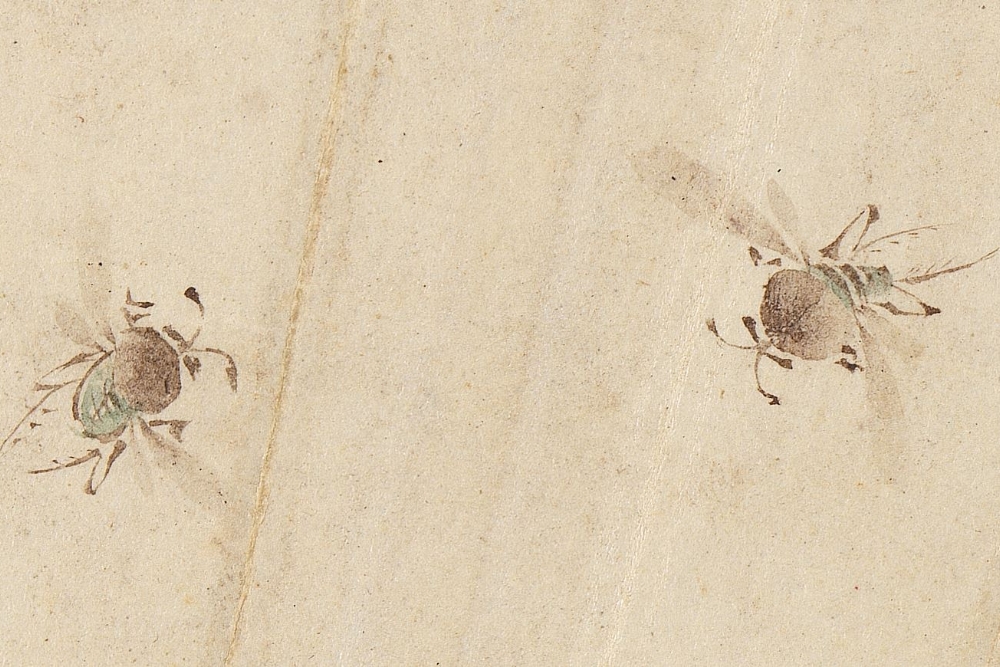
Qingyun Shouping Passionflower (Partial Bee)
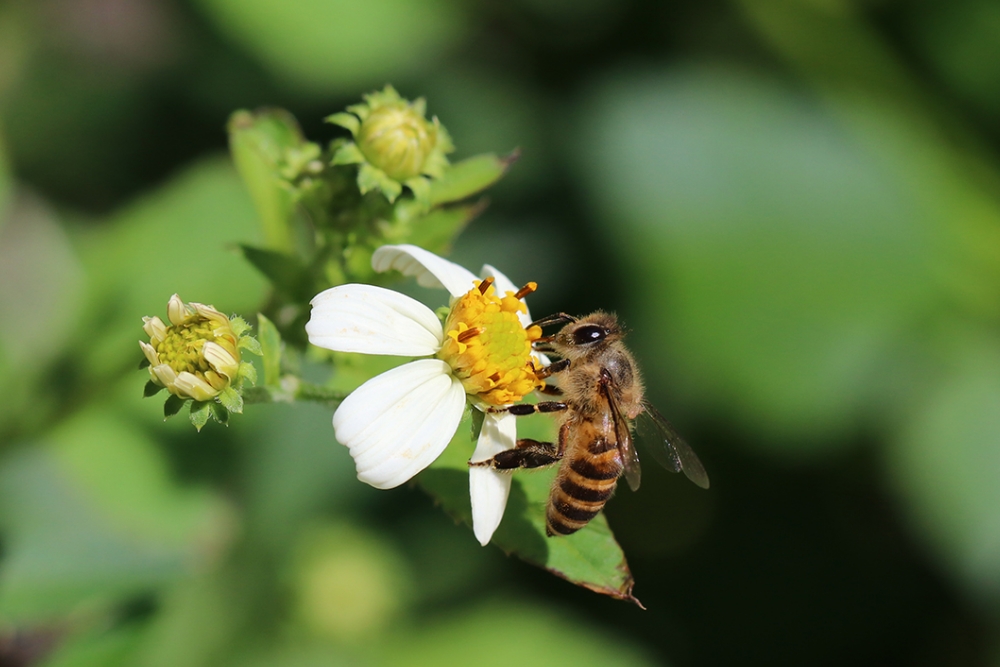
bee
The insects in the fan paintings should be some kind of bees of the order Hymenoptera, but it is difficult to further identify them because the characteristics are not detailed enough. Judging from the ratio of flowers to bees and the appearance of several identical bees at the same time, it is speculated that the insects of the genus Apis are commonly known as bees. Bees are eusocial insects, and their distinguishing feature is that the hind tibia has a pollen basket (corbicula) structure. Whether in natural or urban environments, we can easily observe the behavior of multiple bees visiting flowers together for nectar. There are only two species of Bee genus recorded in Taiwan Island, namely the native oriental bee (A. cerana) and the imported Italian bee (A. mellifera) raised by most beekeepers.Does the artist need to observe insects well before they can draw them? In fact, painters can also draw grass and insect paintings by copying other painters' grass and insect paintings, or by learning various insects published in "Paintings of Paintings"!
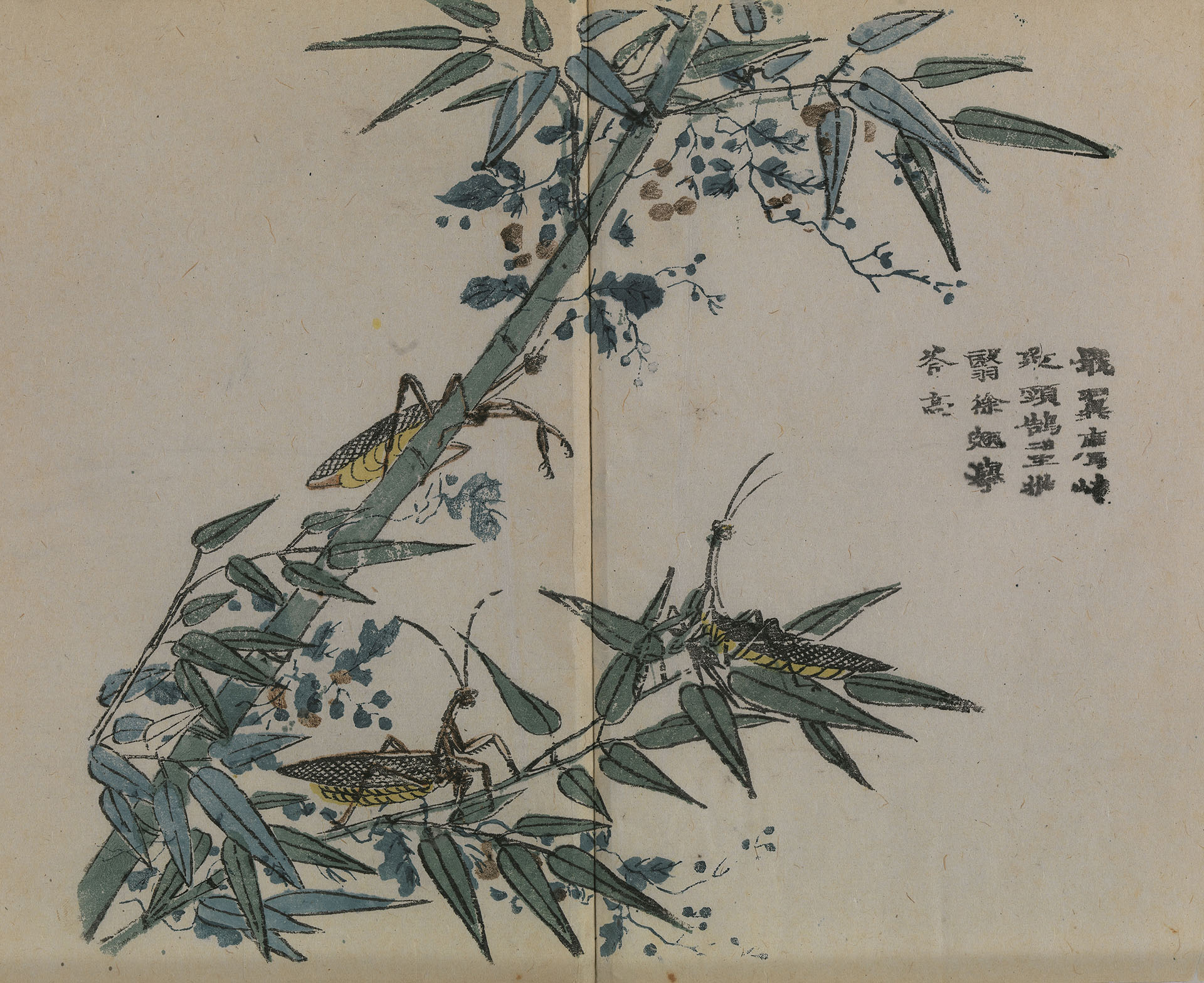
The painting manual of the king of Qing Dynasty in the mustard seed garden
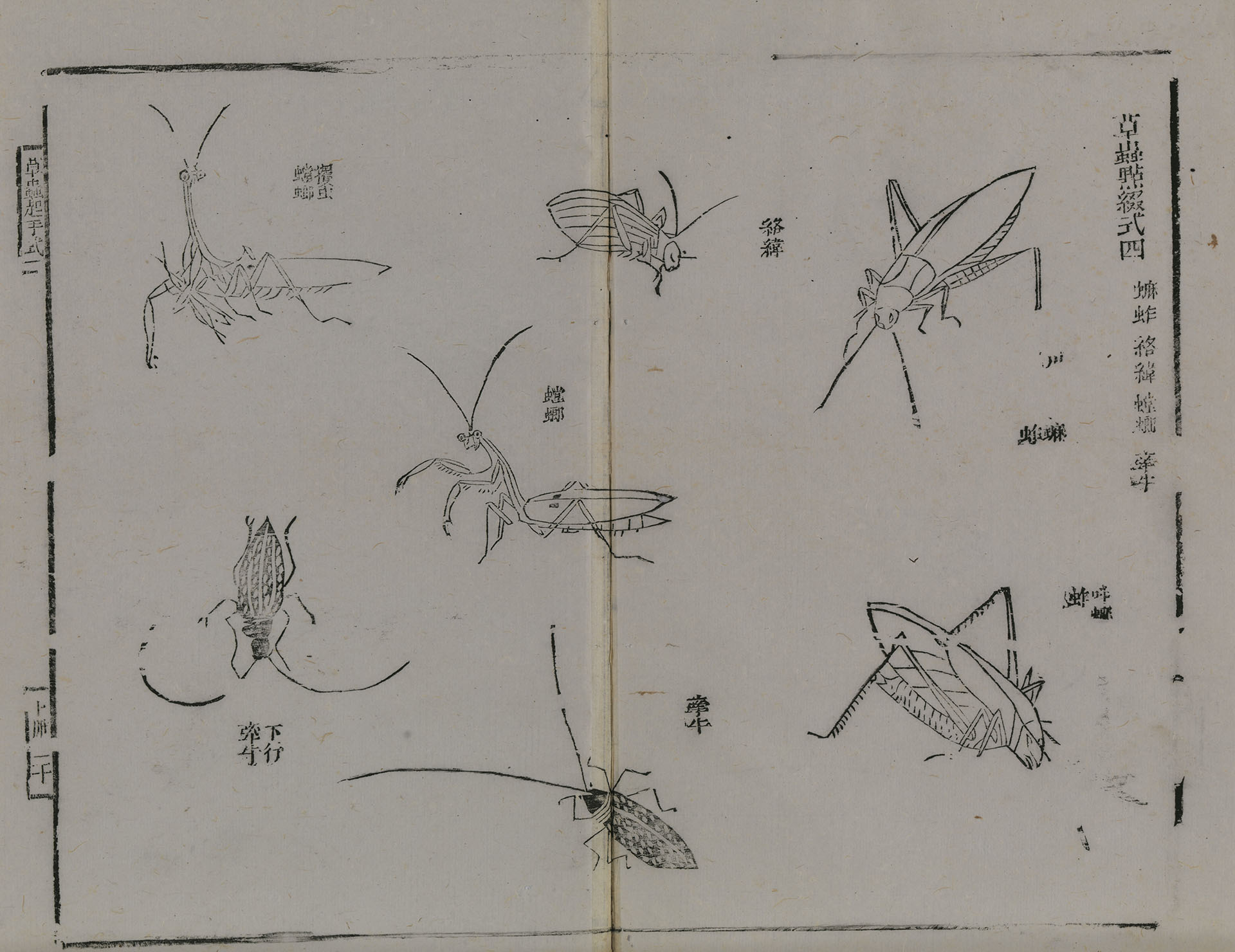
The painting manual of the king of Qing Dynasty in the mustard seed garden
"Paintings of Mustard Seed Garden" is a famous "Painting Manual" compiled in the early Qing Dynasty, which contains special volumes that teach the description of "grass, insects and flowers". Taking the praying mantis as an example, in addition to providing the shape and posture of the mantis, it also has the appearance of combining with vegetation. Even a painter who has never seen a mantis, he can draw a gourd and draw a similar image.An image that is carefully drawn by observing insects is not necessarily a "grass and insect painting". For example, the wall chart for teaching, the image itself is fine and accurate, but the focus is to let students know the shape and structure of insects. The grass and insect paintings praise the abundant vitality that is widely distributed in nature, and convey a tranquil atmosphere when gazing at tiny objects. The two depict insects with different goals.
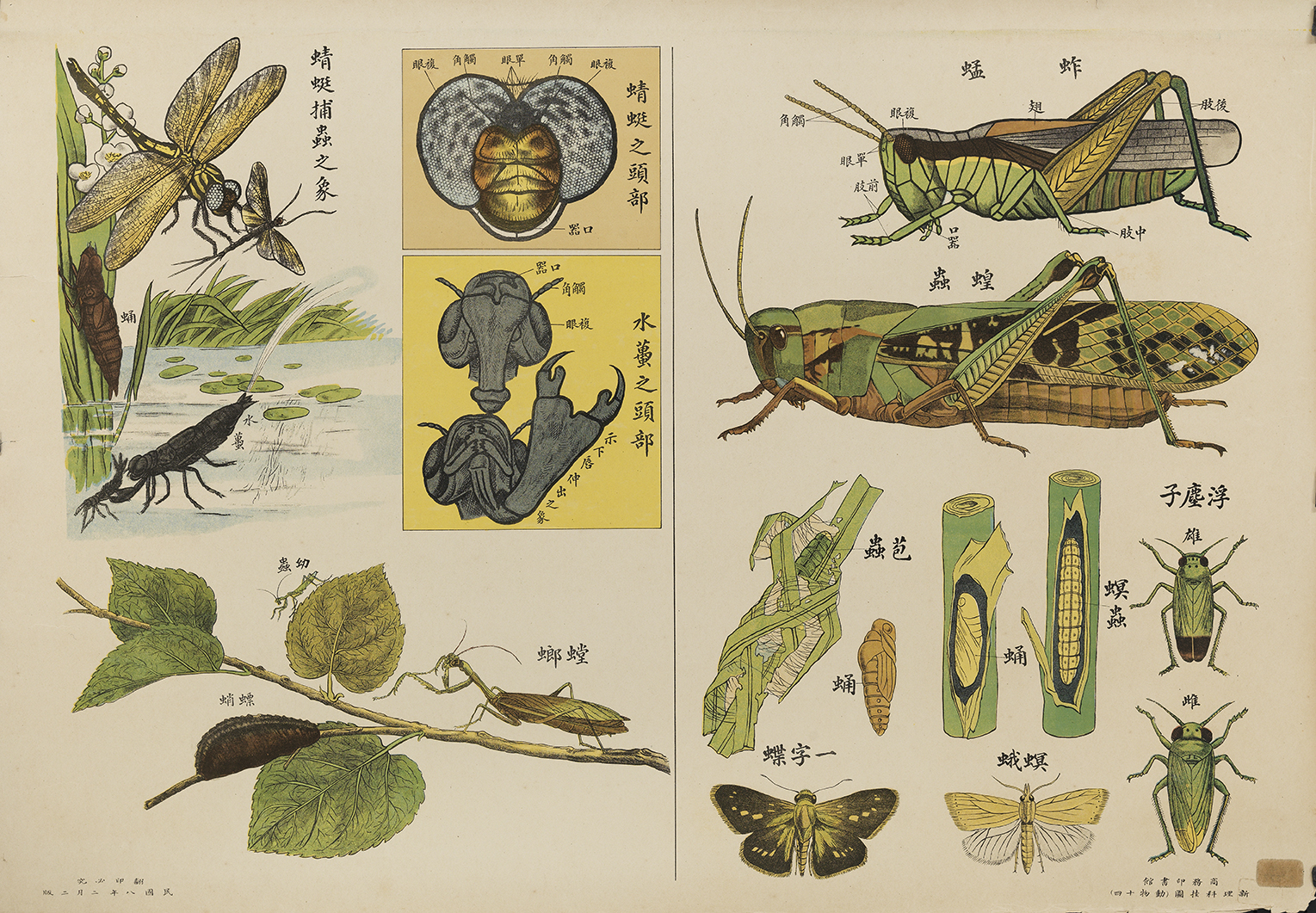
Science Wall Chart of the Republic of China
This rare science wall map is a version printed by the Commercial Press in the eighth year of the Republic of China (1919), which may have been a teaching aid in the palace at that time. These science wall charts also provide images of insects, their purpose is more than to provide a description of the parts and organs of the insect, and to explain the appearance of the various stages from the egg to the adult. Taking the praying mantis as an example, the branches depict the mantis egg sac "sheath", mantis larvae, and adults after peeling for several times.In the series of science wall charts in the collection of the Qing Palace, the imagination space given to the creatures by the painter is no longer in the paintings. The style is obviously less elegant and full of realistic records, so its function is closer to the graphic teaching purpose of scientific teaching aids. If you appreciate the science wall chart carefully, you will find that it incorporates many popular science details, including ecological descriptions about the life history and habitat of dragonflies, mantises, moths, and butterfly; The description of the head structure, especially the predation structure of the water dragon—the lower lip, the detailed structure is drawn in great detail; there are also taxonomic comparisons, such as the comparison of two orthoptera species (grasshoppers, locusts), and floating dust Pattern differences between males and females. Behaviorally, dragonflies also appear to prey on mayflies, water cockroaches spray water to advance and hunt prey, and mantises clean and capture their feet.
However, there are still mistakes in the biological exploration in the picture. First, the mouthparts of dragonflies when catching mayflies have become foot-like catching structures. The second is that the water spraying behavior of water cockroaches often occurs when it is used to avoid natural enemies, and it is less likely to occur at the same time as predation. The locust refers to a member of the Orthoptera - Brachycephala - locust family, and the grasshopper is another name for the locust. In the comparison diagram between the grasshopper and the locust, we can say that there are 2 kinds of locusts in the picture, or there are 2 kinds of grasshoppers All are established, and should not be mistaken for the difference between grasshoppers and locusts.
The meaning of grass and insects
"Book of Songs" compares flies to villains who spread rumors to hurt others; "Chu Ci" warns the soul that wanders around indiscriminately and may be bitten by giant bees and ants; "Mantis catches cicadas, and the oriole is behind" is a familiar idiom... many Small insects have accumulated rich meanings in literature and folklore because of the homophonic or biological characteristics of their names. Insect paintings not only show the characteristics and beauty of these tiny animals and plants, but also express the sentimentality of the rise and fall of life, but also have the meaning of blessing and even exhortation. How many allusions do you know about insects? What might these insects mean in the eyes of the ancients?
The ancients believed that the larvae of cicadas shed the dust from the original dirty ground, transformed into feathers, and thus became an important symbol of purity and rebirth, and were deeply loved by scholars. Cicadas that emerge from the ground in summer, after climbing on trees to emerge, can only survive until autumn at most. Therefore, the short-lived cicadas that lasted for two or three months often made Sao Ren Moji feel sad for the fleeting passage of life and time.

Qing imperial brush of the Book of Songs "Three Chapters of Blueflies"
The full name of "The Book of Songs with Royal Brushes" is "The Complete Collection of Books and Paintings". According to the inscription, Emperor Qianlong (1711-1799) ordered court painters to copy the "Book of Songs" by Ma Hezhi in the Southern Song Dynasty, and filled in the missing parts. The three hundred and eleven chapters of the Book of Songs are written in four characters of Zhen, Cao, Zhuan and Li. "Bluefly Three Chapters" is a poem in "Xiao Ya" that satirizes listening to slander. It uses the image of a fly as an analogy to slander people, which is quite vivid. In the painting, swarms of flies are constantly spreading the source of chaos, and the two seem to be disturbed involuntarily.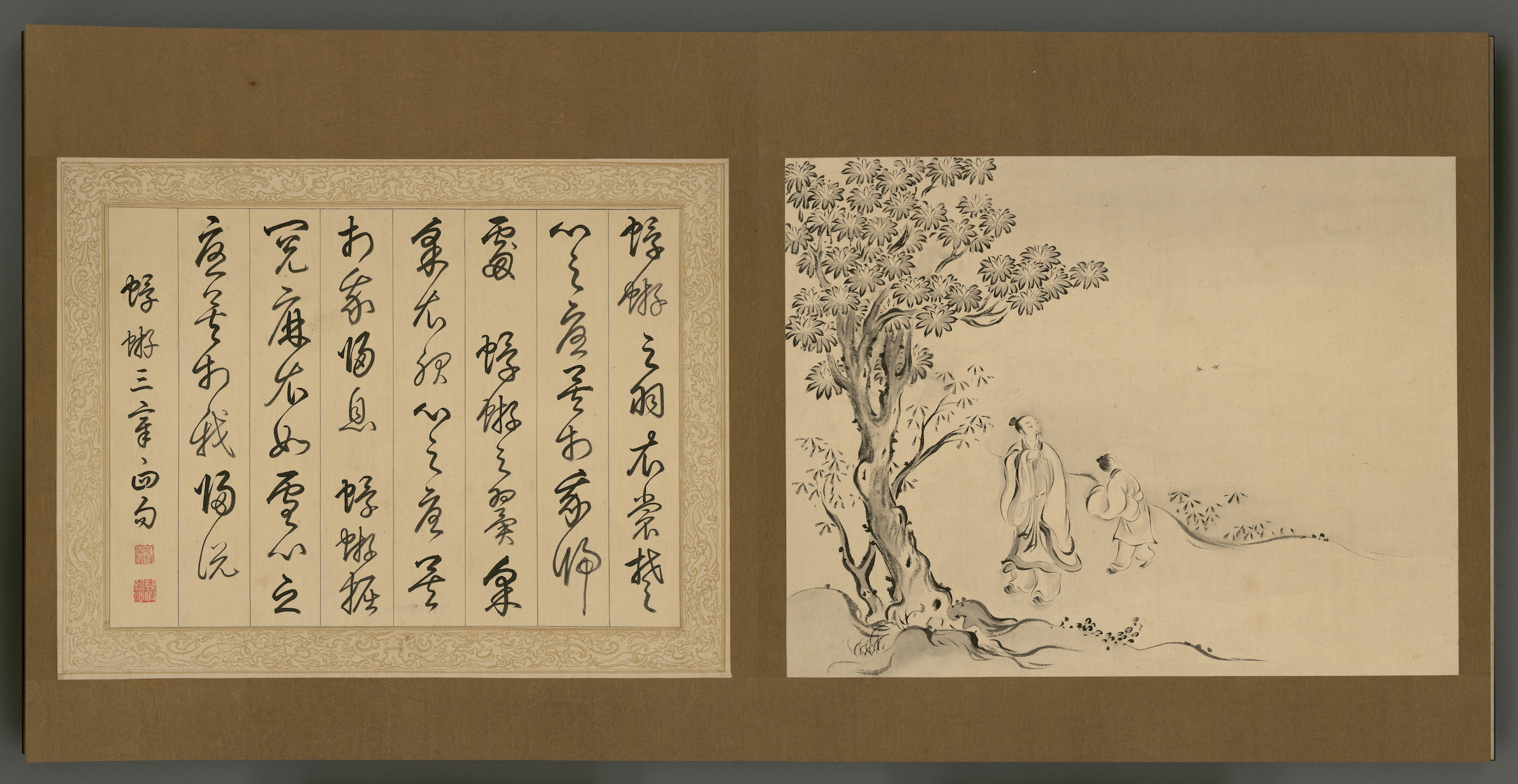
The Book of Poetry in Qing Dynasty's Imperial Pen "The Three Chapters of the Mayfly"
"Mayfly Three Chapters" is one of "Cao Feng" in "Book of Songs". The author borrows the mayfly, a small insect that lives and dies, to sigh the beauty of life's short-term, and the confusion of life in the face of death. In the painting, the master and servant all look back at the mayfly in the air, perhaps thinking about the various meanings of its own existence from the short life cycle of the mayfly.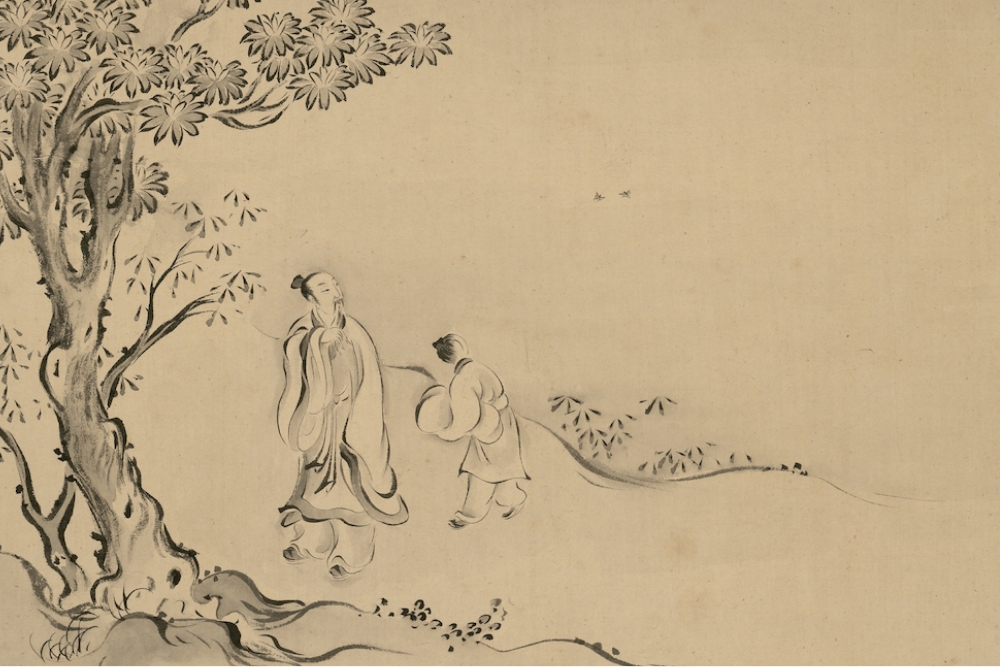
The Book of Poetry in Qing Dynasty's Royal Pen "Three Chapters of the Mayfly" (detail)

ephemera
Mayflies are aquatic insects belonging to the order Mayfly. They live in waters during the juvenile period, and only land in the adult period and no longer eat. Because the adult lifespan is very short, literati have always been full of infinite imaginations about the life of mayflies. Another special feature of the mayfly adult stage is that it always collectively emerges for flight pairing. This ritual-like breeding behavior is called "marriage flight", and marriage flight is also common in ants, termites and other insect species. When you go to the creek for recreation, you may wish to look around to see if you can observe the grand occasion of the mayfly's collective feathering and marriage flight.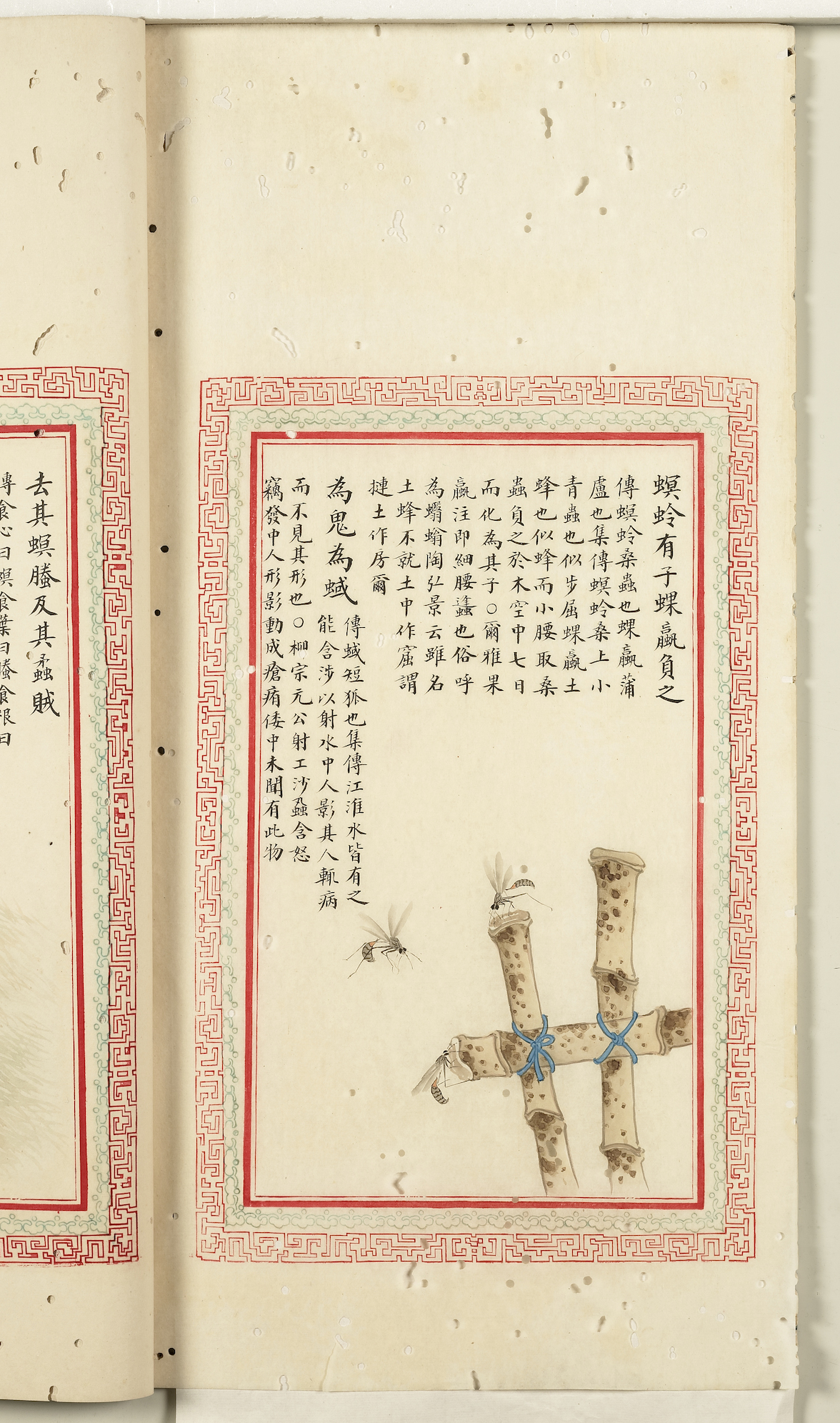
A Textual Research on Qing Mao Poems and Objects: "The borer has a child, and the scorpion bears it"
Among the ancient and modern versions of the Book of Songs, this book "Mao Shi Pinwu Tu Kao" occupies a unique space for illustrations, and the painter's attention to the appearance and habits of creatures can be said to be unique. The author Gang Yuanfeng (1737-1787) mentioned in the preface that his purpose was to allow children to correctly understand the creatures mentioned in the text by looking at the pictures when reading the Book of Songs.Taking the page of "The borer has a child, and the scorpion bears it" as an example, in addition to copying the "Book of Songs" and its annotations, it also depicts the "scorpion" commonly known as the mud pot bee sealing the larvae of the larvae into the pores of the bamboo fence. 's appearance. The ancients observed that the larvae of the larvae, "Laceworms", did not grow into moths, but flew out of the mud pot bees. Therefore, this phenomenon is likened to education, which can make people change their faces. And "borer" has also become synonymous with "adopted son".

scorpion
The terms scorpion and lacewing were first seen in "Book of Songs‧Xiaoya", "The lacewing has a son, and the scorpion bears it." Pteran larvae are captured back to the nest as food for their own larvae, not to take care of it!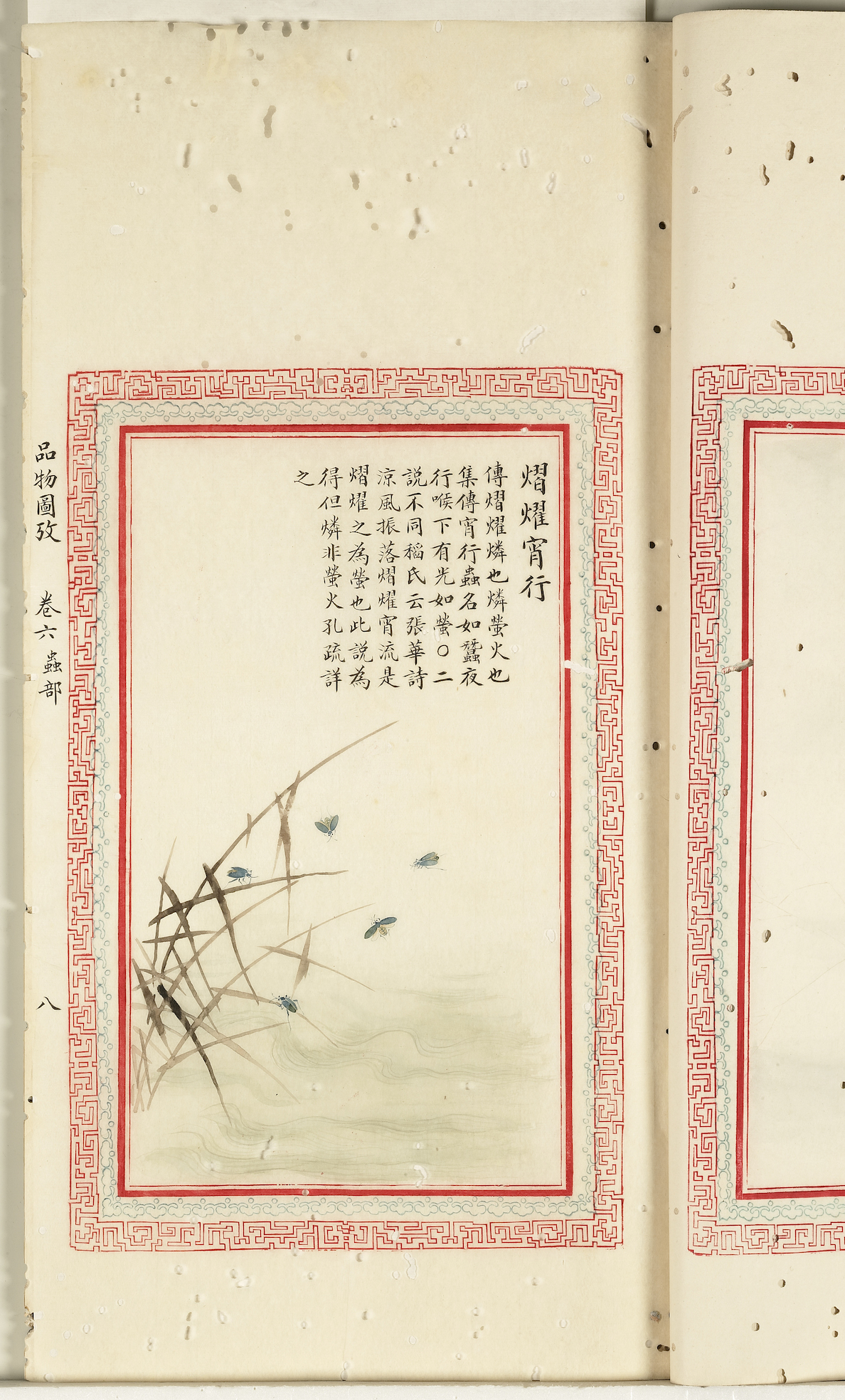
A Study of Qing Mao Poems and Objects Map "Yi Yao Xing Xing"
"Book of Rites": "Rotten grass is firefly". The ancients believed that fireflies were transformed from rotten grass, and due to their luminous properties, they have always been curious about this creature. This picture "Mao Shi Pinwu Tu Kao" was originally compiled by Okamoto Fung (1737-1787) in Japan, and was drawn by painter Tachibana Kunio (date of birth and death unknown). There are two sets of color-painted hand-painted editions in the National Palace Museum, Taipei. The composition is slightly different from the original, but the content in Chinese is the same as the original in Japanese. Fireflies in classical poetry are often used to describe quiet and beautiful nights, such as "Qing Luo Xiao Fan Fluttering Fireflies" in "Autumn Evening" by the Tang Dynasty poet Du Mu (803-852). However, this opening depicts the words in "Book of Songs‧Binfeng‧Dongshan", in which the expedition warriors miss their hometown, think of the desolate countryside, the overgrown weeds and no one to harvest them, and the waterside rot grass turned into flying fireflies. Some people think that the light of fireflies is similar to the ghost fire of soldiers who died on the battlefield, which is similar to the Japanese Miyazaki animation "Grave of Fireflies" which associates fireflies with the wish to pray for peace. The entire body of the firefly is dyed blue-green to accentuate the yellow glow from the firefly's tail.
red-bellied firefly
Fireflies are insects belonging to the family Lampyridae of the order Coleoptera, known as Yaoye and Yiyao in ancient times. Many species of fireflies fluoresce, but not all species emit light. Because there is no scientific method to observe, the ancients believed that fireflies were transformed from decayed grass, so there is a saying that "turned into fireflies"; in fact, fireflies, like most completely metamorphic insects, go through eggs and larvae. , pupa, adult life cycle stages. According to the living environment of the larvae, fireflies can be roughly divided into two categories: aquatic and terrestrial. Terrestrial larvae prey on snails, slugs, and earthworms, while aquatic larvae feed on snails. Adults only suck dew or nectar because their mouthparts have degenerated. Fireflies use light for courtship or alertness. Male adults mostly have two abdominal segments that emit light; while female adults have only one light. In the painting, there are descriptions of the two types of wings of fireflies when they are flying and resting.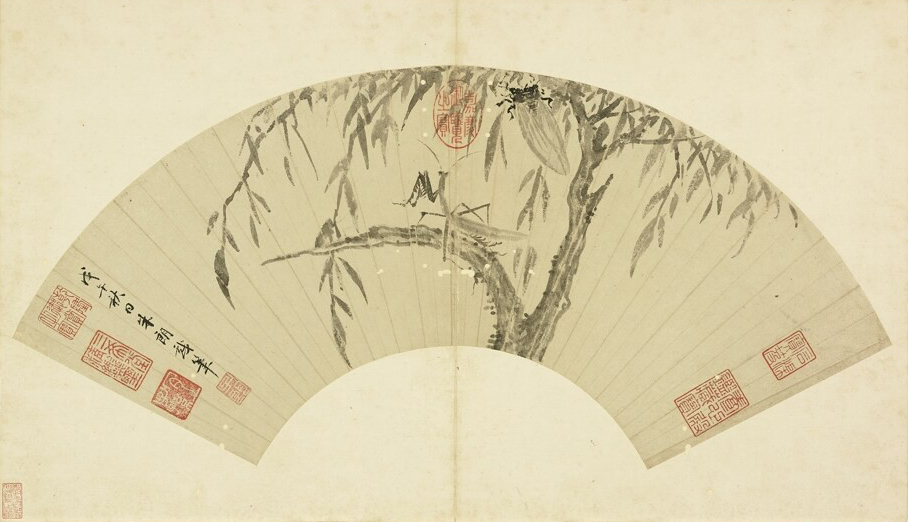
Ming Zhu Lang Qiu Liu Ming Cicada
Zhu Lang (16th century), courtesy name Zilang and nickname Qingxi, was a native of Suzhou. He was a disciple of Wen Zhengming (1427-1559), a master of the Wu School.This painting uses ink painting of mantises catching cicadas among willow leaves. The artist deliberately arranged for the cicadas and mantises to turn their backs to the audience when framing the scene. The whole painting uses dark and light ink colors and calligraphic brushstrokes to express two very distinctive insects, the praying mantis and the cicada. The painter used thick ink to express the black and bright shell of cicadas, while using lighter ink to depict green willow leaves and praying mantises. The mantis's bristly, sickle-like forefeet are pointed out in rapid succession with a calligraphic-like stylus. The joints of the cicada's legs and feet are also completed in cursive writing. The whole work does not seek craftsmanship, and is full of Zen painting fun and literati atmosphere created by simplicity and simplicity.
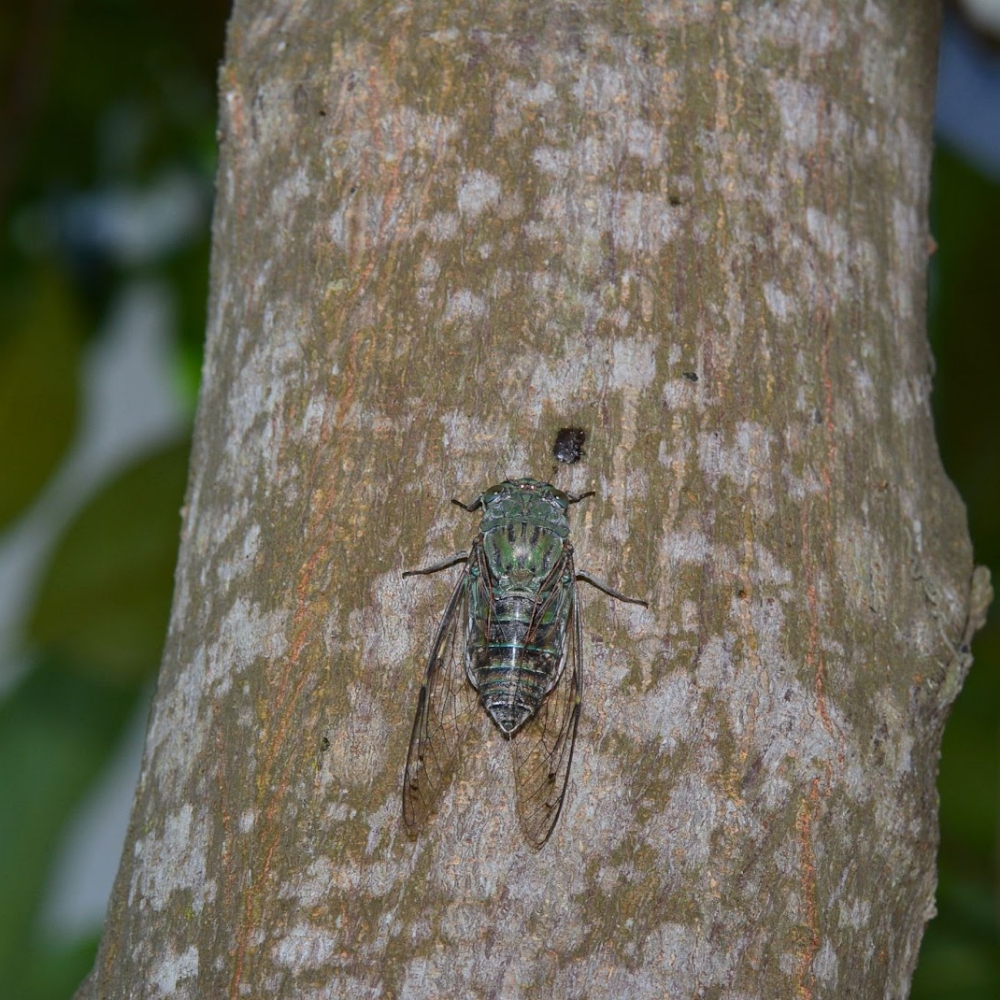
Iwasaki Chill
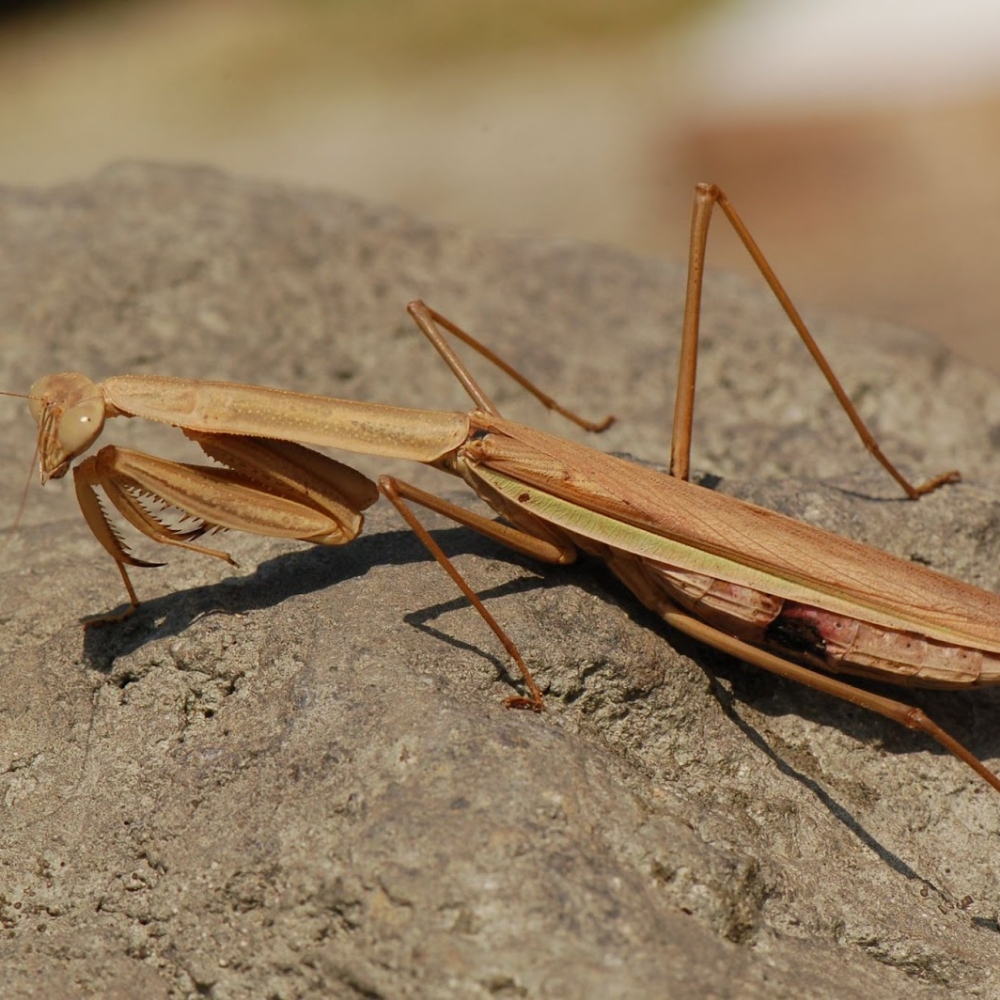
Withered Leaf Big Knife Mantis
"The mantis catches the cicada, and the oriole is behind." It is a familiar idiom, used to describe people's short-sightedness, who only covets immediate interests and ignores the hidden dangers behind them. But from a biological point of view, this sentence describes the ecological phenomenon of the food chain relationship between organisms. The biggest natural enemies of most insects are vertebrates, such as birds, amphibians and reptiles, mammals, etc., while mantises are carnivorous, mainly catching other insects for food. Despite the fact that mantises and cicadas are about the same size, they can even catch prey like mice, snakes, and birds. The mantis' forefoot is specialized for catching feet, with many spines and strong muscle control, so it can firmly grasp the prey and use its chewing mouthparts to bite and swallow the prey bit by bit.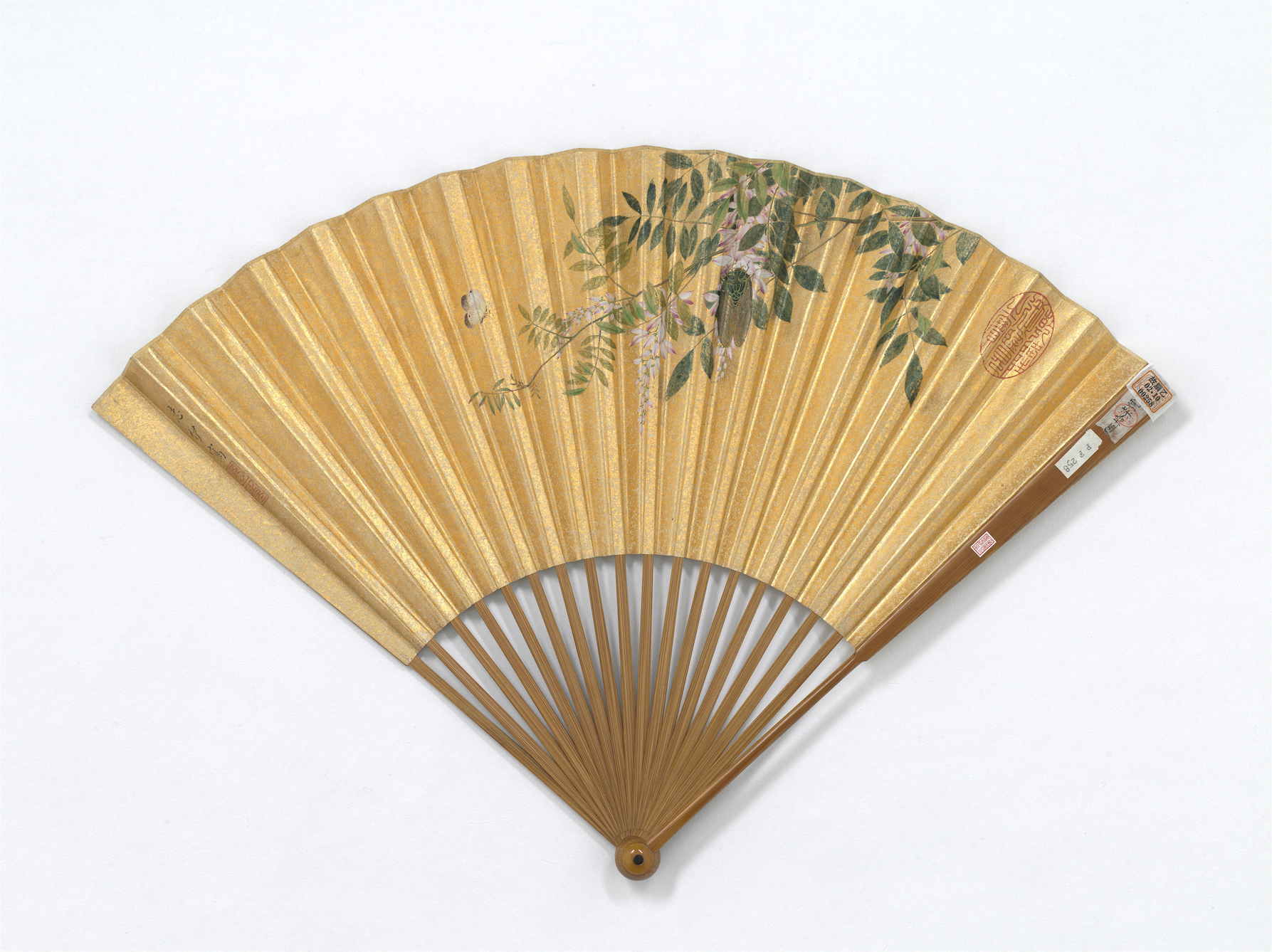
Ming talks about Zhiyi's painting of autumn flowers
The ancients believed that the larvae of cicadas would shake off the dust and metamorphose from the original dirty ground, thus becoming an important symbol of purity and rebirth. Autumn is the last season for cicadas to chirping, and it often makes Sao people feel sad about the fleeting nature of life and time. Tan Zhiyi (active in the middle and late 16th century), a native of Changzhou, was dismissed from office for disobeying the prime minister Zhang Juzheng and lived in the south of the Yangtze River. He was praised by the people at the time for his ability to paint flowers and birds in the way of Song Dynasty painters.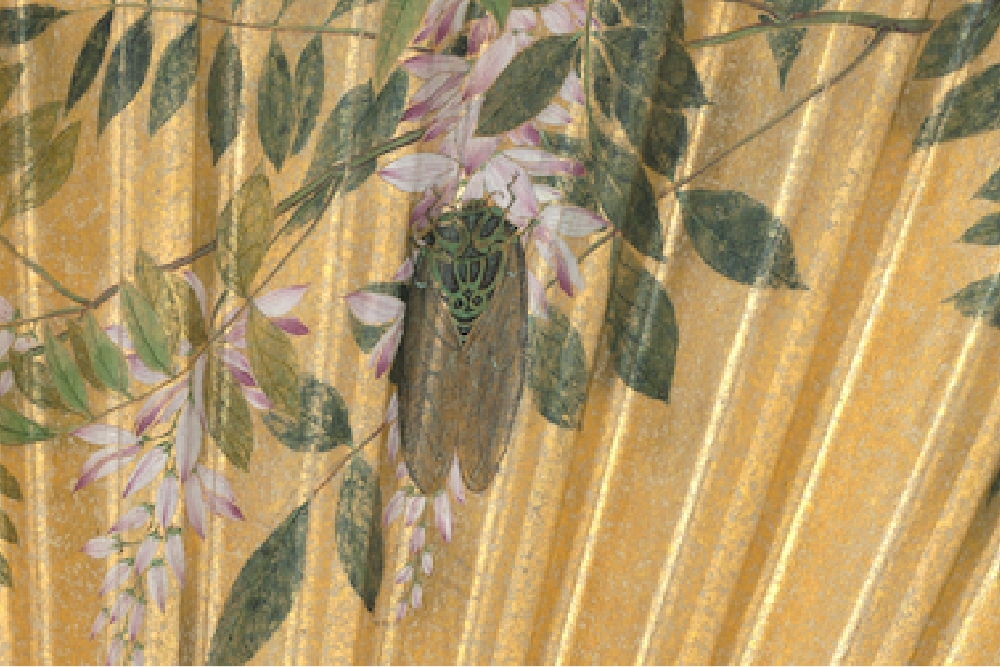
Ming Tan Zhiyi's painting of autumn flowers (partial cicada)

cicada
The fan-face image of this gold-sprinkled paper is relatively flat and patterned, which is obviously different from Song painting in terms of three-dimensionality and space management. However, the black and green cicada carapace pattern in the painting, especially the small lines and dots drawn in stone green, is quite consistent. Song Dynasty painter's delicate explanation of the details of the depicted objects. The insects in the painting are obviously cicadas. From the pattern on the back of its thorax, it is speculated that it may be an insect of the genus Euterpnosia. Compared with the living species, there are no features such as three single eyes and winged moles in the painting, but the patterns on the chest and back are somewhat similar.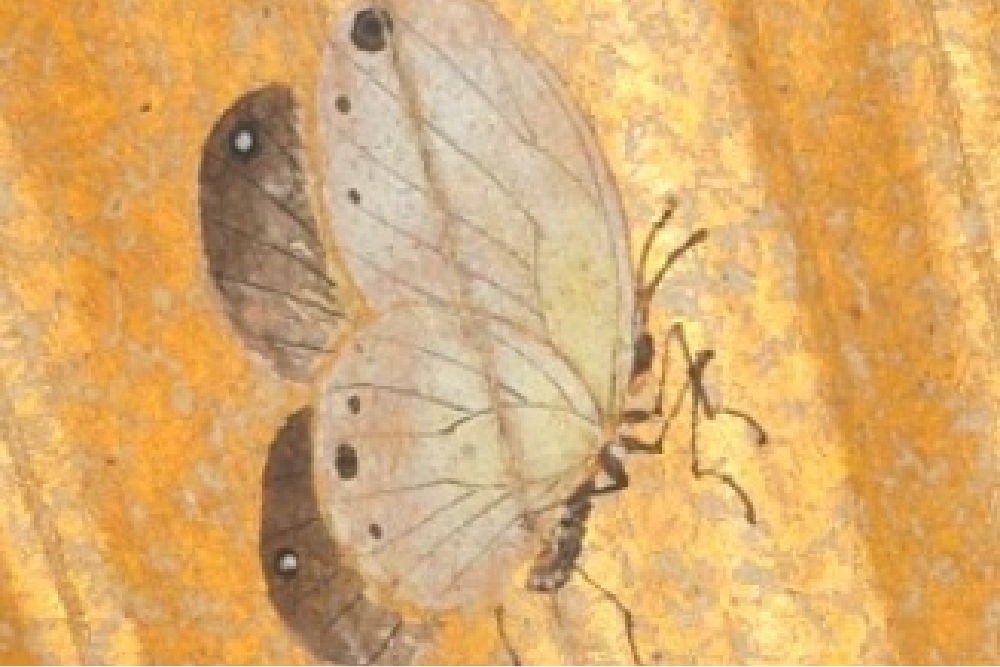
Ming Tan Zhiyi's painting of autumn flowers (partial butterfly)
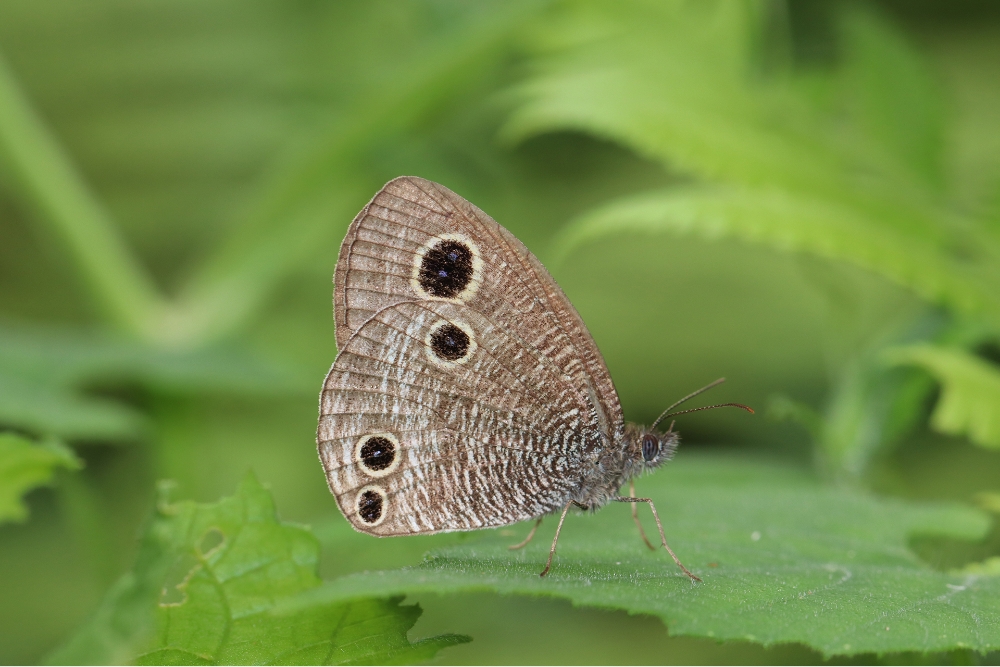
Pseudomonas
According to the characteristics of the butterfly in the picture, such as the antennae are stick-shaped and short, the wings are more arcuate, the back of the wings is brown, and there are eye lines on the sub-top corner of the forewing and the inner edge of the outer edge of the hind wing. The ventral surface has no other features such as linear and brow-like lines except for the eye lines, and it is judged that it should be an insect similar to the genus Papilionidae of the Nymphalidae family. Butterflies in the subfamily Ophthalmidae often have many large and small eye patterns, which can sometimes act as a deterrent to natural enemies. The eye patterns of some groups also change in shades of color and size with the seasons. It usually flies erratically on the edge of forests or thickets, visits flowers and sucks decaying organic matter. When resting, the wings are closed and integrated into the background. If you do not pay attention, it is easy to miss its trail. The eye butterfly in the picture has six long legs, but the real Nymphalidae usually move on four legs, with shorter front legs.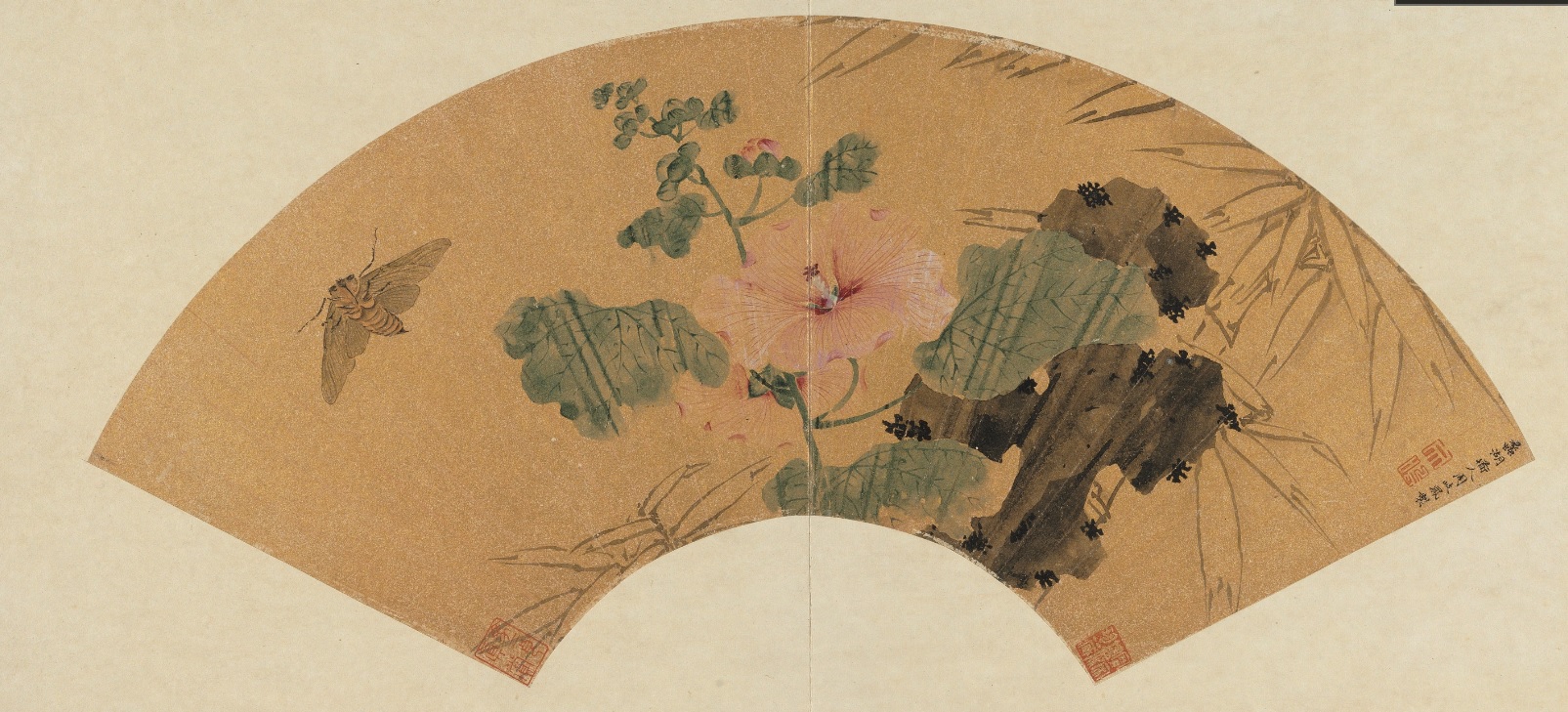
Ming Zhou Qifeng Hollyhock Cicada Cicada
Zhou Qifeng, a Taoist from Lihu Lake, a native of Jiangyin, died in Tianshun (1457-1464). Smart and clever by nature, possessing a variety of skills, his bizarre life stories are recorded in Lucan's strange novel "Gengsi Compiled".In this work, the hollyhocks and strange stones are drawn using the boneless technique without outlines. The bamboo leaves are only treated with double hooks. The cicadas fly away from the hollyhocks with their abdomens as if frightened, which is a rare gesture. The narrow and long mouthparts are clearly visible in the painting, indicating that the artist had made subtle observations. Although Zhou Qifeng is not a famous painter in the history of painting, his overall brushwork is smooth and flexible, the colors are light and elegant, and the shape of the flowers and leaves is quite postured, making him an expert.

Ming Zhou Qifeng Hollyhock Cicada Cicada (Part)
Whether herbivorous or carnivorous, Hemiptera insects have piercing-sucking mouthparts, and cicadas are no exception. This picture shows the ventral view of a cicada in flight. In the painting, it can be seen that the mouthparts of the cicada are slender like needles, extending backward and toward the abdomen. They are posterior-mouthed piercing-sucking mouthparts used to suck plant sap. In addition, the male cicada’s unique sound generator—the tymbal and tymbal muscles in the 1st and 2nd abdominal segments can still be seen in the painting. Sing love songs in the hot summer.the sound of weeds
The loud chirping bugs are easy to notice in nature. In the "grass and insect paintings" that cannot draw sound, they can always be seen in small figures. Can you tell the songbirds and their voices apart? When you notice the corresponding calls of the singing insects, and then look back at the painting, does it seem that you can hear the loud calls of the insects filling the painting, making the painting look lively?
Not all insects that make noise are song bugs! Only insects that can be heard by the human ear and have beautiful rhythmic sounds are called song insects, mainly cicadas, katydids, crickets and locusts. Different song bugs make sounds in different ways. Cicadas use their muscles to vibrate the tympanic membrane of their abdomens and make sounds through abdominal resonance; katydids and crickets make sounds by rubbing their wings together;
Locusts, katydids, and crickets are all insects of the order Orthoptera. They have had many different common names throughout the ages. For example, grasshoppers are another name for locusts. Weaving maiden, silk maiden, luowei, and grasshopper are actually katydid insects. Cuzhi, cricket, and oil gourd belong to the cricket family.
How to quickly distinguish locusts, katydids and crickets? Generally, a preliminary judgment can be made from the length of antennae, body color and tail hair. Locusts have short antennae, katydids have slender antennae longer than the body, and crickets have slender antennae, but are somewhere in between. Katydids are mostly green, but also brown, and generally have short tail hairs; crickets are mostly dark brown, with a pair of well-developed tail hairs at the end of their abdomens.
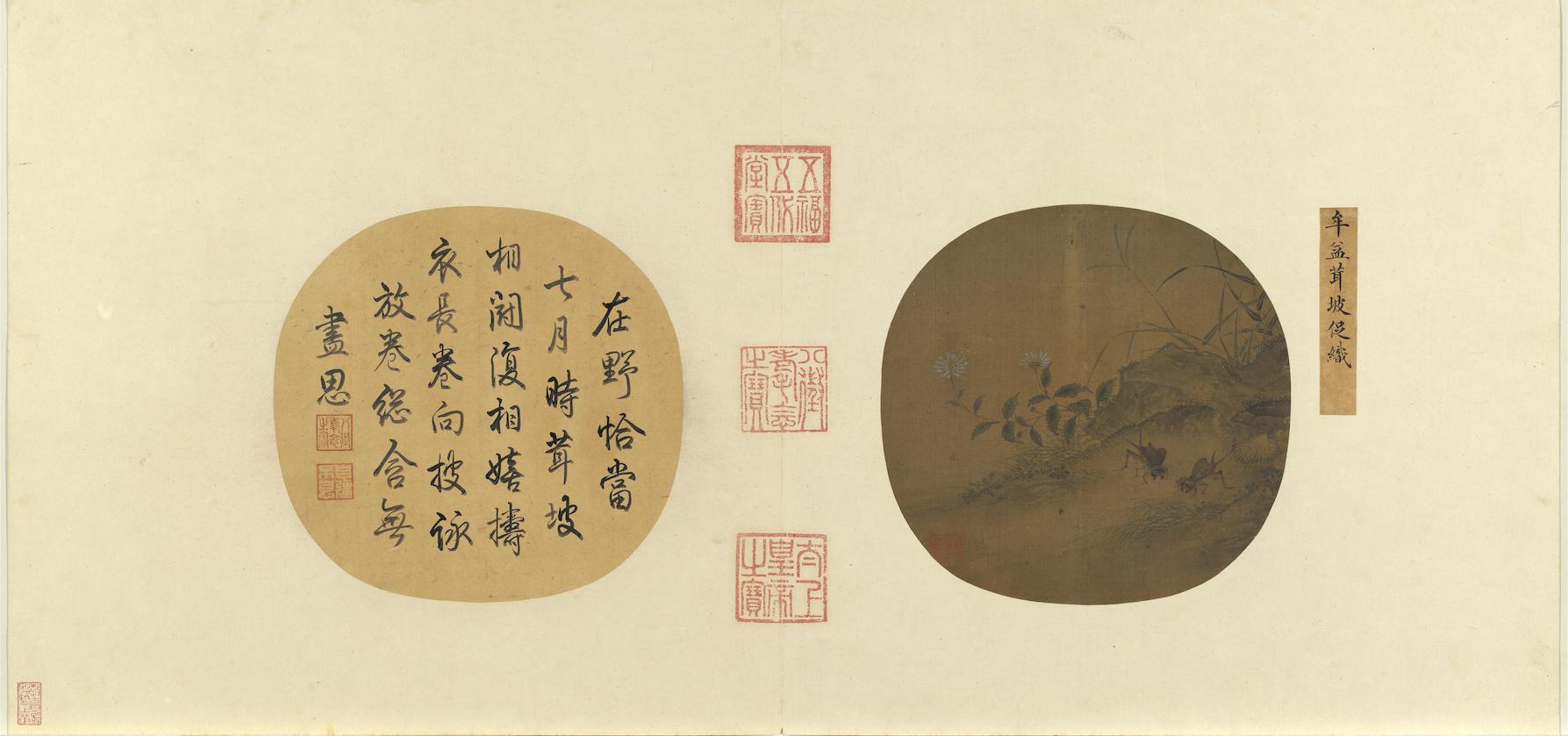
Song Mouyi Rongpo Promoting Weaving
In the painting, a pair of crickets appeared among the wild chrysanthemums and seemed to be vigorously flapping their wings and chirping loudly. Crickets are common insects in autumn. The sound is similar to the sound of a loom. It is easy to remind people that the weather is about to turn cold and it is necessary to weave cloth quickly to resist the cold winter. Therefore, the ancients also called crickets "promoting weaving". There is no signature on the painting, and the old legend is that it was made by Mouyi of the Southern Song Dynasty. Mou Yi (after 1178-1242) was a native of Shu (Sichuan) and was good at painting figures.In the picture, the wild chrysanthemums on the grassy slope are blooming, and it can be seen that the season has entered the autumn. In the painting, the two crickets are opening their jaws and flapping their wings, ready to start a competition between male animals! Crickets are burrowing insects, often hiding in crevices under masonry, in soil burrows or among grasses, and are nocturnal. In addition, crickets are omnivorous, eating a variety of crops, saplings, vegetables and fruits and even cannibalism. In most cases, they live solitary, but during the breeding season, a male and female phenomenon can be seen. As soon as the male crickets come into contact with each other, they will fight immediately.
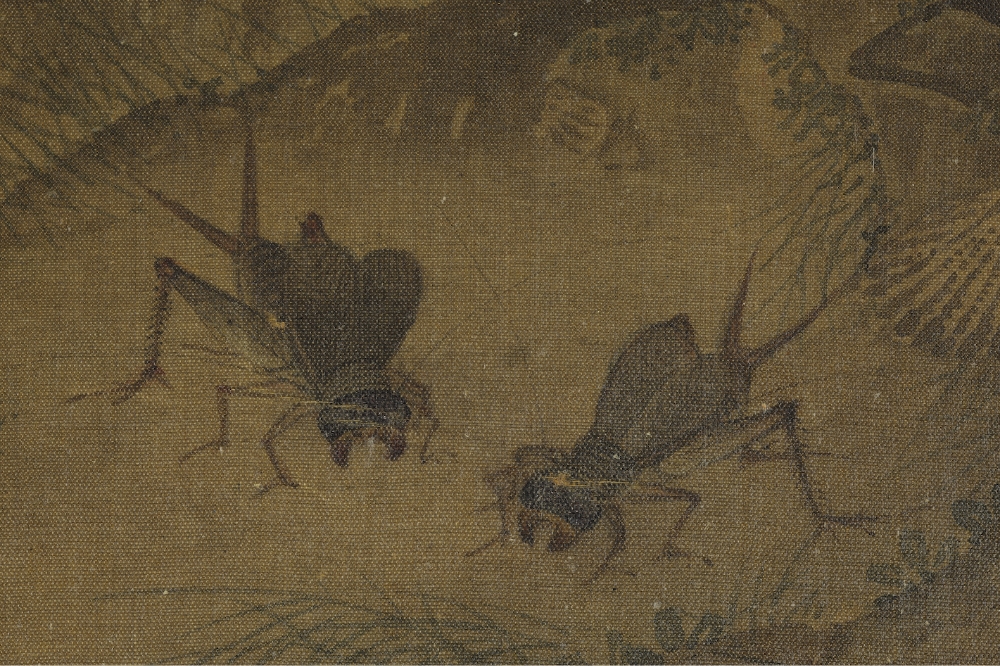
Song Mouyi Rongpo Promoting Weaving (Partial Cricket)
The male cricket uses the friction of its wings to make sounds, and the structure of the file-like plate on the right wing rubs against the thorns on the left wing, so it is also called "bellworm" in Japan. Adults can be distinguished from males and females by the state of their wings. Those with fluffy forewings are males, and those that are close to each other are females. The two V-shaped protrusions at the end of the abdomen are called tail hairs. Female crickets also have black and slender ovipositors in the middle of the two tail hairs. Therefore, the two crickets in the picture are presumed to be males.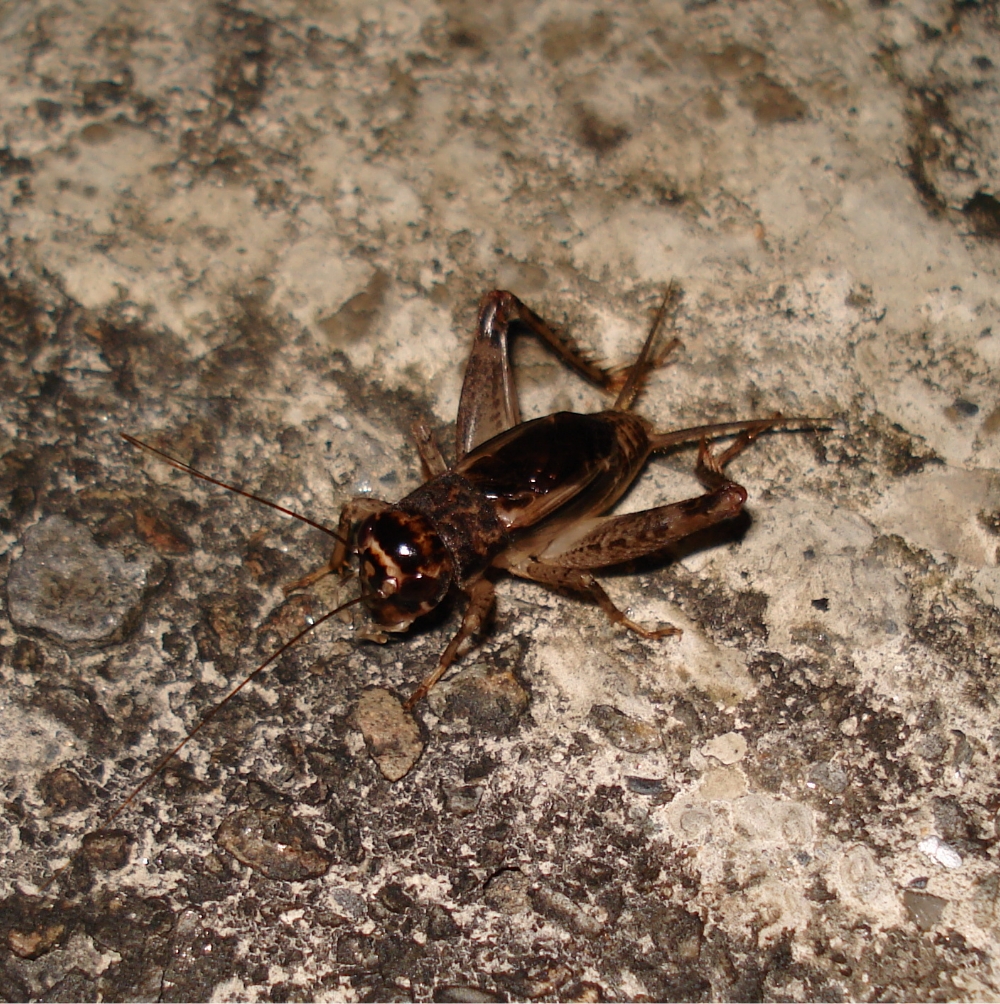
Male cricket (Velaifictorus sp.) (two tail hairs without ovipositor)
Crickets generally start calling for courtship in August and stop when the weather turns cooler in late October. When two males meet, they usually raise their wings and chirp to make a loud noise. Then they open their jaws and bite each other, and even kick for a few rounds to defend their territory or consolidate their mating rights.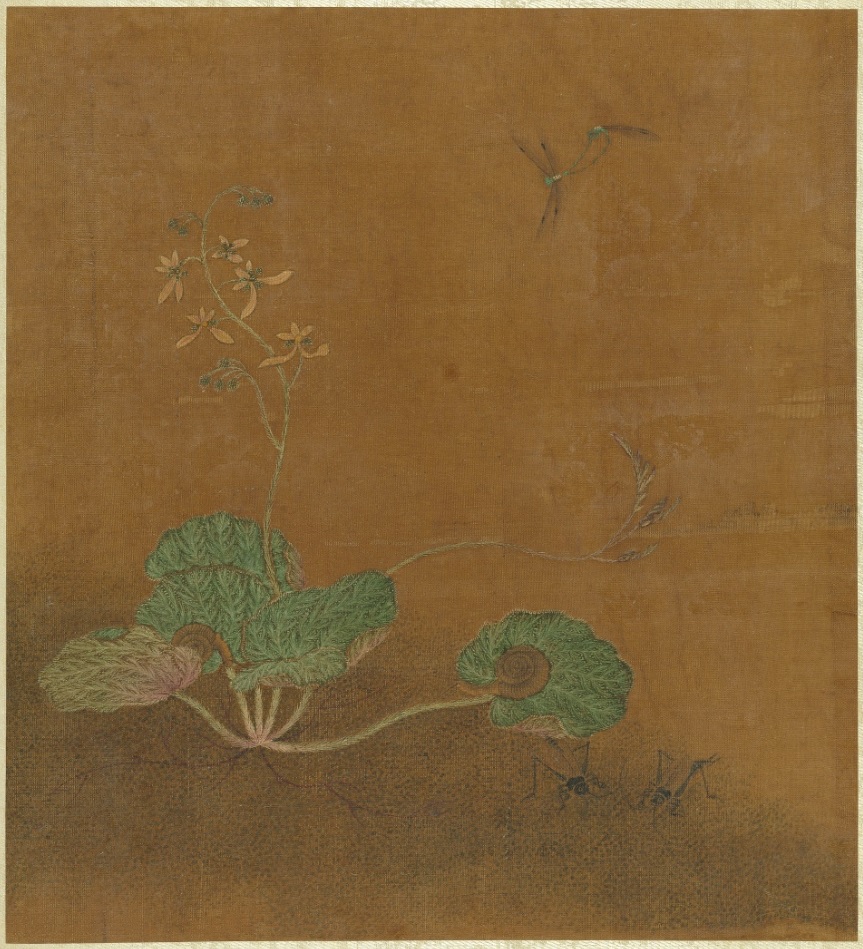
Biography of Yuan Wangyuan Saxifraga
This picture depicts a flowering saxifrage, as well as crickets, damselfly, and snails, which are rich in content. Under the management of the painter's short and repeated dense lines, the saxifrage conveys a furry effect and also produces an embroidery-like texture. The two crickets in the lower right corner seem to be about to fight each other, the cricket on the left is more ferocious, and the other cricket is slightly less powerful. This scene is in sharp contrast to the damselfly mating above. Although the name is Wang Yuan (active in the 14th century), the style of painting is not similar, and it is close to the brush and ink of the Ming Dynasty.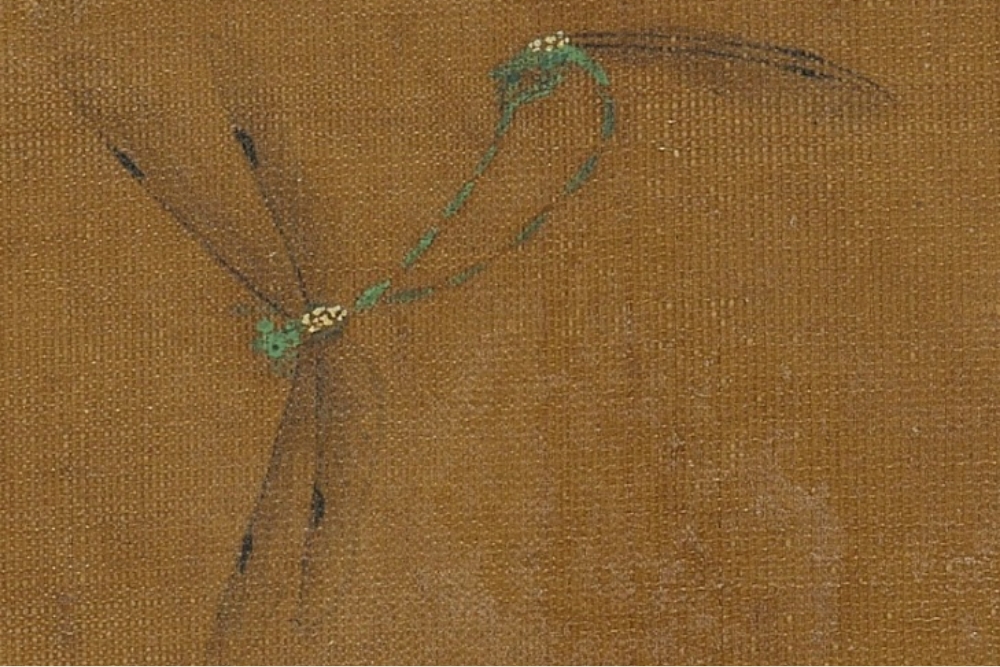
Biography Yuan Wangyuan Saxifrage (Partial Damselfly)
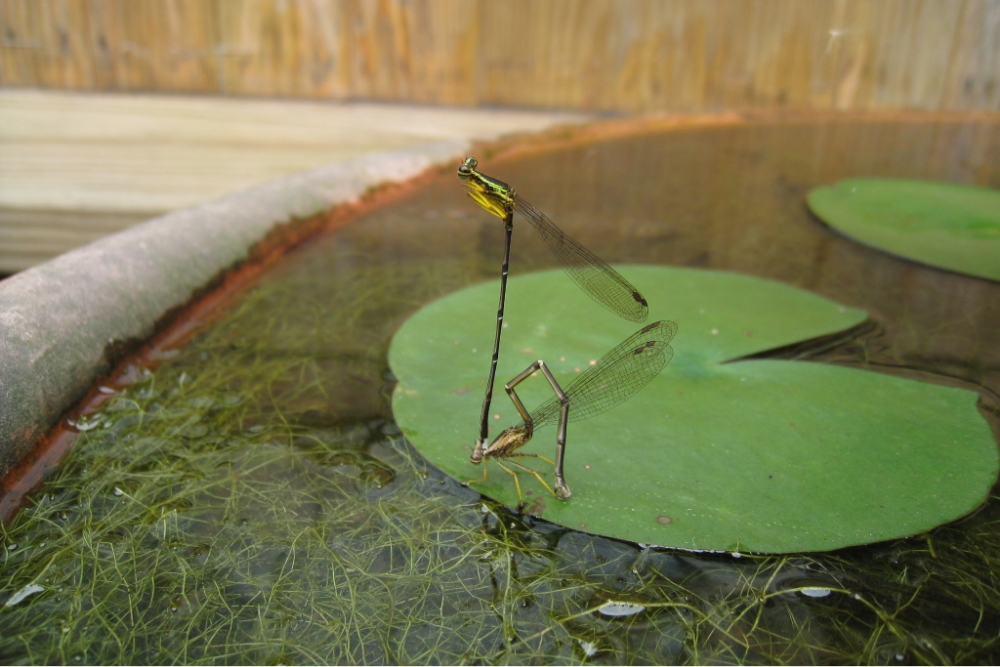
After pairing, guard the female damselfly to lay eggs - the female below
The painting depicts the pairing of damselflies. When pairing, the male is in front (left) and the female is pulled in the rear (right). The male will buckle the female's head with the end of his abdomen, and the female will tie the end of the abdomen to the male. The reproductive structures at the front end of the abdomen are butted, showing a heart-like shape.The only fly in the ointment in the painting is that when the damselfly is paired, the male buckles the end of the abdomen to the female from the "back", and buckles the female from the "ventral". Perhaps this is a biologist's nitpicking on the literati's brush and ink. !
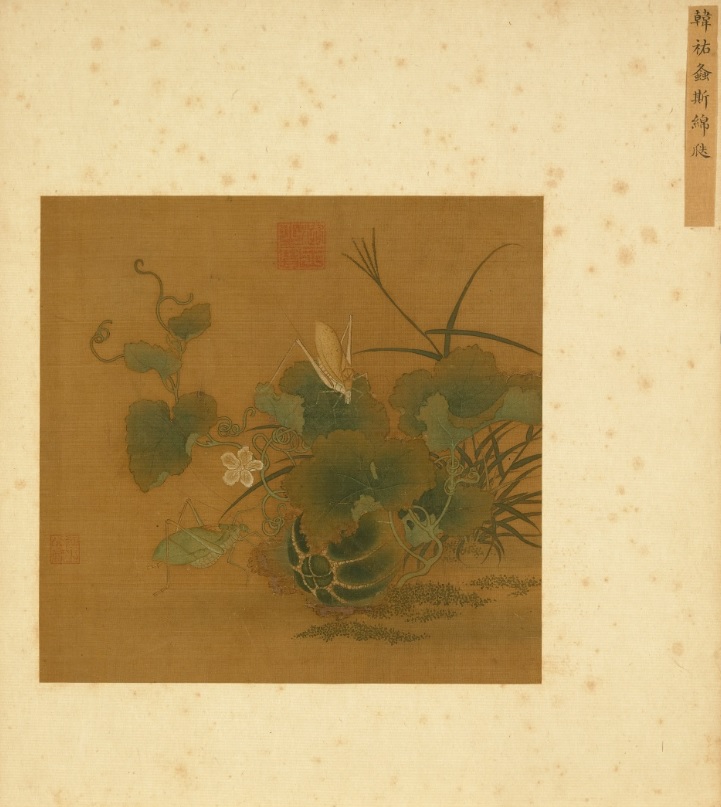
Song Hanyou katydids Mianluo
This work is the first opening in the album "Song and Yuan Collections". The old label is titled by Han You. Han You was a court painter in the twelfth century, good at sketching, small scenes, flowers and birds, grass and insects and other subjects. In fact, there is no signature of him on the painting, perhaps because of Han You's reputation for painting grass and insects, this work is attributed to him. Both the katydids and the melons in the painting are considered to be auspicious for the prosperity of their offspring because of their vigorous growth and reproduction ability. In addition to ink lines, this painting only uses three colors of green, white and yellow ochre. It seems to be a simple color. Through the combination of mineral and water-soluble pigments, the color changes slightly, which is very attractive. In the painting, the katydids marching towards the small melons with their claws and claws, the tendrils of vines twisting and wiggling freely, and the blades of grass stretching happily, all kinds of objects are lively and lovely, and they are really masterpieces of the Southern Song Dynasty.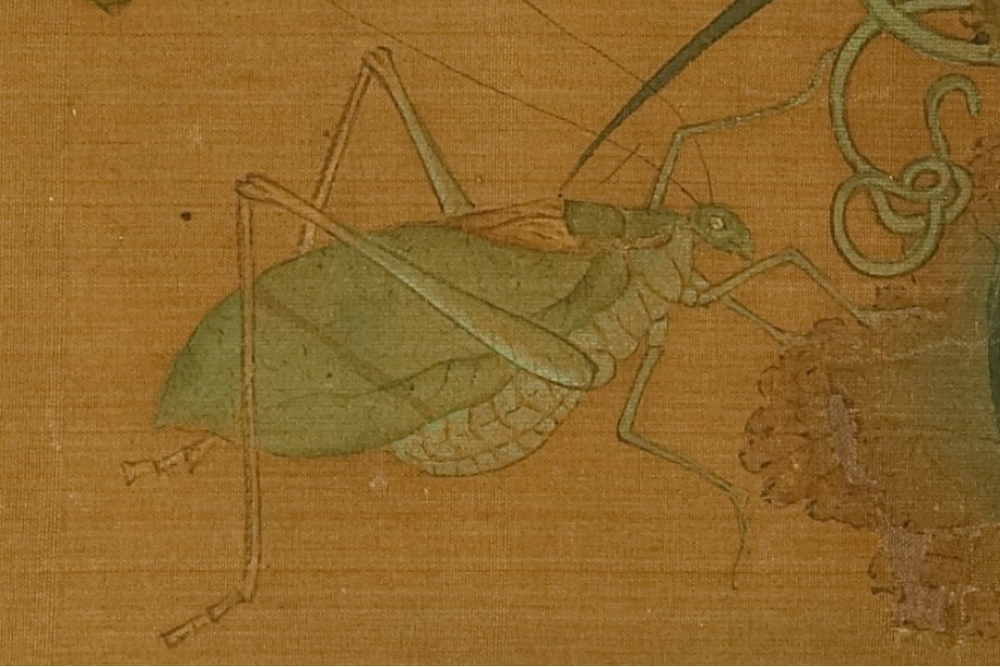
Song Hanyou katydids Mianlu (detail)

textile girl
The grass and insects painted here are katydids, which belong to the order Orthoptera. The male adults flap their wings in summer and autumn to attract female adults for a chance to reproduce. Based on its broad forewings, the katydids depicted in the picture may be Mecopoda niponensis. In Taiwan, they are mainly distributed in forest bottoms or bushes in low-altitude mountainous areas. Adults appear from July to October. In the "Book of Songs" Zhou Nan's "Katas", a prolific insect "katyds" is used as a metaphor for people's many children. Later, people often use "katyds" as a blessing to have many children and many grandchildren. The compositional ingenuity of "Luo" should also be derived from this. However, referring to Hong Zhangfu's article "The Katydid in Ancient Paintings", according to his research on the "katydid" mentioned in the "Book of Songs", the description of the habit should actually be a locust. Interestingly, the katydids in the ancient paintings are not as prolific as the locusts called "katyds" in the Book of Songs, which seems to reduce the meaning of blessings, which is probably unexpected by the painter!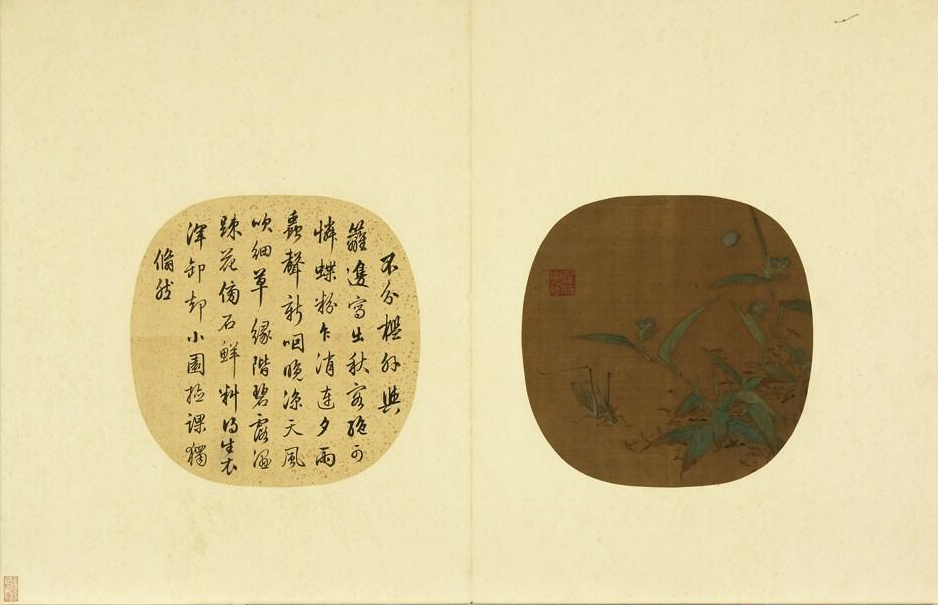
Biography Song Huangju Picking Grass Insects
The color and color painting of Commelina wefts scratching their heads. The picture is incomplete and seems to have been cropped. The seal of Ren Renfa (1254-1327), a painter of the Yuan Dynasty in Shangqian, has the seal of "Ren's Ziming", but it is different from the standard version of Ren Renfa's seal. In the lower right corner, there is a name of Huang Jucai (after 933-993), a flower and bird painter from the Five Dynasties to the early Song Dynasty added by later generations. However, the style of the Ming Dynasty can already be seen in the painting. "standard, and this painting is signed with Huang's name.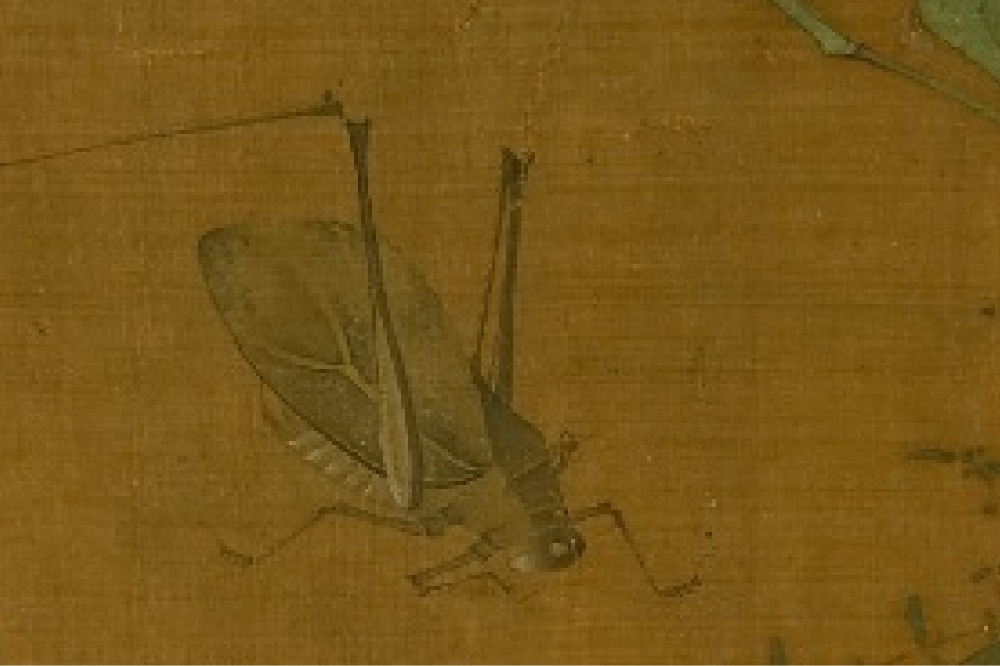
Biography Song Huangju Weed Picking Insects (Partial)
Luowei in the painting is a kind of singing insect, also known as the weaving lady. The painter depicts the scene of Luo Wei raising her legs and scratching her head. The bright spots on the abdomen of the insects, the bristles on the legs, and the tarsals on the toes are all drawn in freehand style. However, due to the weak correlation between the structures, it is speculated that this painting may be a reference to the A copy of the original.Luowei, also known as weaving girl, is named after the sound similar to ancient spinning. The textile girl belongs to the Orthoptera Katydidae in the taxonomy. The male adults will flap their wings and sing in summer and autumn to attract female adults to obtain the opportunity to reproduce. Therefore, this behavior is often cited in ancient texts and poems as Autumn imagery. According to the shape of the forewing and the image description in the painting, the prototype drawn may be Mecopoda niponensis.

Qing Jiang Ting tin grass stone grasshopper
In this painting, dianthus, grasshopper and foxtail are painted on parchment paper, which is easy to express the characteristics of rich and vivid colors. The artist skillfully uses the color change between red and green to show the subtle difference between the protective colors of plants and insects. The ears of foxtail grass are drawn patiently, stroke by stroke, using the silky method similar to the fine brush strokes of animals and animals. The artist seems to have deliberately arranged two grasshoppers with completely different shapes. The postures facing the viewer are one positive and the other negative, and the legs are moved one by one, showing the artist's mastery of the insect body structure. These two grasshoppers, which are clinging to the grass, making the grass stems bear the weight and tilt, are arranged to echo each other and seem to be interacting in some way, which attracts people's attention and can't help imagining their next move. The level of attention that attracted more attention than the red flower dianthus, which is the most colorful in the picture.grasshopper
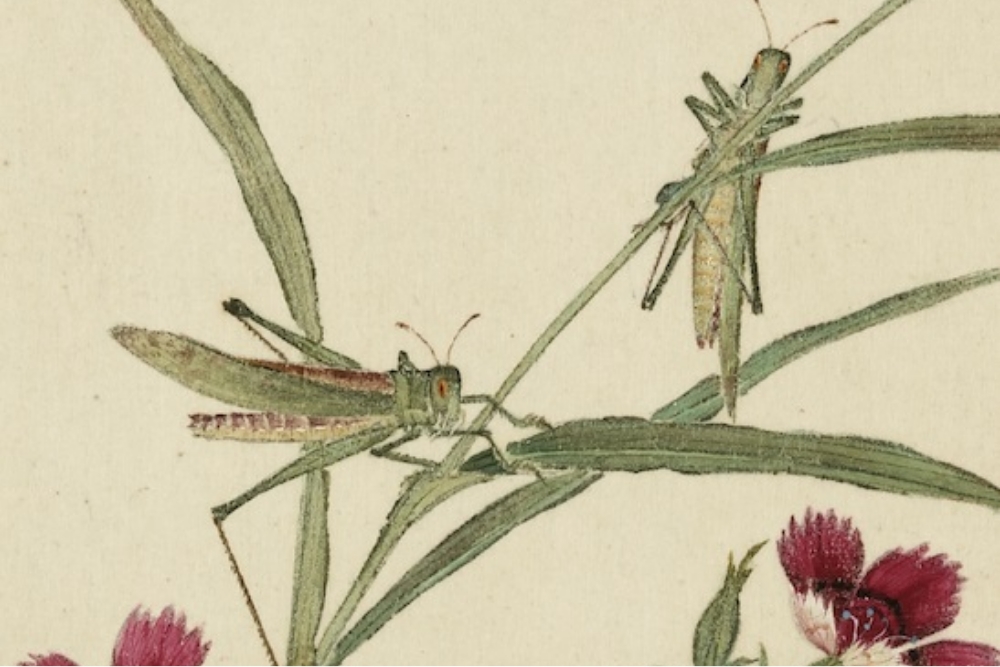
Qing Jiang Ting tin grass stone grasshopper (detail)

grasshopper
"Grasshopper" is one of the common names of locusts. It is an orthoptera insect. Their strong jumping feet make them have good jumping and moving ability. Some species can even kick with their hind feet to defend against natural enemies. Most locust species live in open grassy fields and feed on plant leaves or tender stems. Females lay their eggs in the soil after mating, and the next generation of nymphs leave the soil to start life after hatching. The forewings are specialized for the leathery opaque wing cover, which has the function of protecting the hind wings. Different from katydids, locusts make sounds by rubbing the outside of the front wings with the hind legs, and have the function of courtship or alert. The hearing devices that receive sound are also different from those of katydids. They are located on both sides of the front end of the abdomen and present a pair of round transparent eardrums. Certain locust species, such as desert locust, East Asian locust and yellow-spine bamboo locust, can cause severe damage to crops when the population is extremely large, which is commonly known as "locust plague".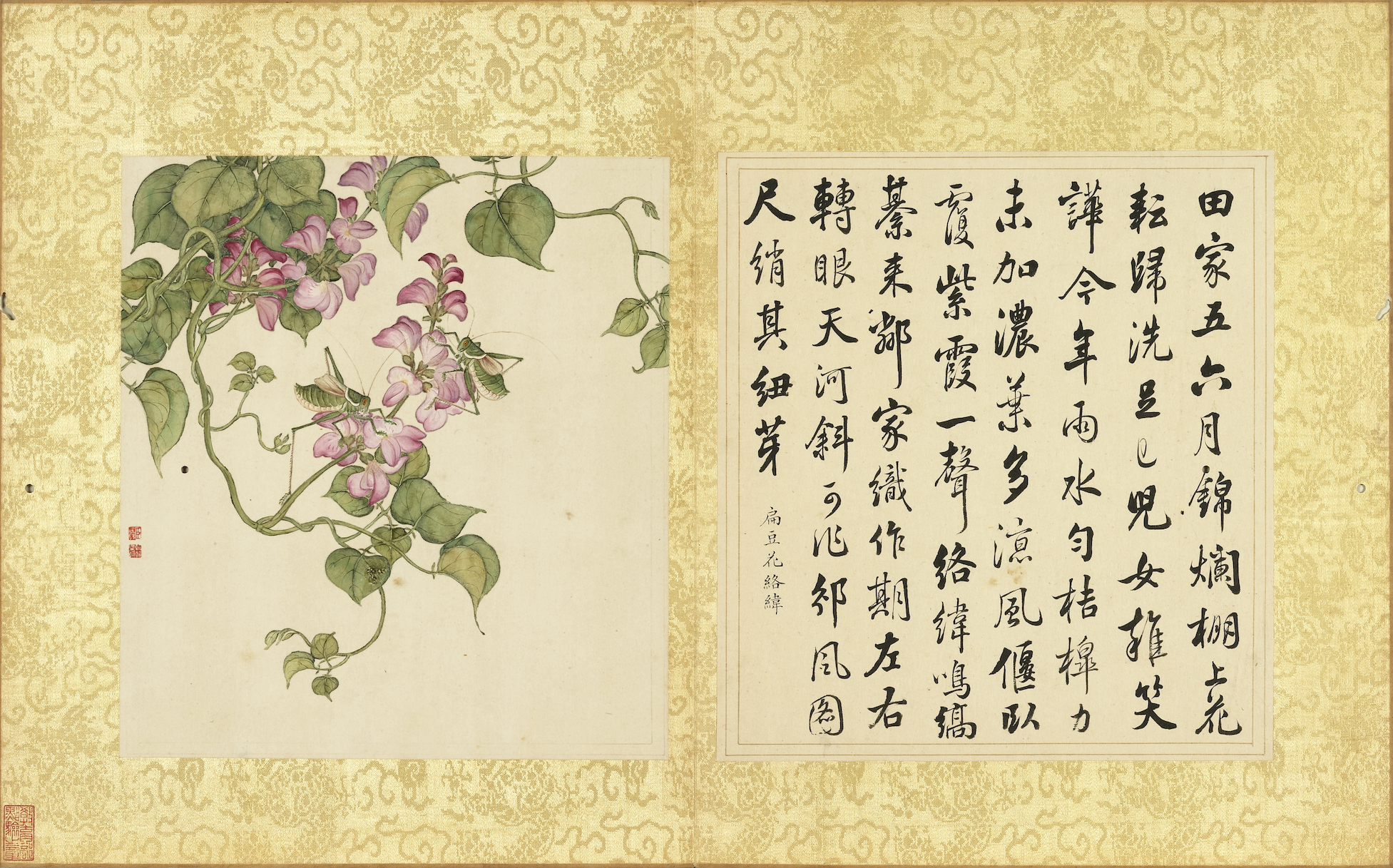
Qing Jiang Ting tin bean flower and weft
There are two green insects with natural protective colors hidden between the flowers and leaves of the lentil vines in this painting. At first glance, it is almost impossible to see their existence. The inscription on the opposite page calls these two insects Luowei, which is the ancient name of the weaving lady. It is named because it often flutters its wings at night in summer, and the sound is rapid like spinning. It is also called Luosi Niang or Shaji. Such insects like to feed on the flowers and young leaves of plants. They are often arranged among the flowers and fruits of edible plants such as melons and beans in ancient paintings, and are used as scenery spots. The painter's description of Luowei is very detailed. In addition to the basic features such as tentacles, wings, and long legs, there are also details such as ventral stomata, and the white line of the mouth. The details are plentiful.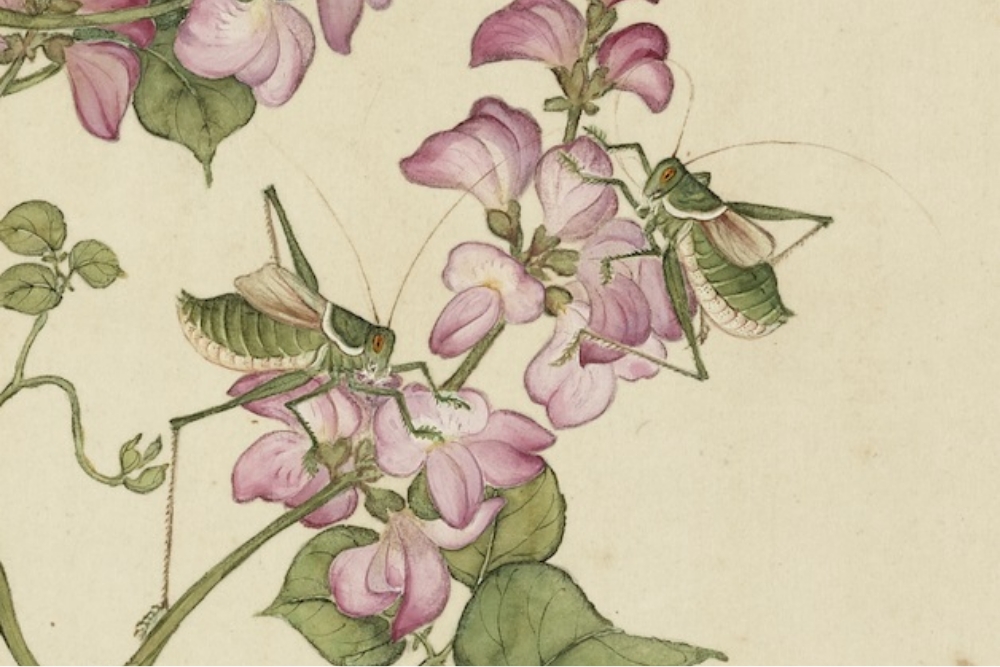
Qing Jiang Ting tin bean flower and weft (part)

katydid
The katydid (Gampsocleis spp.) is a type of large katydid, that is, the "katydid" in the three major singing insects in China (katydid, cricket, and oil gourd). The katydids are short and fat, with variable colors. Most species have short and narrow wings, which cannot cover their broad abdomens. This feature can be clearly seen in the painting. One generation a year, omnivorous, in addition to plant stems and fruits, it will also surround and capture other insects for food. The female worm has a distinct ovipositor at the end of the abdomen, but neither of the two individuals in the picture is a male worm. The males will rub their left and right wings to make loud calls. Appreciating the call of the katydid was a kind of entertainment in ancient China.unfavorable beetle
Not all insects or small animals have equal opportunities to become the protagonists of grass and insect paintings. Under the influence of different time, space and culture, people's favorite insects or animals will be different. For example, the stag beetle or the stag beetle, which is very popular with children recently, is not very common in ancient grass and insect paintings. In this special exhibition, paintings of grass and insects with this type of beetle are specially selected. Rare in quantity, so precious!
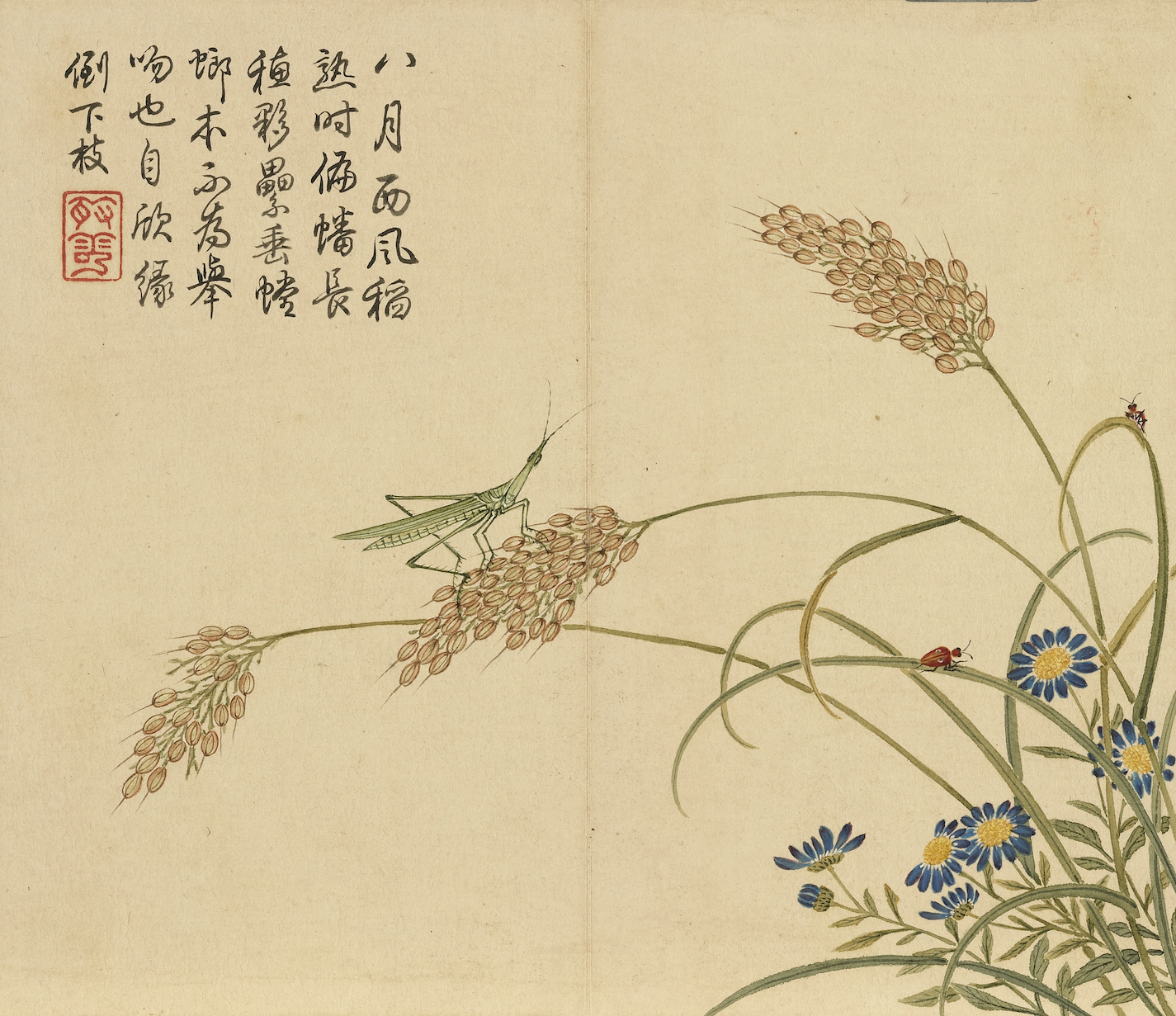
Qing Yang Dazhang rice ear mantis
Yang Dazhang, during the Qianlong period, was dedicated to the inner court with good paintings. Good at drawing figures, flowers, grass and insects. In this painting, the influence of Western techniques can be seen in the color scheme. It attracts plant-eating locusts and golden bugs to cling to it. On the painting is a poem inscribed by the imperial pen in the 33rd year of Qianlong's reign (1768): "When the rice is ripe in the west wind in August, the slanted flags are long and the ears are hanging together. The mantis does not hold a kiss. Mature, even carnivorous mantises that do not eat rice are happy to climb the rice ears. The poem mentions praying mantises, but the insects in the painting lack the characteristics of mantises. The locust that appeared with the golden flower bug in the painting was misjudged by the emperor as a praying mantis. Qianlong mistakenly thought that the mantis climbed the full ears of rice and planned to participate in the harvest and prey on small insects, so the ministers who wrote the "Shiqu Baoji" in the Qing court had to "comply with the decree" and named it "Rice Ear Mantis".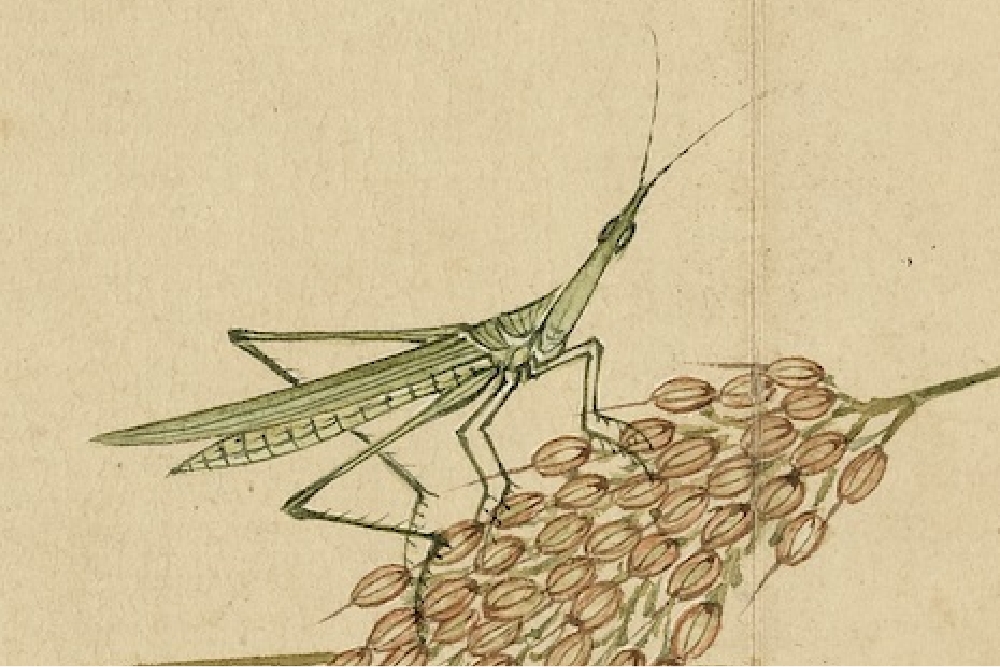
Dazhang Rice Ear Praying Mantis of Qing Dynasty (detail)

Sword-horned locust
Because of their similarity in appearance and habitat, praying mantises and locusts are often misidentified. Even Emperor Qianlong was no exception and mistitled the paintings of locusts as praying mantises! In fact, the two can be easily distinguished by observing the following characteristics: the head of the mantis is an inverted triangle with a long forechest, and the forefoot is specialized for catching prey; the head shape of the locust varies greatly, some are slender, some are square etc., but without an inverted triangle, the hind feet are specialized jumping feet for jumping. The locust in this picture has a teardrop-shaped head and slender wings, and it can be judged that its prototype is Acrida sp. This is a locust widely distributed in East Asia. It mainly feeds on grasses and occurs in large numbers in summer and autumn, but rarely causes major agricultural losses. The sword-horned locust is mostly distributed in the grasslands of shallow mountains, flat land and coastal areas in Taiwan, and more adults appear in the summer solstice and autumn.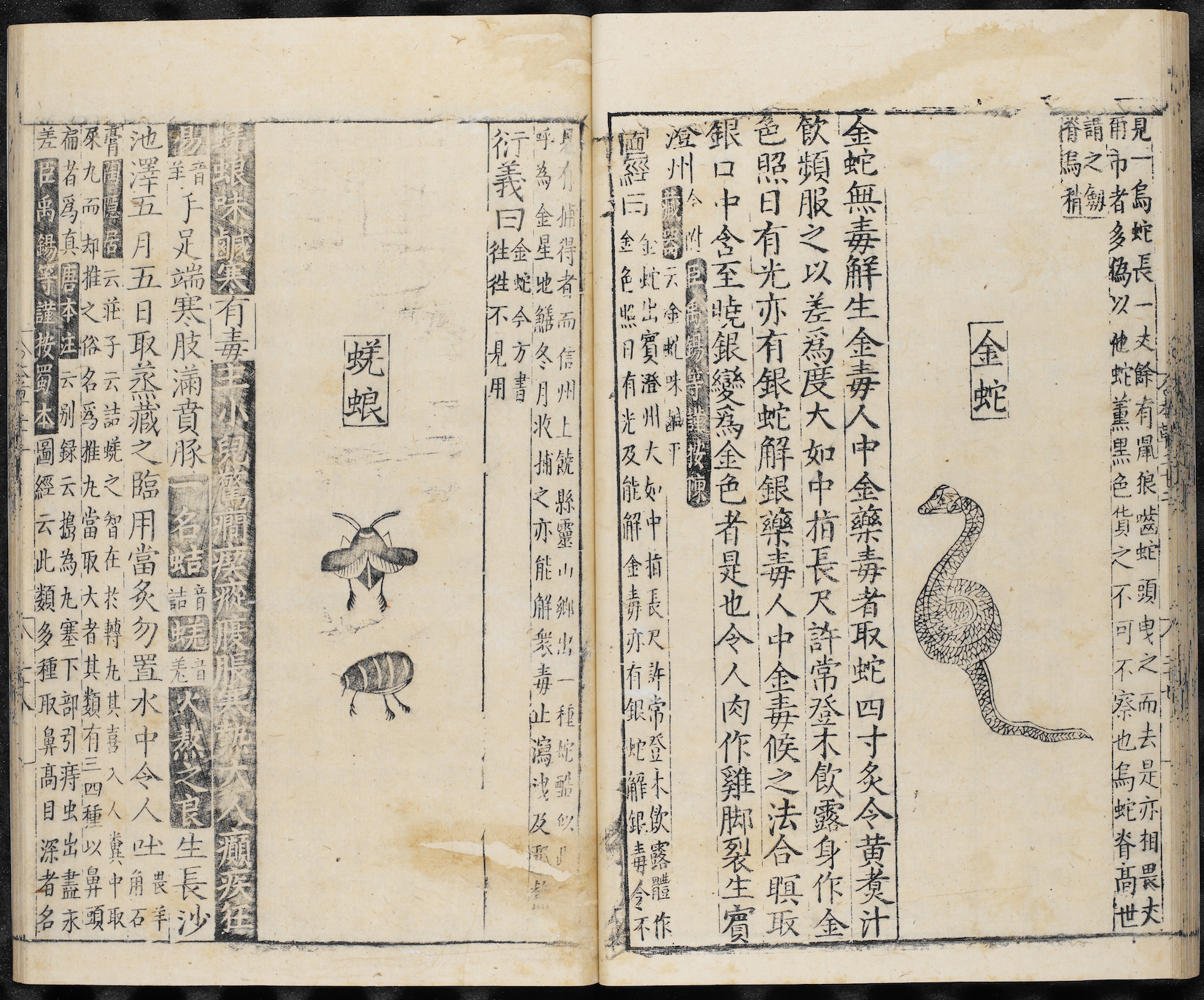
Compendium of Materia Medica (Golden Snake, Dung Beetle)
In addition to silk and beekeeping, the practicability of ancient weeds and insects is most often used as a medicinal guide. The classification of herbal medicine "Insect Department" is different from the classification of insects today. Take the "Classical Compendium of Materia Medica" as an example, the book includes dung beetles, which are now classified as insects, but the golden snakes of reptiles are also listed in the previous item. This type of cursive script is often accompanied by illustrations, but they are not necessarily realistic and precise. Dung beetles are dung beetles. They are rare in grass and insect paintings, but are more common in Materia Medica, and are mainly used for symptoms such as convulsions in children. The description of dung beetles is relatively simple in "Classical History and Evidence of Compendium of Materia Medica". Compared with insect experts, it is quite different from the existing dung beetles.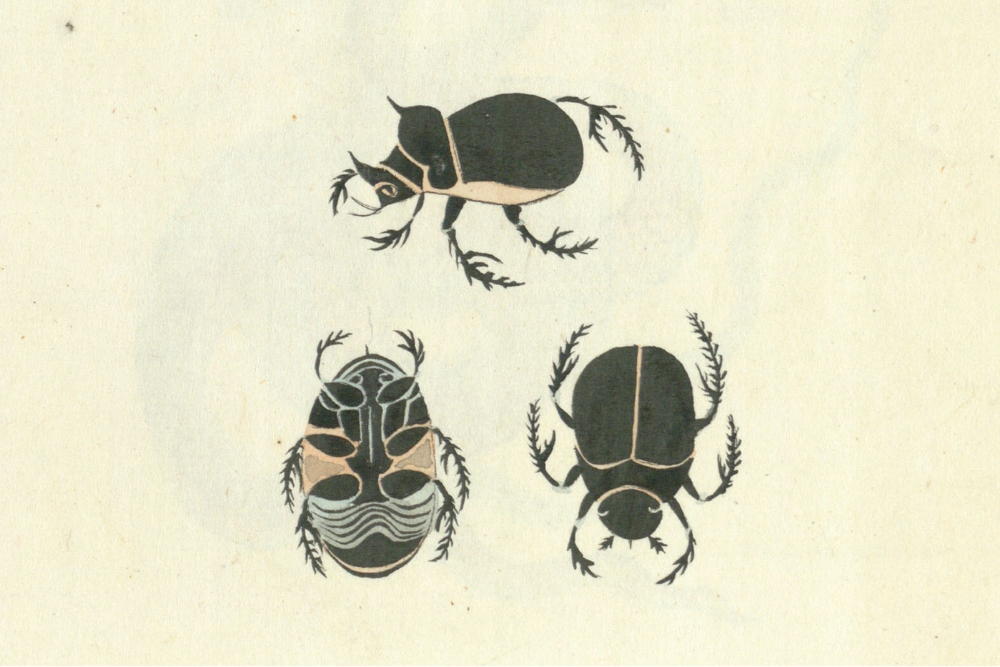
The picture of dung beetles in "Jin, Stone, Insect and Plant Shape" collected by Mingwenchu National Library
The "Compendium of Materia Medica" depicts the description of dung beetles in the Compendium of Materia Medica, and in it two insects are drawn in the back view and the side view, titled "dung beetles". Dung beetles are commonly known as dung beetles. They feed on animal dung and will make dung balls, dung piles or dig dung holes to lay eggs and raise their young. But whether it is the pointed and long abdomen in the picture above or the round wingless body in the picture below, it is far from the real dung beetle! The features of the hind feet, the opening of the elytra and the pointed abdomen in the above picture are more like adult dragon lice. Although they are aquatic insects, they are phototaxis and are often found under the light. The same dark body and bright black The elytra may have confused the mapper for a dung beetle. The plump bodies of the wingless insects in the picture below are a bit like soil-dwelling cockroaches. They are very different in appearance and diet from cockroaches at home. They feed on wood and are relatives of termites. But if it is a cockroach, the tentacles should be longer. Perhaps the ancients could not tell the difference between a dung beetle and a cockroach, which is also named "roach".Bugs vs. Insects
In the "Book of Rites" of the first century BC, the word "worm" includes all the animals in the world. According to the "skin", the worms are divided into feather worms, scale worms, hairy worms, beetles and loa (naked) worms. Human beings are one of the "bugs".
The meaning of "worm" has also changed constantly in the past. As late as the 16th century, "Compendium of Materia Medica" classified worms into three categories: oviparous, metaplastic, and wet. Among them, apart from the metaplastic fireflies and various silverfish, the oviparous spiders, as well as the traditional "insects" such as the wet-living toads, horses and snails, are beyond the scope of modern "insects".
The traditional so-called "worms" include not only the hexapod arthropods of the "Insecta" of modern biology, but also spiders, centipedes, earthworms, and even frogs, snails, etc. Therefore, the non-"insect" creatures appearing in the grass and insect paintings are not necessarily supporting roles. They may have had the identity of "worms" in the past, and of course they are the protagonists in the painting. The common insects and small animals around you and me, and which ones are the regulars in "Grass and Insect Paintings"?
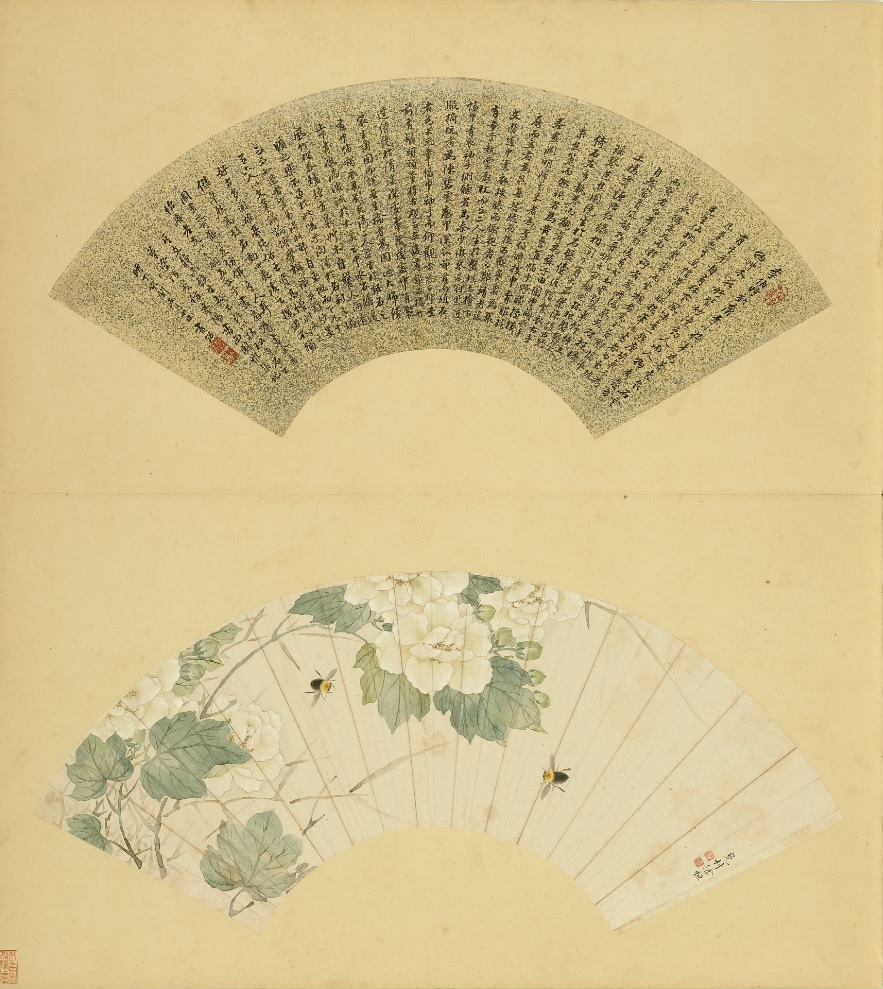
Qing Xuheng bee hibiscus
Xu Heng (mid 19th century), a native of Qingpu (Shanghai), good at landscapes, skilled in clerical script, and a disciple of Shi Runchun, a painter in the late Qing Dynasty. This painting is painted on an arc-shaped folding fan, depicting a hibiscus flower bush with twin bees flying between the flowers and leaves. The outline of the flower shape is first hooked with light ink, and the petals are dyed with light powder and a little rouge, and then the veins are hooked with white powder lines. Compared with the exquisite workmanship of the petals, the leaves are painted in shades of succulent green, and are drawn in a freehand style with no bones. In the blank part of the picture, the artist specially painted a pair of bees that are attracted by flowers and face each other. The bright-colored garcinia emphasizes the fluff of the bees, adding dynamism and vitality to the static flower painting, and giving the audience the imagination of the fragrance of flowers. .
Qing Xuheng Bee Hibiscus (Partial Bee)

wood bee
Although the title of this painting refers to the species it depicts as a honeybee, it may be of the genus Xylocopa, judging from the characteristics of the thorax, black abdomen, and swelling of the hind tibia. Chinese wood bee (X. sinensis). Carpenter bees are solitary bees with excellent flight ability. They like melons and flowers. They often travel quickly through trees to visit flowers. Female bees will use their big jaws to bite open bamboo or use holes in wood to build cells and go out to collect flowers. Pollen broods, so it is also called "bamboo bee". The fly in the ointment is that Hymenoptera has 2 pairs of wings, and the author only drew 1 pair.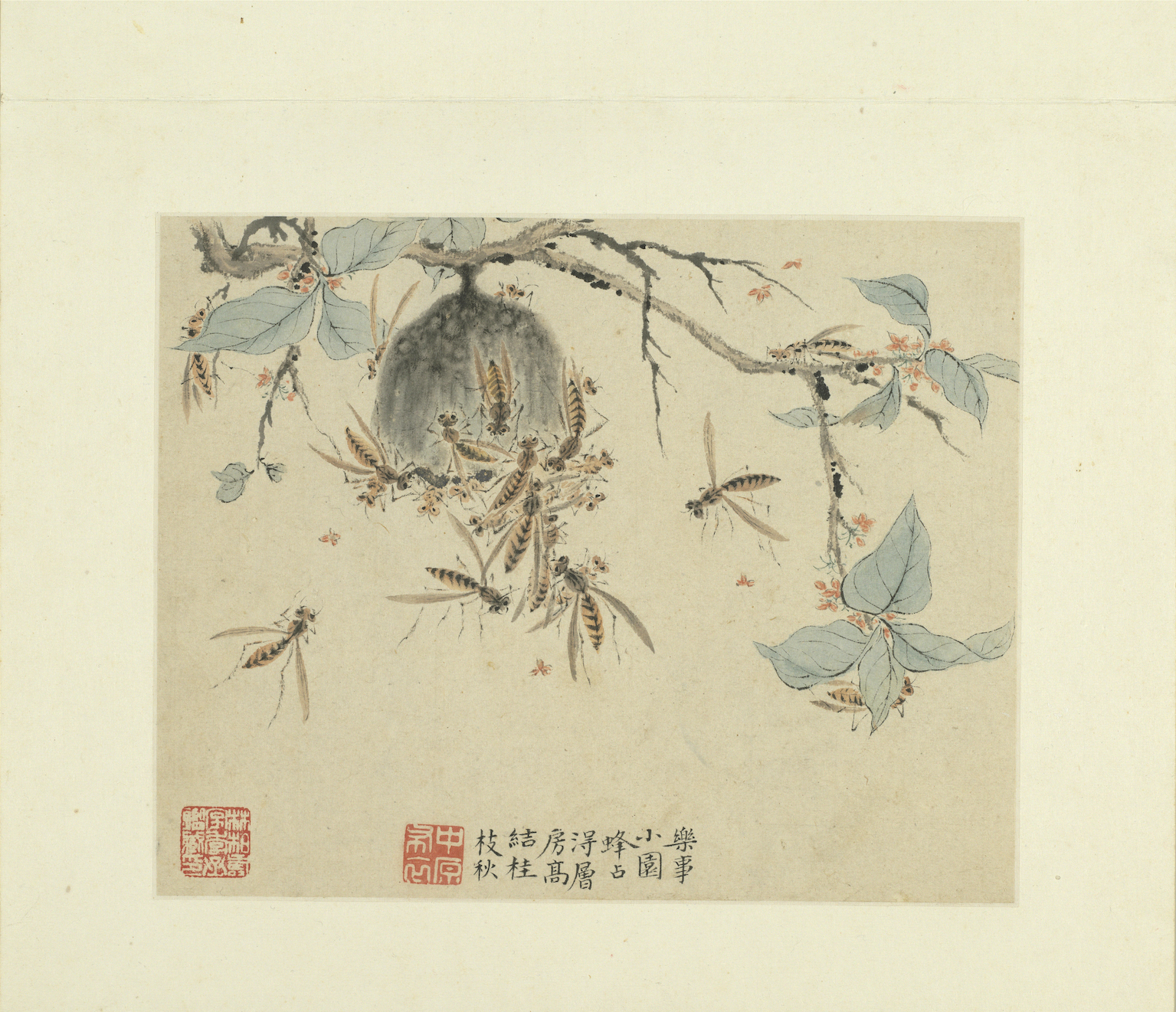
Tsinghua Rock Beehive
Hua Yan (1682-1756), formerly known as Hua Desong, later renamed Yan, word Qiuyue, number Xinluoshan, one of the members of the "Eight Eccentrics of Yangzhou" in the mid-Qing Dynasty. The paintings depict a wide range of subjects, with humorous and vivid images, expressive expressions, and unique temperaments. This album does not have the year mark, but it is inferred from the style of painting that it belongs to the late works after the age of sixty, and is a cultural relic stored in the Lanqianshan Museum. This picture shows the long-legged honeycombs on the osmanthus tree, and a large number of bee colonies are busy. The painter's inscription: "The small garden is occupied by bees, and the houses are high with osmanthus branches in autumn." In nature, the autumn when the osmanthus is in full bloom is the time when the wasps prepare to breed for the winter, and it is easy to hurt people. The painter drew close-up close-ups and deliberately emphasized the wings, feet and mouthparts of the bees with sharp and sharp pens, making all the long-legged bees look fierce and fierce.
Tsinghua Rock Beehive (Partial)

Long-legged bee and beehive
The painting should depict the long-legged wasp (Hymenoptera Vespa, Polistes) and its hive, characterized by a spindle-shaped abdomen, and the shower-head-shaped hive is made of worker bees mixed with saliva and plant fibers. Known as paper wasp, it is often found under eaves, in artificial waste and on plant branches. In Taiwan, people often confuse the long-legged bee with the hornet, but it is actually very docile. Unless it is very close to the hive (about 1 meter) or shakes into the hive, it generally does not actively attack people. Judging from the fact that the hive and nearby branches are full of bees in the painting, it is inferred that it should be the last stage of the hive in late autumn. At this time, there are many breeding individuals, and the hive will disintegrate soon; Gaojie Guizhi Autumn" also verifies that the painting is autumn. The author presents the various postures of the long-legged bees in the painting. Obviously, he has put a lot of effort into observing them. The disadvantage of aesthetics is that the long-legged bees in the painting only have one pair of wings, but in fact they should have two pairs of wings.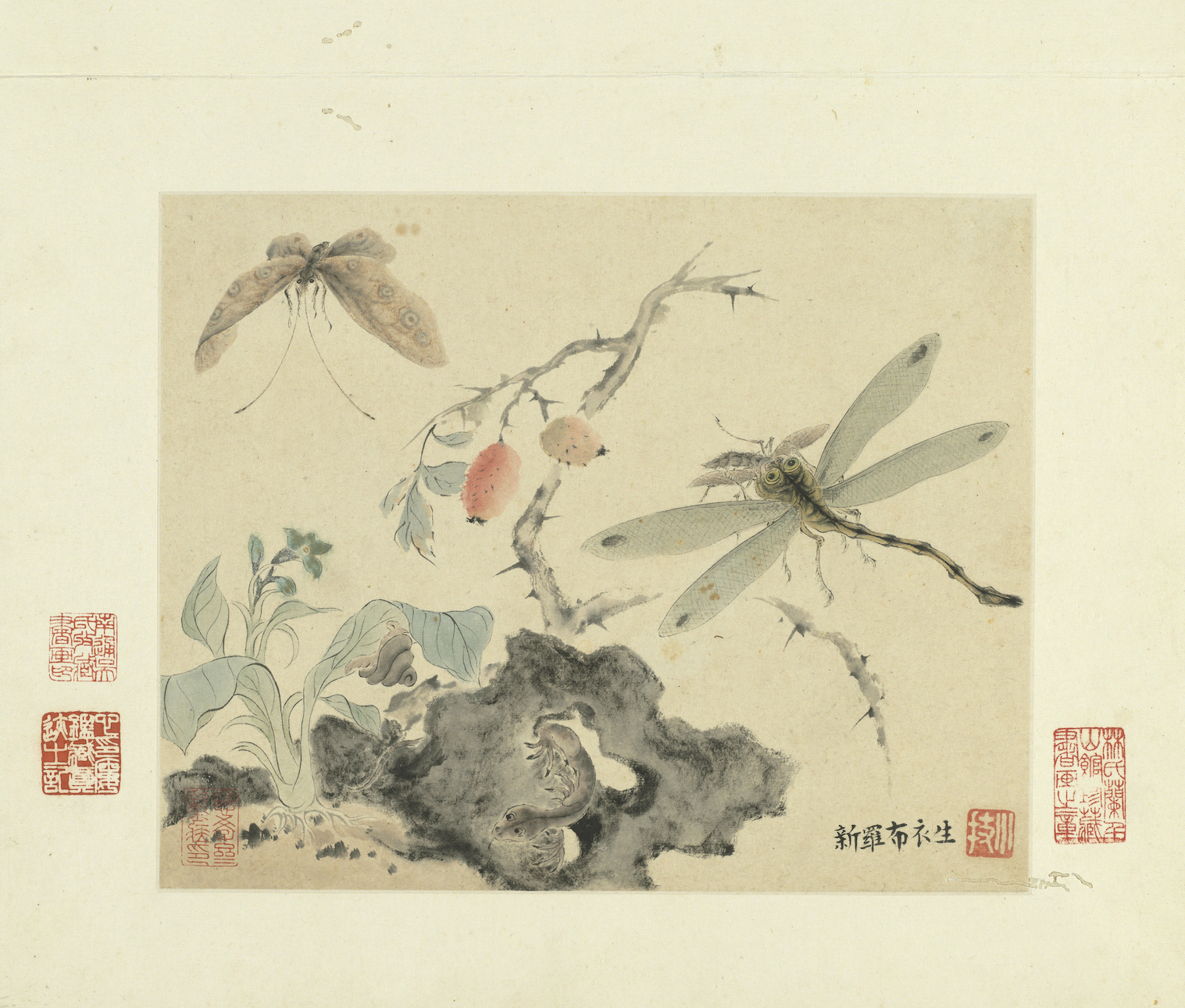
Tsinghua rock weeds
In one corner of the garden in this painting, various small creatures such as butterflies, dragonflies, lizards, snails, etc., surround lake rocks and small shrubs with fruit and thorns. At the bottom right of the picture, there is the artist's signature "Xinluo Buyisheng", and the seal "Small Skills" implying the expression of self-defeating words of "Carved Bugs", but in the handling method, the artist's dazzling skills and self-confidence are displayed everywhere. The dragonflies and lizards in the picture have their eye sockets and pupils drawn by the artist, making a somewhat exaggerated anthropomorphic expression. The carnivorous dragonflies that devour other insects in the air are particularly excited and greedy. The lizard below is spitting out a letter from the hole in the lake and stone, and it has a playful sense of thief. With the butterfly flying in the upper left corner and the snail crawling on the back of the vegetable leaf, the whole painting presents the diversity and vitality of different species. The artist deliberately used thin and strong curved hooks to express the soft texture and flexible movements of the leaves and animals in the painting.
Tsinghua rock weeds and insects (partial)

Juniper dragonfly preys on fickle dragonfly

Dragonfly catching foot close-up
The style of this painting is rather grotesque, and the depiction of animal forms is rough and exaggerated. For exaggerated parts, for example, the toes of a gecko are enlarged into giant claws, and the compound eyes of a dragonfly are depicted as tiger's eyes. In addition, the wing veins of dragonflies are carried over by simple mesh patterns. What is still amazing in Wei's paintings is the picture of dragonflies preying on other insects, because even in modern times with advanced technology, there are still many people who mistakenly believe that dragonflies feed on dew for a living. In fact, dragonflies are uncompromising carnivores. When we see unnatural dives and pauses in the air, dragonflies are often catching other insects for food, but the prey insects are too small. Can't see it. When we observe the dragonfly's six legs up close, we will find that they are covered with bristles, which can help the dragonfly catch insects like a trap.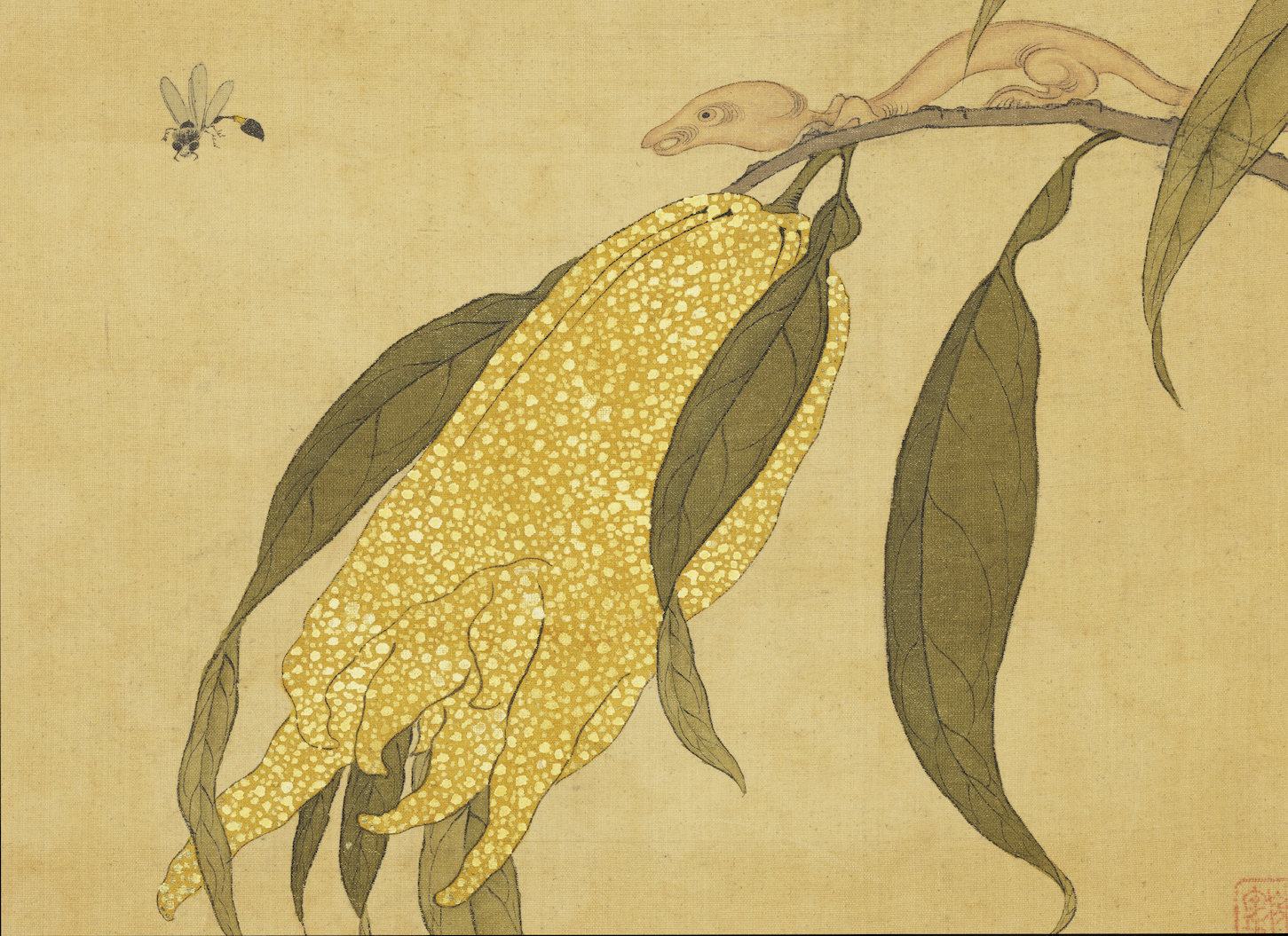
Qingchen character bergamot
Chen Zi (1634-1713?), a native of Zhuji, Zhejiang, with the name Xiaolian, was the fourth son of Chen Hongshou, a famous painter and calligrapher in the late Ming Dynasty. Chen Hongshou was proficient in printmaking, and Chen characters may have been influenced by his father. On the bergamot in the painting, there is a lizard staring at a slender-waisted wasp. The lizard's eyes are wide and its teeth are gritted. The lizard's painting method is similar to the "panchi" decoration of jade bronze ware or handicrafts, rather than a real creature. This kind of "Panchi" pattern, writing pattern and decoration are recorded by prints, so it has the effect of "caricature" in modern times. The works of Chen's father and son are called late Ming deformationism. They are often grotesque and eccentric, with novel shapes, which are never seen before. From time to time, personal characters and moods are integrated into the paintings, showing interest and insight through ancient and clumsy brushwork.The bergamot in the painting is a common theme in traditional painting, implying auspiciousness and good fortune. The bergamot in Chen's calligraphy and painting can be seen in prints such as "Ten Zhuzhai Painting and Calligraphy" and other prints, using white dots to add brightness. This lizard with an expression is hunting in the hands of Jin Liangfo. It has its unique composition and creativity. It is a lovely sketch that inherits the flourishing prints of the late Ming Dynasty and the interest of Chen's father and son.
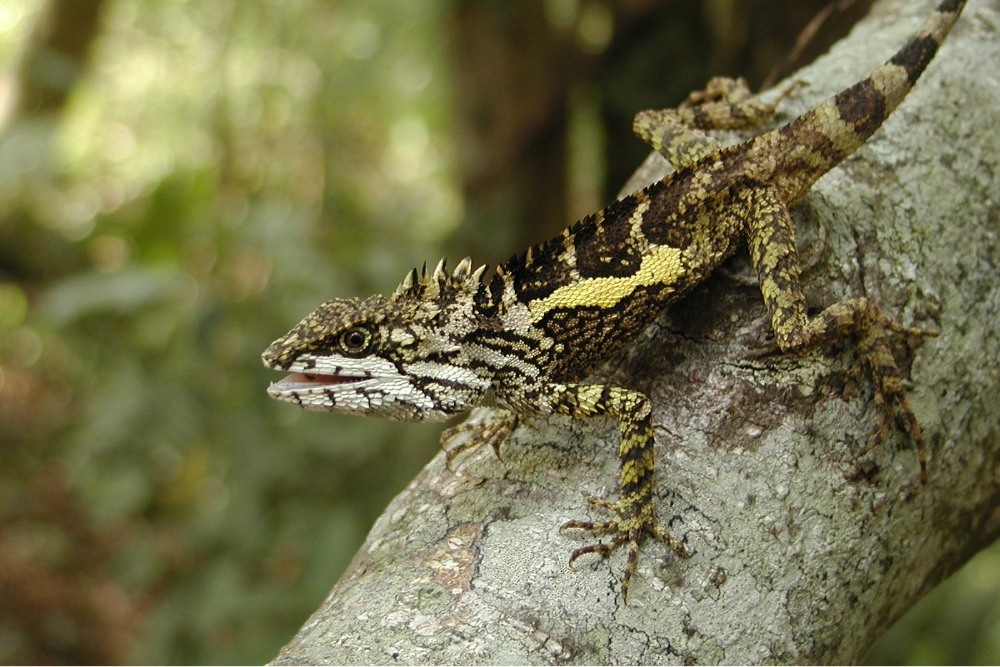
Svenhoe's climbing lizard
In the picture, a lizard rests on the branch of the plant "Buddha's Hand", trying to prey on a bee. The insect spreads its wings after being alerted, leaving the lizard's disappointed expression. This is a very interesting painting that reflects the author's mood. As for most small and medium-sized ground-dwelling or arboreal lizards, most of them mainly feed on insects. Based on the inconspicuous ears of the lizard in the picture and the fact that it rests on lignified branches, it is likely that this lizard is a flying lizard. A species of wood-climbing lizard in the lizard family that is good at climbing trees and prefers to feed on small insects that move near trees. However, as far as the ecological habits or characteristics of the lizards are concerned, there are still many places that are not properly handled in the painting. For example, the lizards should be densely covered with scales on their backs, abdomens, and even their limbs and tails, while the lizards seen in the paintings are smooth. The skin with normal skin and anthropomorphic expressions looks more like a newborn rat at first glance; moreover, most lizards cannot show different expressions through the action of facial muscles, so this should be the projection of the author's mood , want to express the regret that the lizard did not catch the insect meal. The insects that are used as prey in the painting are most likely mud pot wasps. The female wasps will shuttle among the plants to find the larvae of butterfly moths, destroy their ganglia with stinging needles and bring the paralyzed caterpillars back to the built nest. They are "buried alive" so that their offspring have fresh worm meat to eat until they emerge as adults. The clay pot bee is looking for its prey in the plants in the painting, but it doesn't know that it has also become the target of others. It's just lucky that it didn't get buried in the mouth of the lizard in the picture!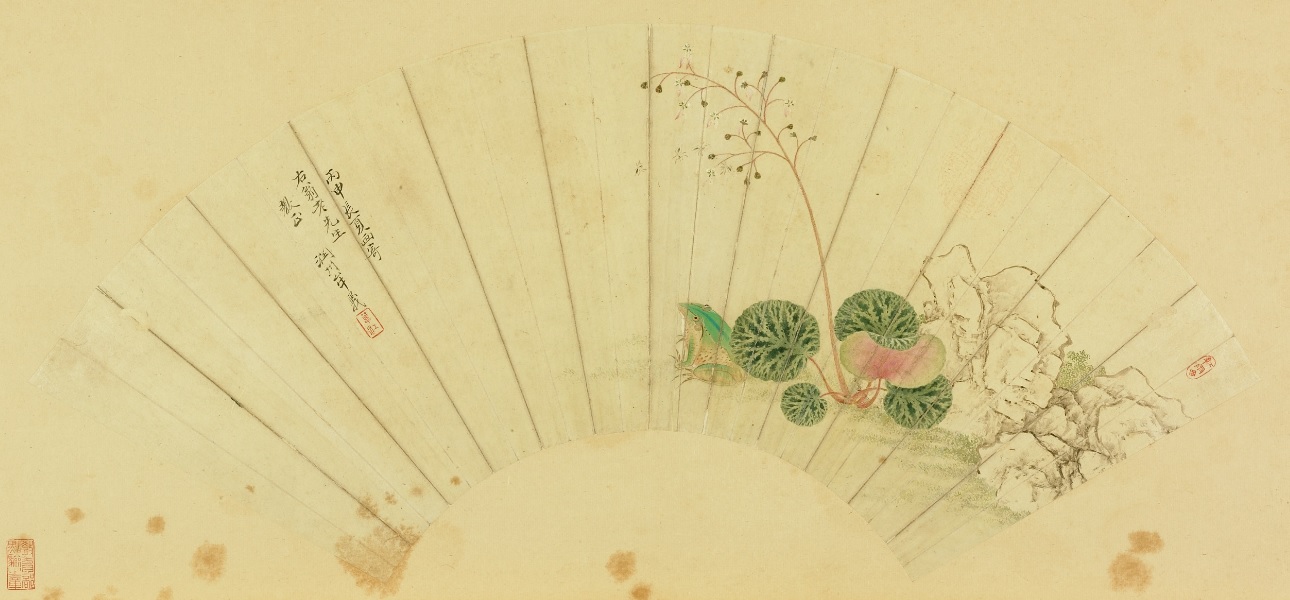
Mingmou Yi Saxifrage Frog
Mou Yi (17th century), courtesy name Weijiang, a native of Runzhou (now Zhenjiang), was good at painting flowers, birds, plants and insects, and his brushwork was graceful. The rest of his life is unknown. In addition to this courtyard, the handed down works are mostly collected in the Shanghai Museum, Yangzhou Museum, Nanjing Museum and other southern museums. This picture depicts frogs guarding under the saxifrage stems, staring at the flying insects flying towards the flowers. The painter used mineral pigments such as azurite and azurite to make fluorescent green, making the frog the focus of the whole painting. The painter specially arranged for the frogs to hide in the saxifrage leaves, waiting to prey on the flying insects that mingled in the flowers. The artist paints this moment in a narrow manner, in order to induce the audience to imagine the next plot deduction. Besides flying insects, frogs were also regarded as insects in the past. In traditional painting theory, there are often examples of frogs, fish, shrimps, crabs, and grasses and insects in the water being discussed in the same chapter.
Mingmou Yi Saxifrage Frog (Part)

Svenhauser's red frog
The foraging behavior of animals can be divided into two types of foraging strategies: active attack type and sitting type. In the painting, we can see that the saxifrage is blooming, and the frog is hiding under the leaves of the saxifrage, staring at the flower, waiting for the insects visiting the flower to take the initiative to deliver it to the door, taking the opportunity to eat a meal, which is a sit-and-wait foraging strategy. the ultimate performance. In the urban environment, we can often see frogs stationed under the base of the street lamp in the park, waiting to prey on the insects that come to the light.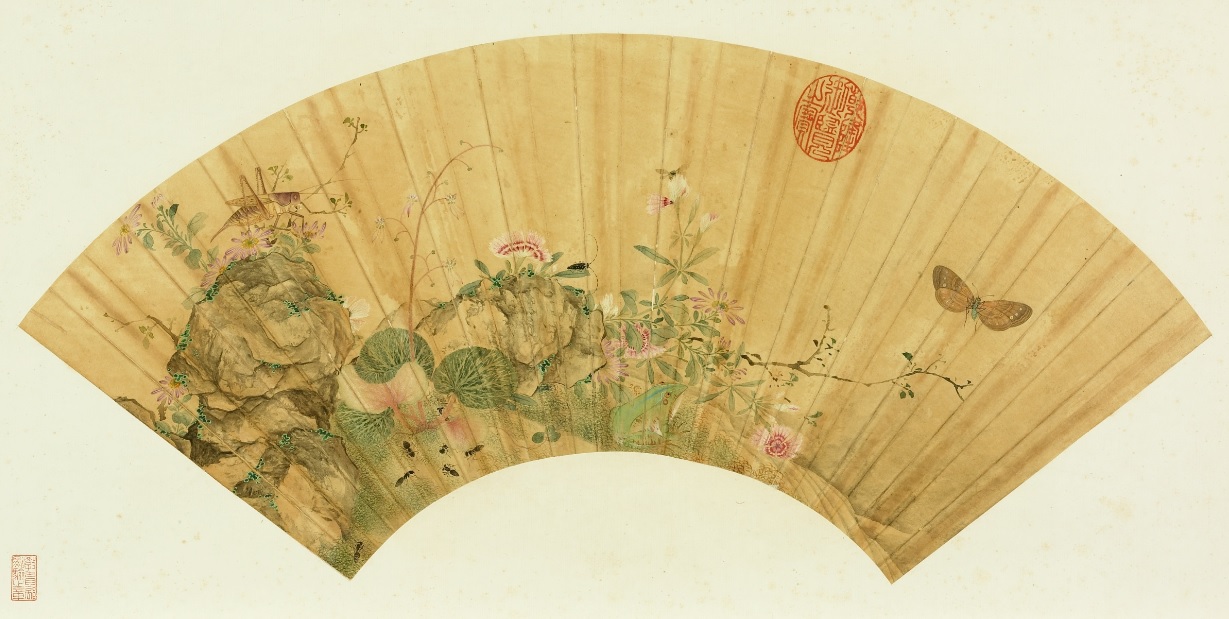
Mingye Fangcaotian
The grass and insects on the fan on this gold paper is a fine collection of grass and insect paintings in the late Ming Dynasty in our institute. Apart from the butterflies and grasshoppers, which are easy to observe, there are cute frogs, six ants hidden in the grass, bees on the petals, and grass and insects on the leaves. Stop the beetle. The grasshopper stepping on the small chrysanthemum on the upper left shows a pattern, but in fact it explains the structure of the web, tibia and other structures of the worm, showing the painter's confidence in the mastery of the image and the leeway to change it. The back of the sagebrush with thin veins, the petals swaying in the air, the zigzag petals, and the blooming small wild chrysanthemum, the painter all used different shades of purple, with fine curly grass and green leaves. Synthesize a vibrant, colorful and harmonious waterfront scene.
Mingye Fangcaotian (partial)
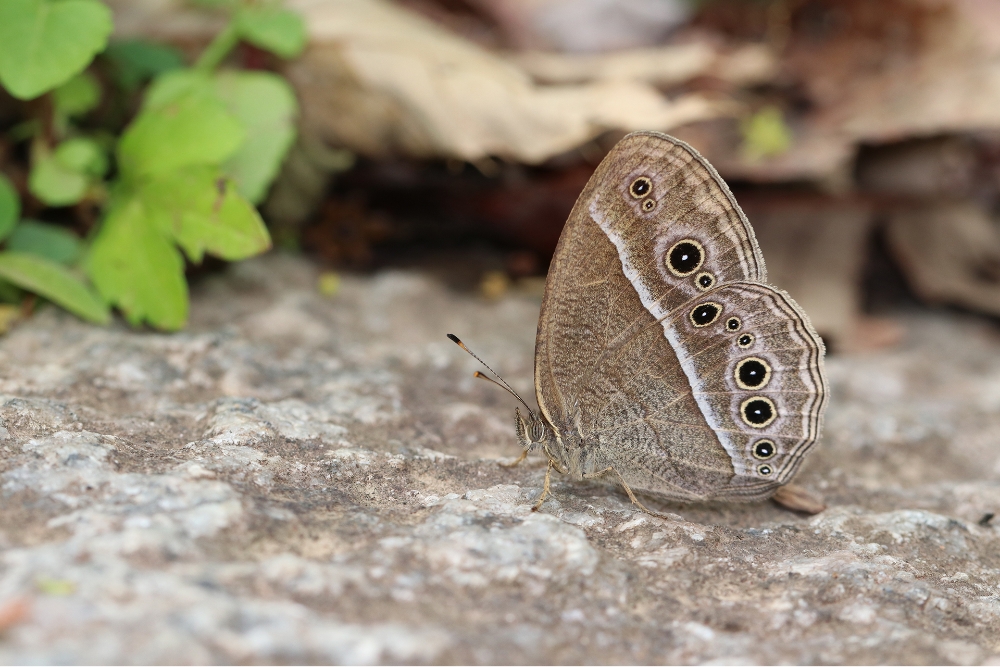
Eyebrow
In the picture, the antennae of the butterfly are rod-shaped and short, the wings are dark brown, the wings are rounded, there is a row of eye lines on the ventral surface of the sub-outer edge of the fore and hind wings, and there is a row of eyebrow-shaped lines in the middle of the ventral surface (inside of the eye lines). Judging from these characteristics, it should be A butterfly of the genus Nymphalidae. The species are small and medium in size. In addition to the arrangement of many eye patterns on the outside of the ventral surface of the wings, there is a longitudinal line extending on the middle side of the ventral surface of the wings, so it is called the eyebrow-eye butterfly. change in size. Eggs are smooth and spherical; larvae are five instars, with a pair of horns on the head shell, and mostly feed on grasses; pupae are weeping pupae, green or brown; adults fly erratically on forest margins, visit flowers and suck decaying organic matter. In reality, Nymphalidae butterflies usually move on four legs, with short and small front legs, while the picture shows six legs.
Mingye Fangcaotian (partial)
This painting is very similar to the frogs depicted in Ming Mouyi's "Saxifrax Frogs", all of which are in a state of sitting and waiting for food. In the paintings, we find that there are subtleties and errors in the description of frogs. For example, the subtleties depict the "tympanic membrane" structure behind the eyes, which is the auditory structure of frogs, followed by depicting the "back" structure of frogs. The dorsal fold is the structure in which the skin is located at the junction of the back and the flank. For native frogs, it is more pronounced in the red frog family, and it is often an important feature of species identification. There are also two obvious errors in the painting. One is that the frog's toes are simply drawn as claws, and the other is that the connection between the frog's front feet and the body extends from the abdomen to the eyes, so that the eardrum appears on the front feet. The bizarre picture of the base, in the real world, only invertebrates, such as stag beetles, katydids and other insects, have hearing organs that grow on their feet.grass and insect hide and seek
Due to the small size of insects, the "album" or "fan" form is enough to be the stage for insect paintings. However, there were still many paintings of grass and insects in ancient times, which were painted on "hand scrolls" or "vertical scrolls". Of course, these large-scale works contain more types and quantities of insects, small animals, and flowers and plants.
Watching this kind of large-scale grass and insect paintings is especially easy to get the fun of playing hide-and-seek. On the leaves, on the edge of stones, and by the water bank, there may be small insects and small animals that have not been discovered before in the small corners of each picture. Their small figures and movements make people feel that nature is full of vitality even in the smallest places - this is the important meaning of many grass and insect paintings.
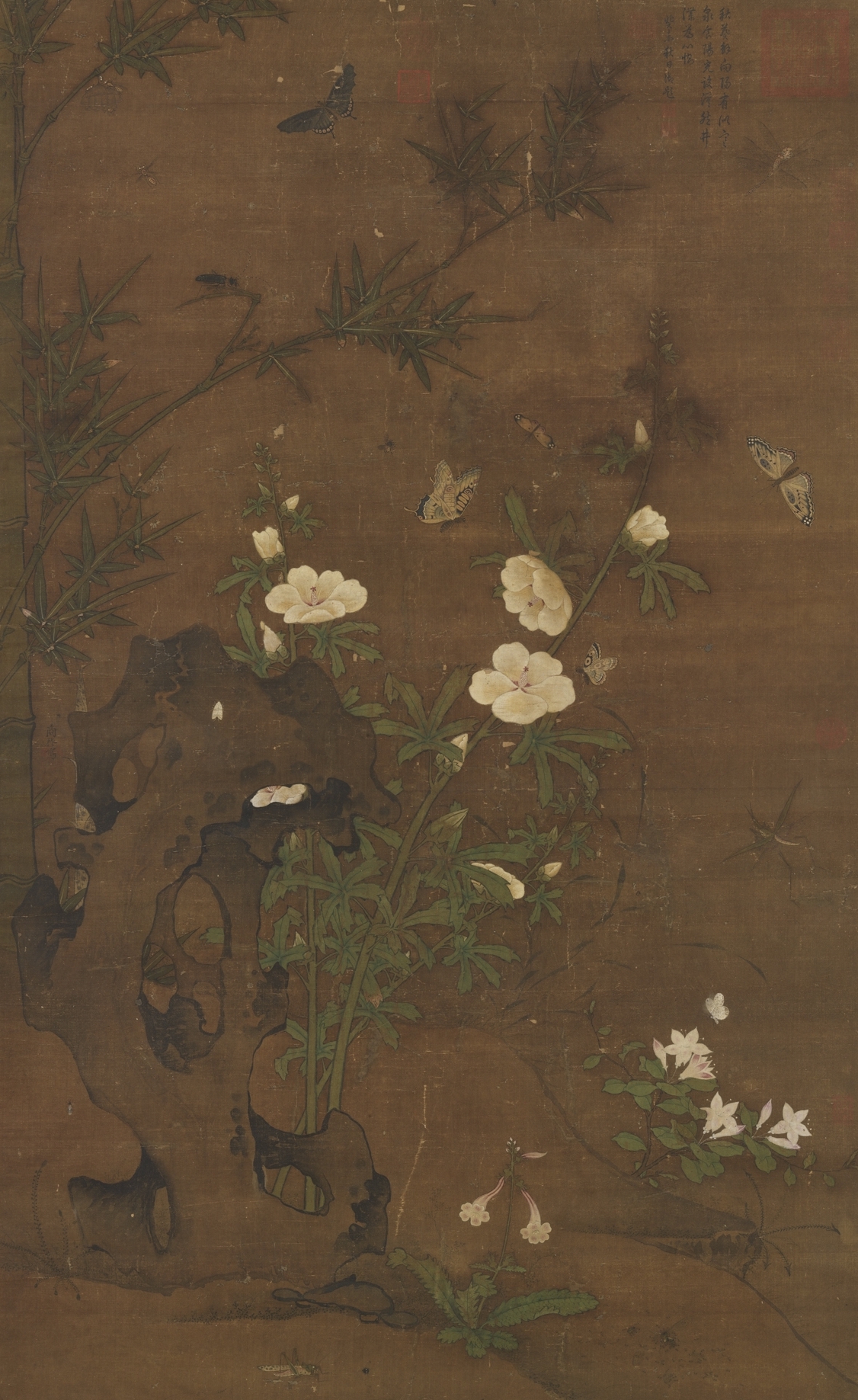
Ming Shang Zuo Okra map
"Gumbo Picture" is a rare masterpiece of vertical scroll painting of grass and insects in Ming Dynasty. In the space between the bamboo and stone on the left side of the picture, there is a signature "written by Shang Zuo". Shang Zuo was the grandson of Shang Xi (15th century), a famous court painter of the Ming Dynasty. This painting depicts a corner of a beautiful garden, with wild grass, flowers, strange stones, okra, and bamboo bushes on the small slope arranged in layers on the left side of the picture, which is consistent with the layout style of other court painters in the 15th century when they painted vertical scrolls of flowers and birds. The space intertwined by strange stones, plants and slopes is a stage where grass and insects can appear. How many different kinds of small creatures can you find in the paintings, such as amusing wasps that want to fly back to the hive, a pair of dragonflies chatting in the air, white moths with okra petals falling on strange rocks, The little black ladybugs confronting the grasshoppers, the ant colonies that decompose and transport the corpses of bees... On the one hand, the painter Shang Zuo took into account the overall momentum of the vertical axis, and did not let the trivial details make the picture lose its focus. A kind of hide-and-seek fun.
Yuan Chenlin flowers
Chen Lin (about 1260-1320) was a well-known flower and bird painter in the early Yuan Dynasty. This "Flowers" volume is very different from Chen Lin's paintings in the courtyard. The inscription at the end of the volume is "Written by Qian Tang Chenlin in Ziyue, Ziyue, Xinhai," at the age of four years (1311), although it was written by Chen Lin in the late Ming Dynasty. Fake works, but it also reflects the trend of the times when the theme of flowers, plants and insects was also popular in the late Ming Dynasty. At first glance, this painting is just a field of flowers and plants, but if you look closely, you can see that there are all kinds of insects from land to water. Whether insects or flowers, most of them are decorated with bright colors, and they move among the beautiful flowers and plants without a sense of crisis, just like using the images of grass and insects to compose a beautiful tribute to the natural world.
Yuan Chenlin flowers (partial)
The drawing is clearly a Lepidopteran, but the author presents it in such a freehand manner that it is difficult to clearly identify it. Especially the black and big head, the chest and abdomen are indistinguishable, and the wing shape and markings in flight are also unclear, and the antennae are filamentous and like moths. However, when the ancients drew butterflies and moths, their antennae were often imprecise! From the dark wing veins and eye-like markings on the wings on the white ground, it is inferred that they may be butterflies of the genus Melanagria of the subfamily Nymphalidae. They are mainly distributed in temperate zones and mountainous areas, and there are six species in China. It also includes species that feed on rice, bamboo and other gramineous plants, and have the habit of visiting flowers. They are found in forest margins and grass and shrubs. Artists should have a good chance to encounter and paint them.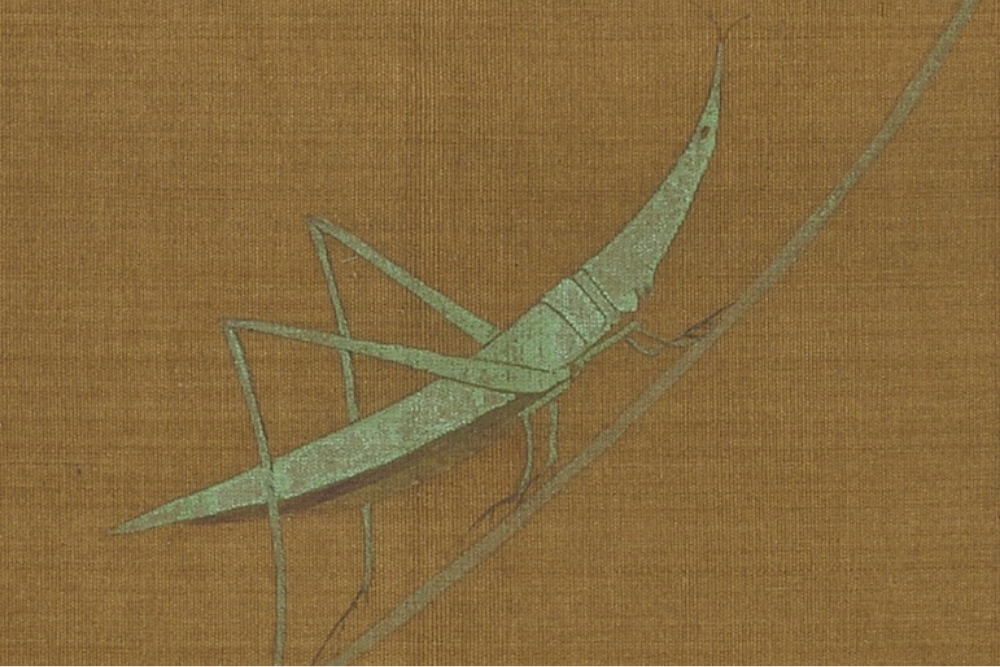
Yuan Chenlin flowers (partial)
The prototype in the picture should be Acrida sp.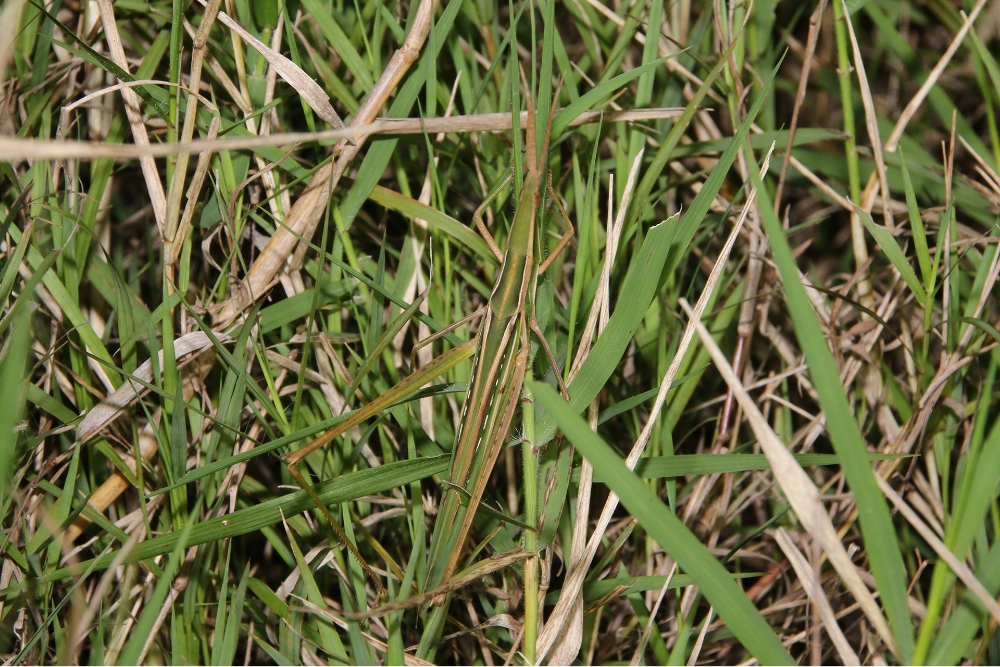
Sword-horned locust
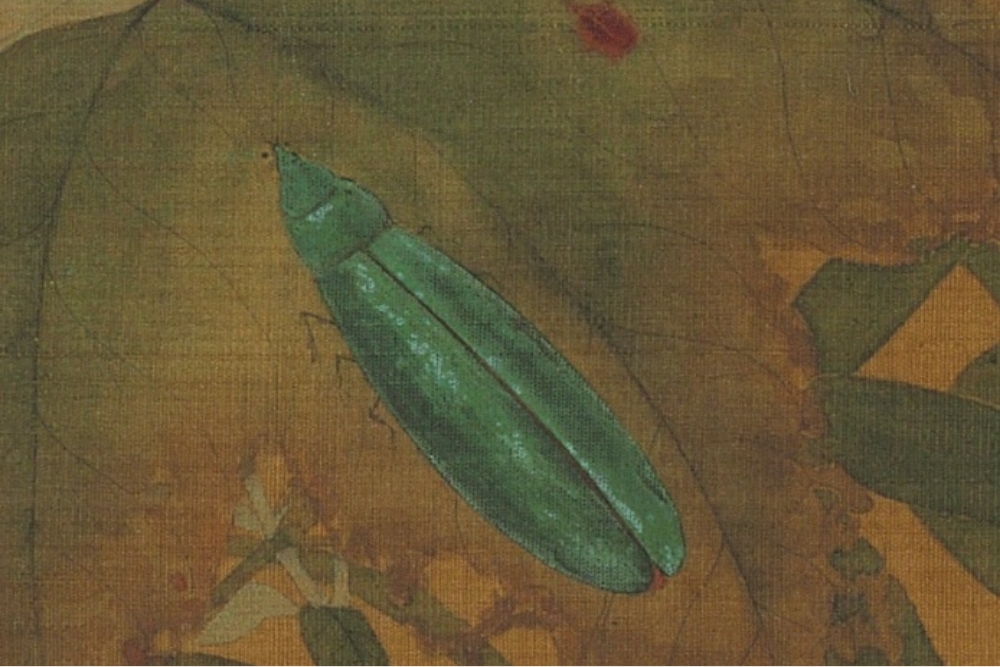
Yuan Chenlin flowers (partial)
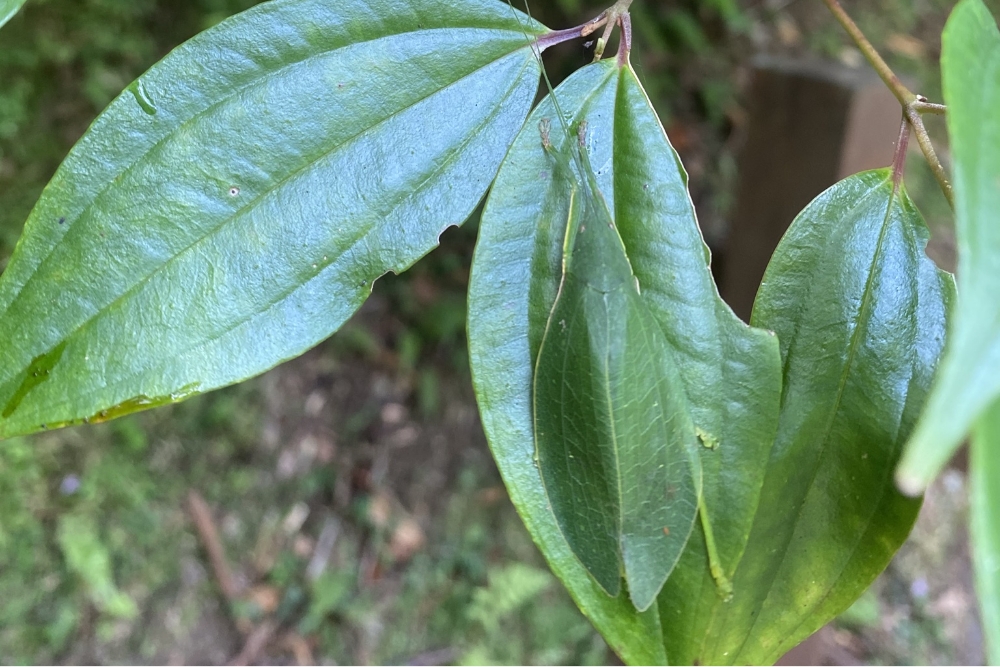
Pseudo katydid
The green animal in the picture has six legs, a head, a thorax and wings, and it can be speculated that it is an insect, but the remaining clues are quite few. From the past observation experience in the wild, there is an insect with a flat body and a equilateral triangle head, which is quite in line with the insect in the picture, and that is the Pseudomonas katydid. Katydids are insects of the family Orthoptera, with a body length of about 2 to 3 cm. It has a special shape with a narrow front end and a wide center, resembling a leaf. Because of this, the katydid will retract all its feet under the body when it is resting, and the whole worm will lie on the leaves to protect itself from being discovered by natural enemies.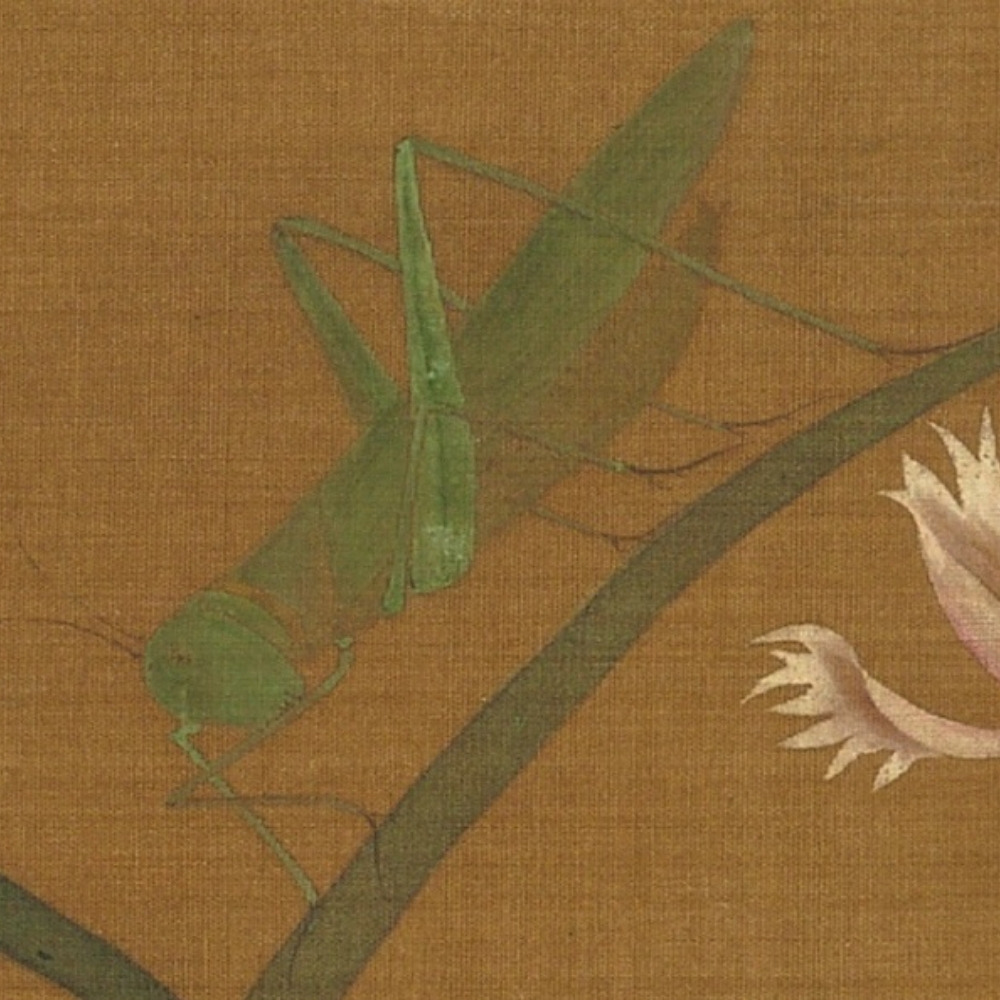
Yuan Chenlin flowers (partial)
Locusts, Orthoptera Acrididae. Locusts are one of the most important pests in ancient and modern times, and the most serious one is the plague of locusts. At present, there are still some small-scale locust plagues in Africa, the Middle East and China, but there have been no related disasters reported in Taiwan for many years.
Yuan Chenlin flowers (partial)
The dragonflies in this painting have the characteristics of both dragonflies and damselflies. Its body shape makes people intuitively like a painted dragonfly at first glance, especially when the wings are stretched forward, which is the posture of many dragonflies when they rest on the grass, but many detailed features are like the compound eyes that lie apart like dumbbells, and the shape of the front and rear wings. The proximity, and the lack of prominent rearward protrusion of the hind wing hindrump area (vannus) are very damselfly-like!
Yuan Chenlin flowers (partial)

Wide-winged weaving girl
According to the image in the painting, such as the shape of the forewing and the shape of the ovipositor, the prototype drawn may be Mecopoda niponensis.
Yuan Chenlin flowers (partial)
The drawing of this worm is presented in a very schematic way, so that it is difficult to clearly determine what kind of worm it is from the morphological characteristics, and even the identification at the order level is difficult. The wings and abdomen look like moths (Lepidoptera) at first glance, but the wing type The ends are too pointed; the head is drawn like a fly (Diptera); the shape, colour and markings may even resemble Hemiptera or Orthoptera! However, if further deductions are made, this is obviously a certain type of insect with a "fulguration" strategy, which blends into the background with the color or markings of its forewings at rest, but when threatened, it will instantly open its wings, revealing hidden spots. The brightly colored hind wings and abdomen below are used to scare the opponent and not dare to make trouble, and when it covers the front wings again, it blends into the background again, making the harassers confused and unable to successfully catch them! Many different groups of large moths exhibit this behavior, for example, some species of the genus Baradesa in the family Notodontidae, such as Baradesa lithosioides, have dark forewings and bright orange hindwings , but there is a wide black band on the edge of the hind wings, which is not the same as in the painting!
Ming Changlun
Chang Lun (active between the 16th and 17th centuries), courtesy name Ruming, number Erhuazi, whose life is unknown. It has the same name as Chang Lun (1492-1525), a commentator of Dali Temple during the Zhengde period, but not the same person. According to the inscription of Zhiban (1557-1630), a monk in the tail-tailed Jinming Temple in the year of Guihai (1623), it is mentioned that Chang Lun was a famous painter of Jiang Zuo. His birth year was before 1543. The paintings in this scroll start with fish, shrimp and crabs among the algae and grass in the water, and then draw various insects among the grass and leaves on the land, such as butterflies, katydids, locusts, mantises, dragonflies, etc., each flying and jumping, or Different dynamic and static postures such as berthing and temporary habitation. The whole volume is depicted in a simple and freehand ink brush, the brush and ink are swaying freely, the rhythm is clear, the shades are light and heavy, and it has the fun of calligraphy and Zen painting and ink play.
Qing Zhu Rulin painted grass and insects
Zhu Rulin (after about 1696-1762) was only a teenager when he painted this scroll in the fifty years of the Kangxi reign (1711). However, his brushwork is delicate and the colors are elegant and clean, depicting butterflies, bees, beetles, grasshoppers, mantises, ants, etc., and the most interesting is a cockroach. The blank part of this work was originally intended to inscribe poems on these insects for friends and friends. Unfortunately, after the work was presented to the Palace, only one poem written by Emperor Qianlong was left. Zhu Rulin painted these grasses and insects after observing the entities.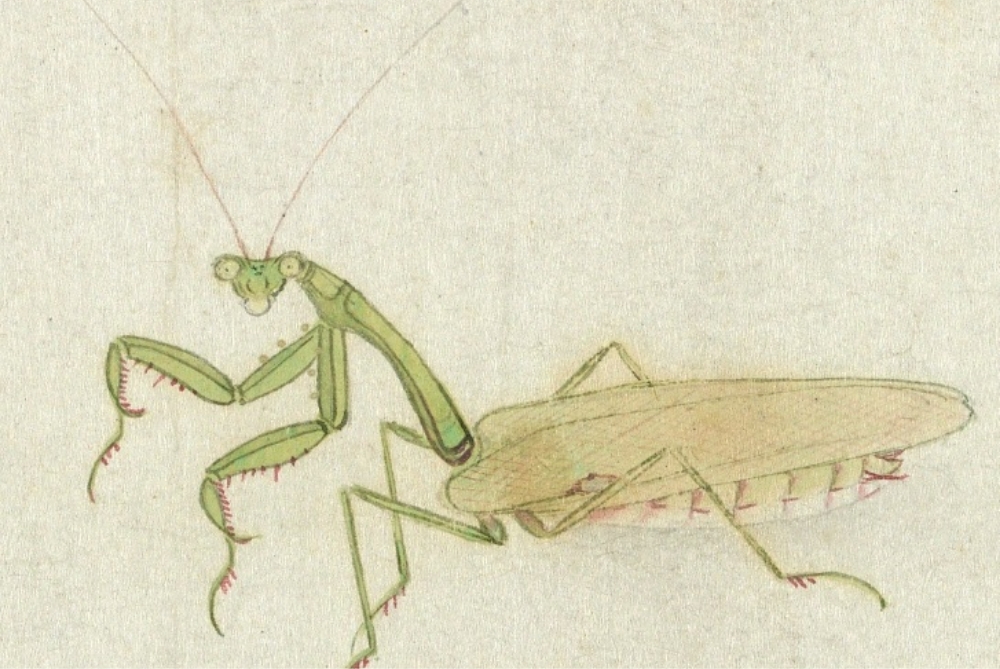
Qing Zhu Rulin's painting of grass and insects (partial mantis)
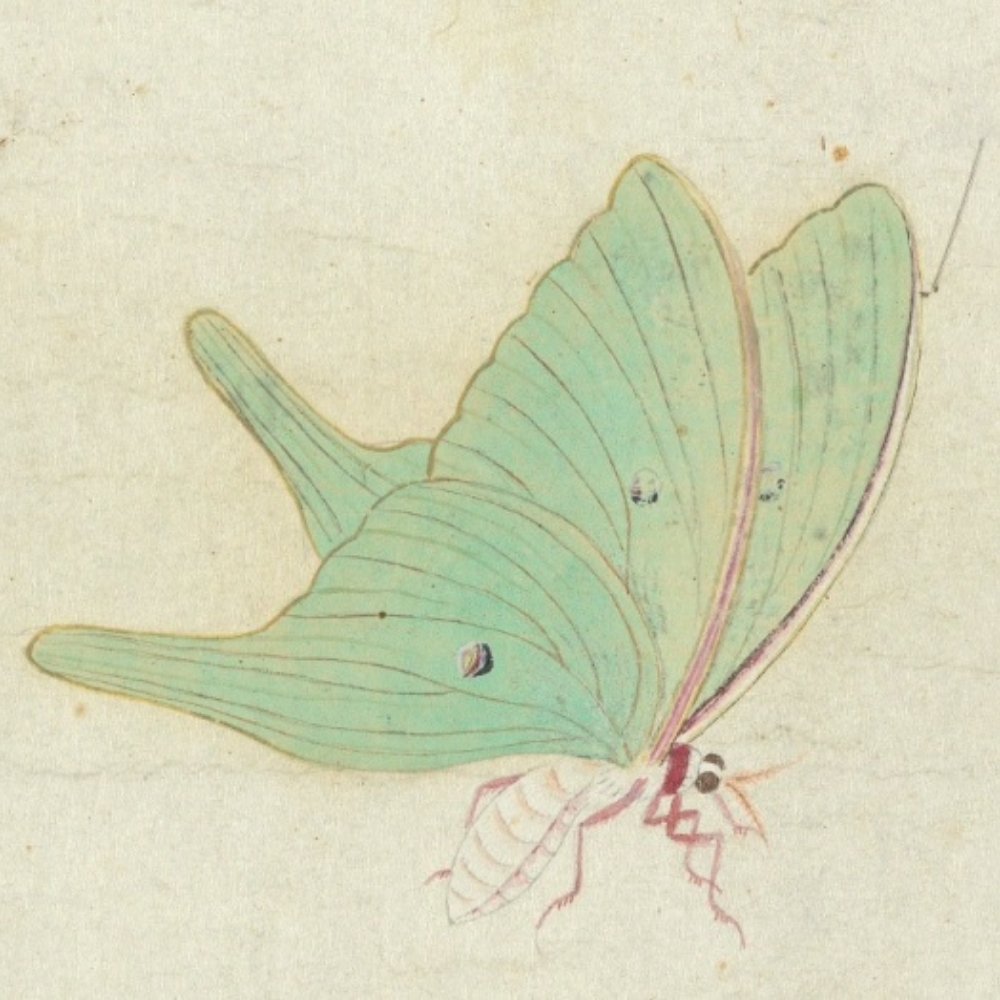
Qing Zhu Rulin painted grass and insects (partial long-tailed water green moth)
For example, the light green "Long-tailed water green moth" at the end of the roll, the pink on the edge of the forewing, or the black, white and red arc-shaped lines appearing on the eye-shaped pattern on the green wings, all cut into the characteristics of the long-tailed water blue moth, making people feel Feel his curiosity and love for these tiny lives. The faithful reproduction of grass and insects in this scroll made this work a precious biological record in the early 18th century.Grass and insect star - butterfly
Butterflies have wings with varied patterns that are pleasing to the eye. The pronunciation of the word "butterfly" is the same as the word "芋", which represents the elderly in their 70s and 80s. Therefore, it has become a symbol of longevity and has an excellent meaning. Good-looking and good symbols, the most popular star in grass and insect paintings is undoubtedly the butterfly!
In the works in this exhibition, entomologists try to identify the species of butterflies in the paintings. Some works are so realistic that they can even correspond to specific species; some are "imaginary" butterflies, which may use several The characteristics of butterflies are combined, or partially replaced with the structures of other species, creating beautiful variants that do not exist, fully demonstrating the artist's imagination.
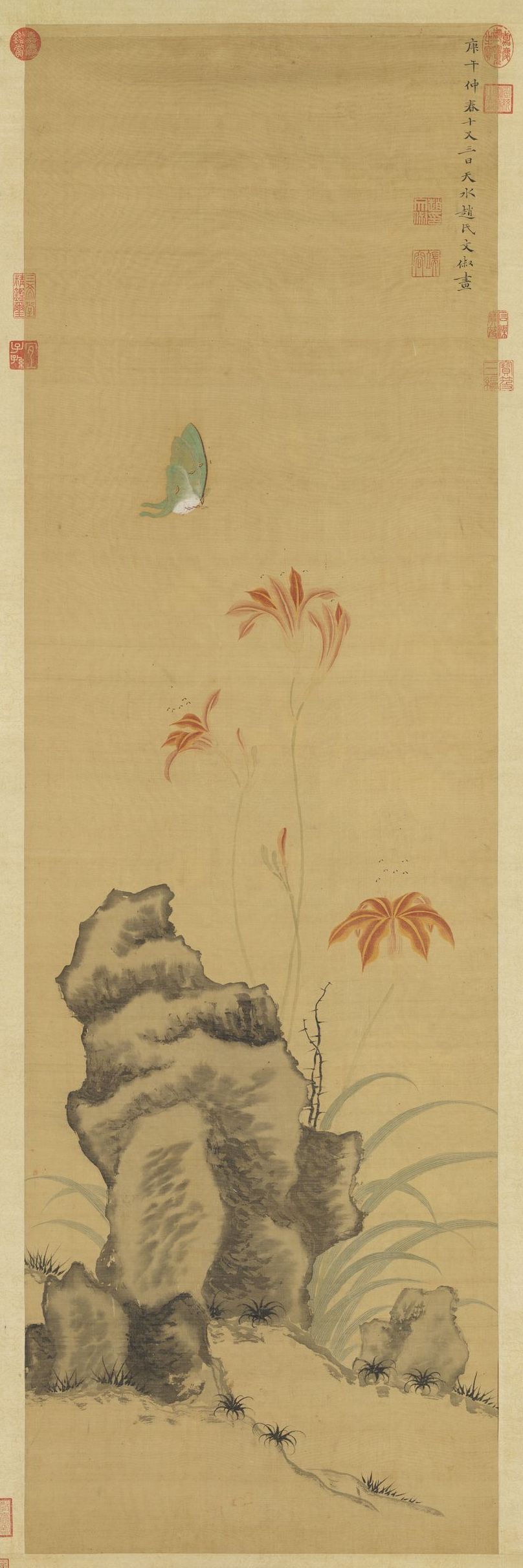
Ming Zhao Wenchu painted flowers and butterflies
Wen Chu (1595-1634), courtesy name Duanrong, was a native of Changzhou, Jiangsu. Wen Zhengming (1470-1559) great-grandson, a famous female calligrapher and painter in the late Ming Dynasty, good at flowers, birds, grass and insects. Painted in 1630, this work features a strange stone, a flower, and a flying hydrangea moth. This type of vertical scroll works with flowers and stones as the main objects were originally oriented towards grandeur, so as to decorate halls. With the help of several solitary flowers and a long-tailed water green moth flying on them, Wen Chu transformed the originally gorgeous paintings into elegant and elegant. The long-tailed water green moth is a nocturnal animal, less active during the day, and works depicting its flight posture are rare. Wen Chu chose to add it to the picture, doesn't it reveal her personal appreciation for the long-tailed water green moth?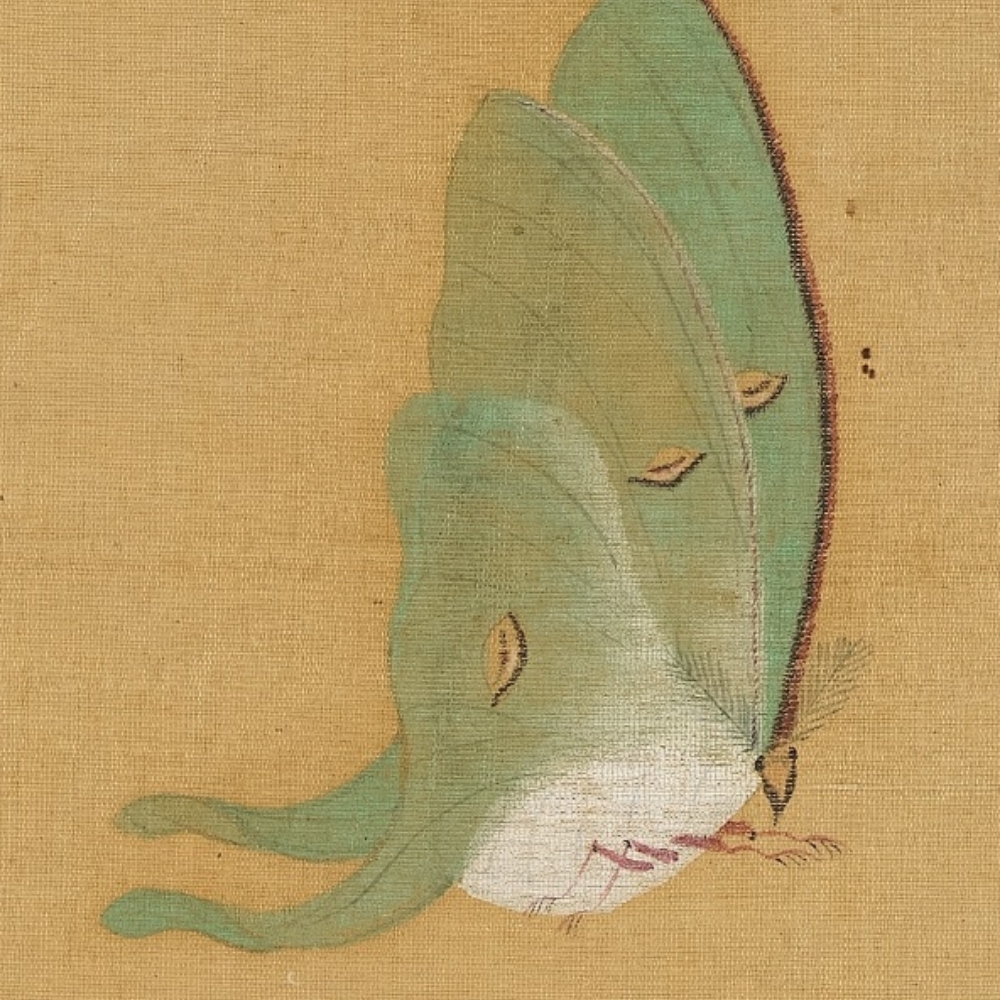
Ming Zhao Wenchu painted flowers and butterflies (part)
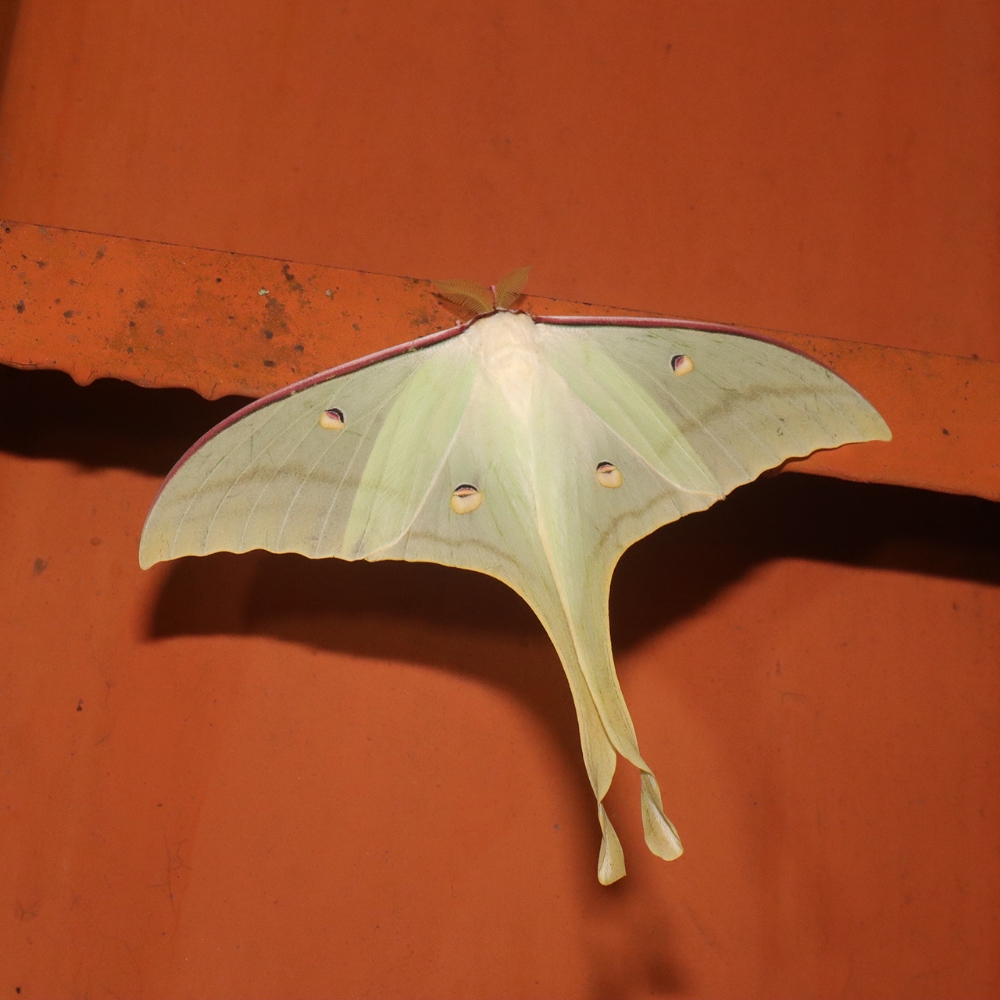
Long-tailed water green moth
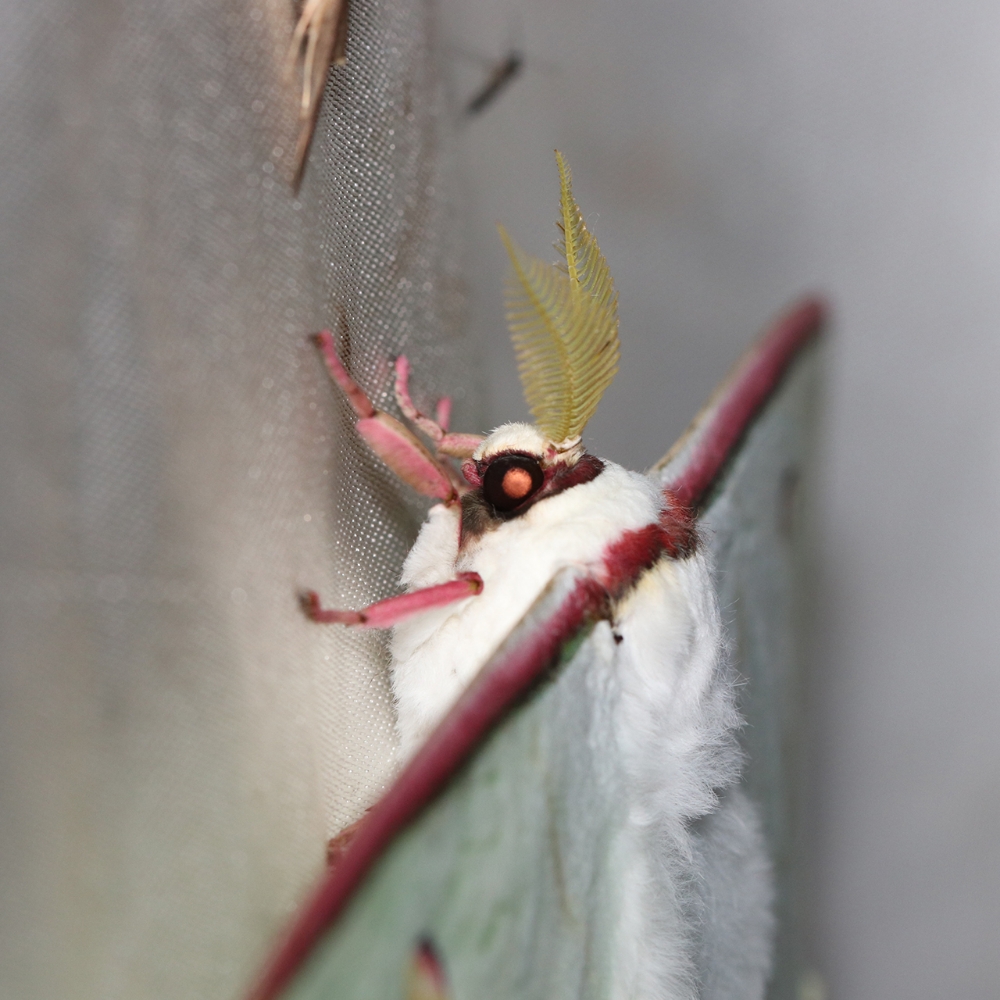
A closer look at the head of the long-tailed water green moth in the painting is presented in the front, which is quite cute. A close-up of the head of the Phyllostachys genus.
The moths depicted in the painting are similar to the living water moths in terms of feather-like antennae, wing shape and color. They are also called luna moths, because they have a pair of long-tailed hind wings and Named for the turquoise wing color. The body is huge and has two pairs of eye lines, which looks very spectacular. Egg-shaped cluster production; larvae are densely covered with protrusions and hairs, with a total of five to six instars, feeding on plants such as sweetgum, tallow, fir, etc. The first and second instar larvae are orange, and turn green after the third instar, with a large food intake, and the last instar Larvae weave leaves and silk into cocoons and pupate in them; adults have no mouthparts to eat and die after mating and laying eggs.
Biography of Song Huawang
In the picture, behind the oddly shaped Taihu Stone, a red peony is in full bloom. The Taihu stone and the peony plant are in the center of the picture. This compositional method of arranging objects in the center can be traced back to the Tang Dynasty. Similar compositions can often be seen in many tomb murals after the Tang Dynasty, if they depict flowers or flower-and-bird screens. This kind of highly decorative works, insects and butterflies are also common around the flowers and trees, which is probably the prototype of the earliest vertical-axis grass and insect diagrams! In "Kao Tu", you can also see some lines of the manuscript, and the junctions of the color blocks are not without flaws, but you can feel the artist's proficiency in this subject by the skillful and rapid strokes. Although the insect depiction does not emphasize the difference in posture, it is also cutely interspersed. The patterned butterfly wings are very pleasing to the eye and should be a best-selling decorative work mass-produced in the Ming Dynasty.
Biography of Song Huawang (partial two-tailed nymph)
The characteristics of the butterfly in the picture are more in line with some species of the genus Nymphalidae, and the butterfly in this picture may be based on the two-tailed Nymphalidae widely distributed in Jiangnan and Taiwan. The nymphalus larvae feed on the leaves of a variety of broad-leaved trees, and the head has four horns that resemble the head of a dragon.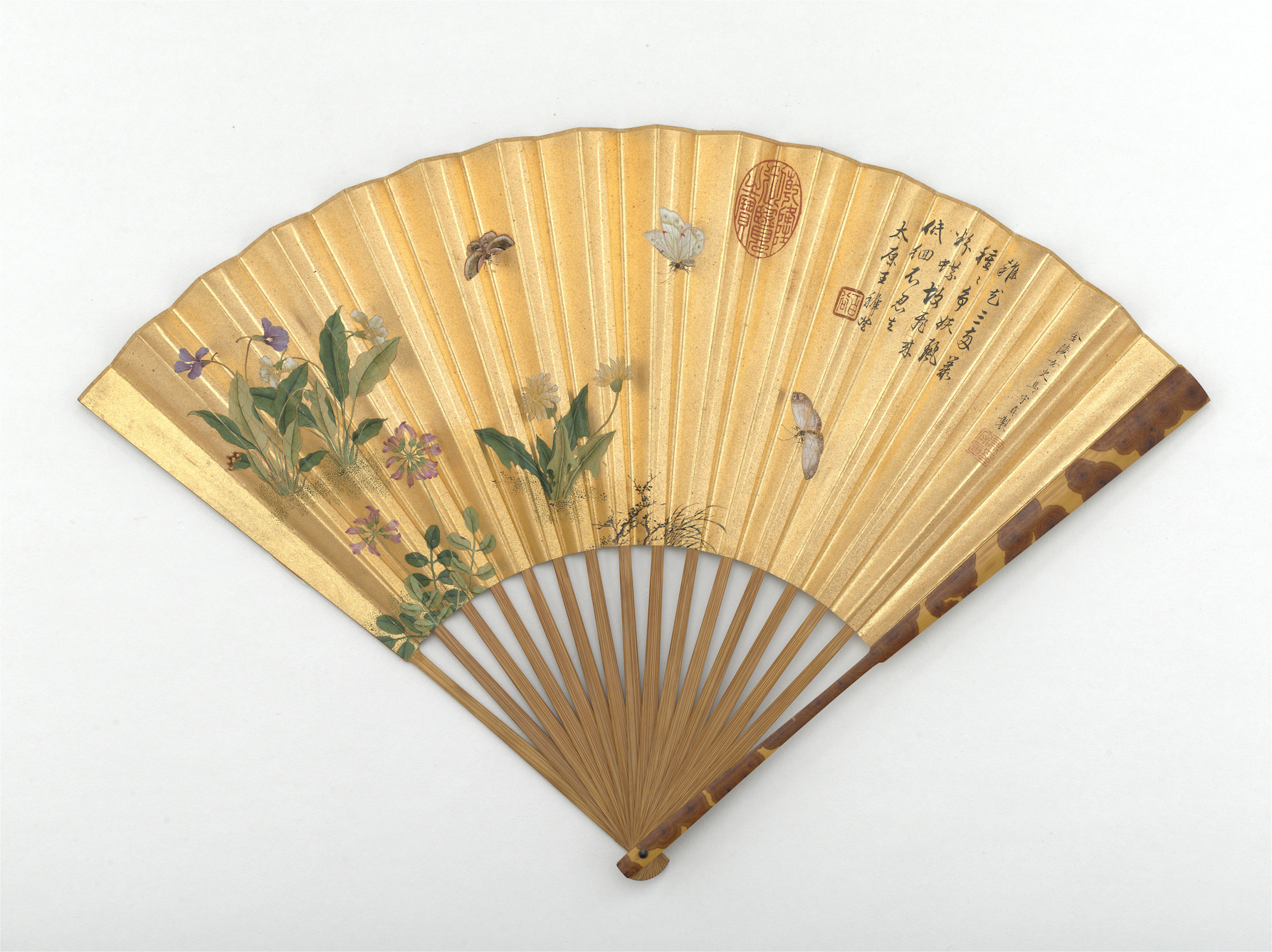
Picture of Mingma Shouzhen's flower and butterfly
Ma Shouzhen (1548-1604), numbered Xianglan. The famous courtesans in the late Ming Dynasty were all excellent in poetry, dance and painting. Clusters of alfalfa, violets and dandelions are scattered on this gold-paper folding fan. The presentation of the picture is quite different from that of general flower sketches, as if looking down at the flowerbed at the foot of the butterfly, which is very cute. On the upper right is a poem written by Wang Sudeng (1535-1614), a famous scribe in Suzhou who was friendly with her: "There are three or two clumps of miscellaneous flowers, all kinds of bewitching and beautiful. The pink butterflies are flying, and they can't bear to go." I don't know if it is a comparison of the subtle relationship between a famous prostitute and a scribe.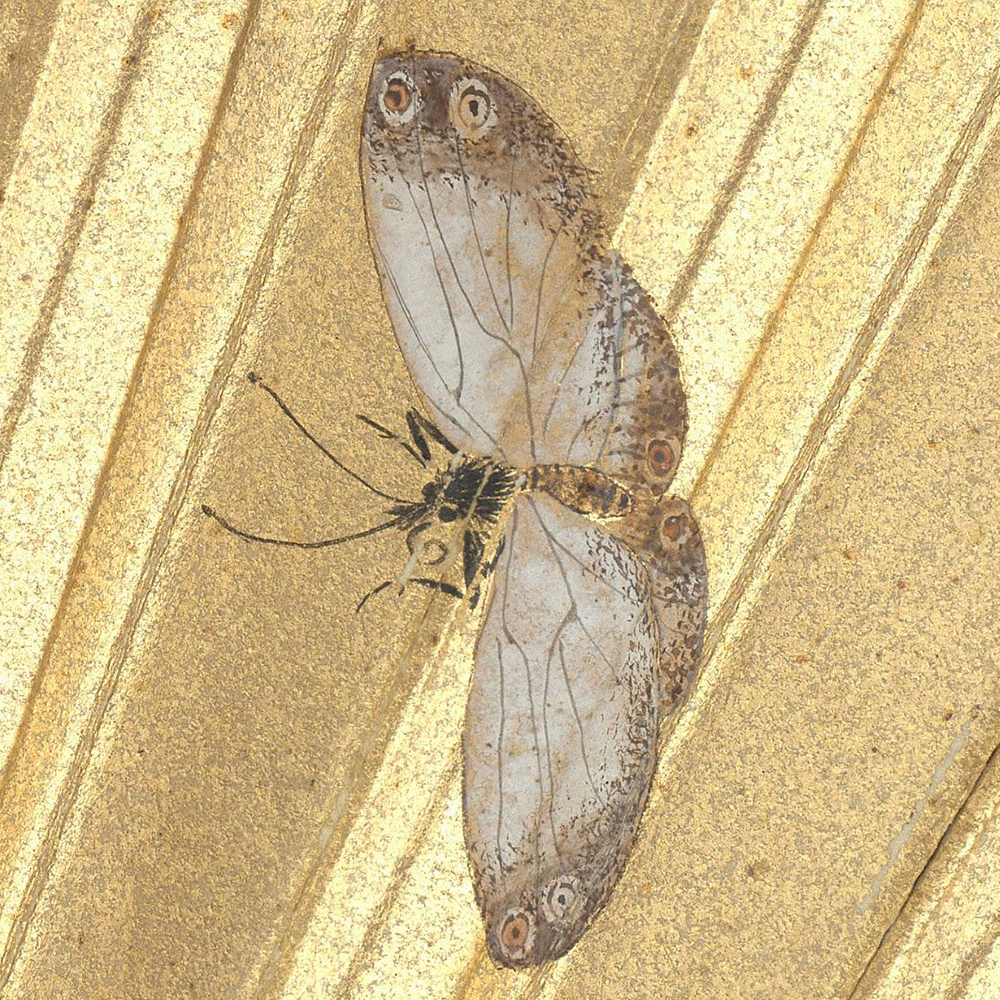
Mingma Shouzhen Flower and Butterfly (Part)
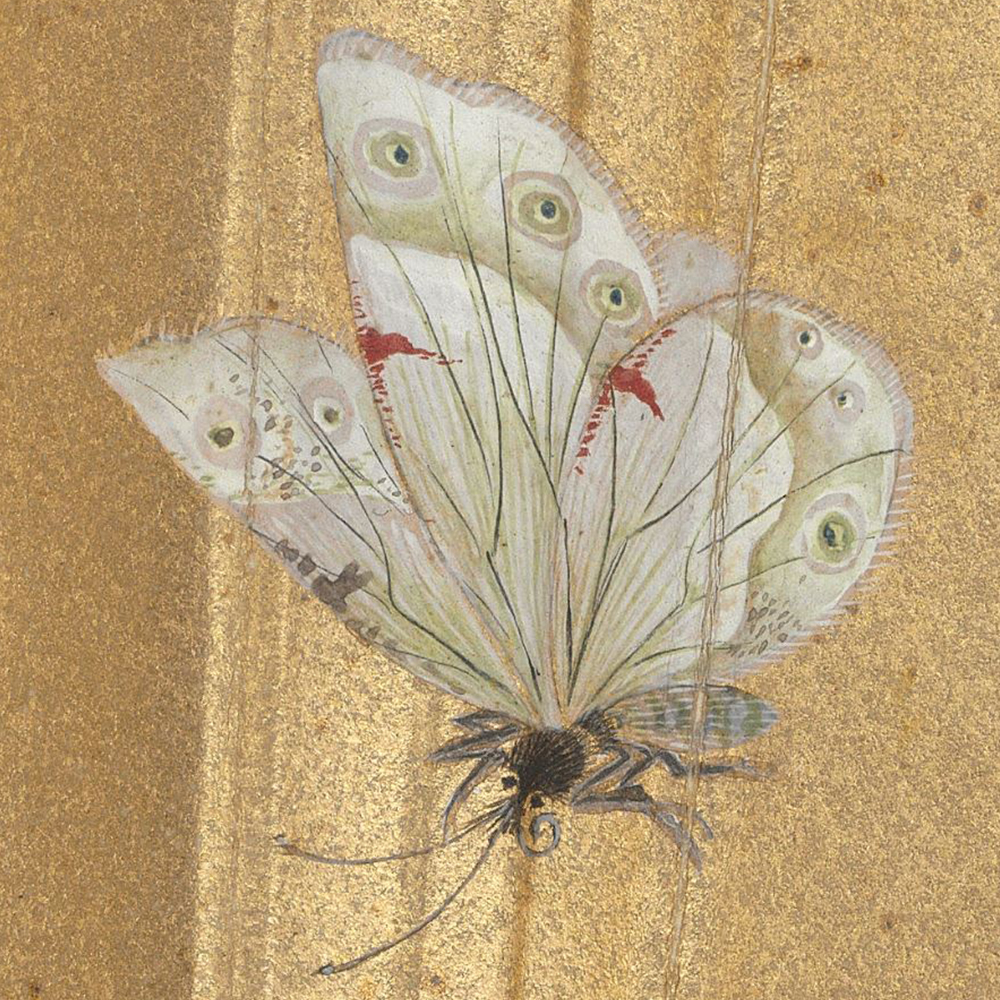
Mingma Shouzhen Flower and Butterfly (Part)

Mingma Shouzhen Flower and Butterfly (Part)
There are three lepidopteran insects in this work. The one on the right has the characteristics of a nymphalus, but the wing veins are not similar to nymphaluses, and the scales have lost a lot of powder, which may be old butterflies. It seems to be crawling; the one on the left is closer to the foot moth. Although the Ming Dynasty literati Wang Sudeng mentioned "pink butterflies fly here", according to the modern classification system, there are no pink butterflies in this painting. Perhaps the ancient concept of pink butterflies belongs to all pink butterflies.
One of Song Qian's Selected Copy of Ancient Flowers and Butterflies
This volume has a total of 12 openings, among which morning glory, impatiens, rose, chrysanthemum and begonia are selected for exhibition. At the end of the opening, there is a rich selection of styles, mentioning the imitation of the twelve styles of the Song Dynasty. In fact, the style is the same, there is no Song people's style, and there is no simple and elegant style of painting. Butterfly is finely depicted, with bright colors, but the brushwork is weak and seldom changed, and the posture of flowers and leaves is not natural and vivid. Qian Xuan (1235-1303 still alive), from Wuxing, Zhejiang. The word Shunju, art poetry good calligraphy and painting, one of the eight handsome Wu Xing.
The Five Dynasties Xuxi Flowers, Grasses and Insects
This grass and insect scroll is intended to be the work of Xu Xi, a famous flower, bird, grass and insect master in the tenth century, but judging from the style and inscription, it should be a forged ancient painting produced in large quantities for profit in the seventeenth century. The undulating soil slope in the painting can be divided into several sections according to the different grass and flowers in each section. However, the matching relationship between the insects and the flowers and trees in the painting is unclear, and the interaction between the insects is also unclear. Most of them seem to be randomly arranged in obvious places. The painter's strokes are stable and skilled, and he makes good use of the dense arrangement of ink or white dots to make the pattern more colorful, especially the effect of butterfly wings. This kind of quiet and lovely hand rolls with grass and insects should have been very popular in the market at that time!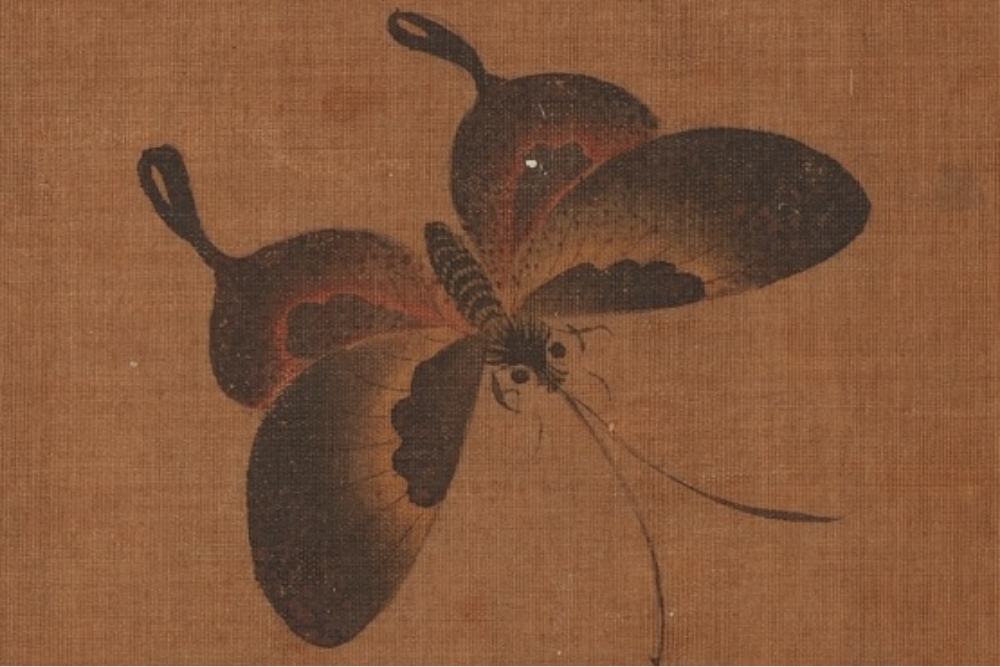
Biography of Flowers, Insects and Insects of Xuxi in Five Dynasties (Partial)
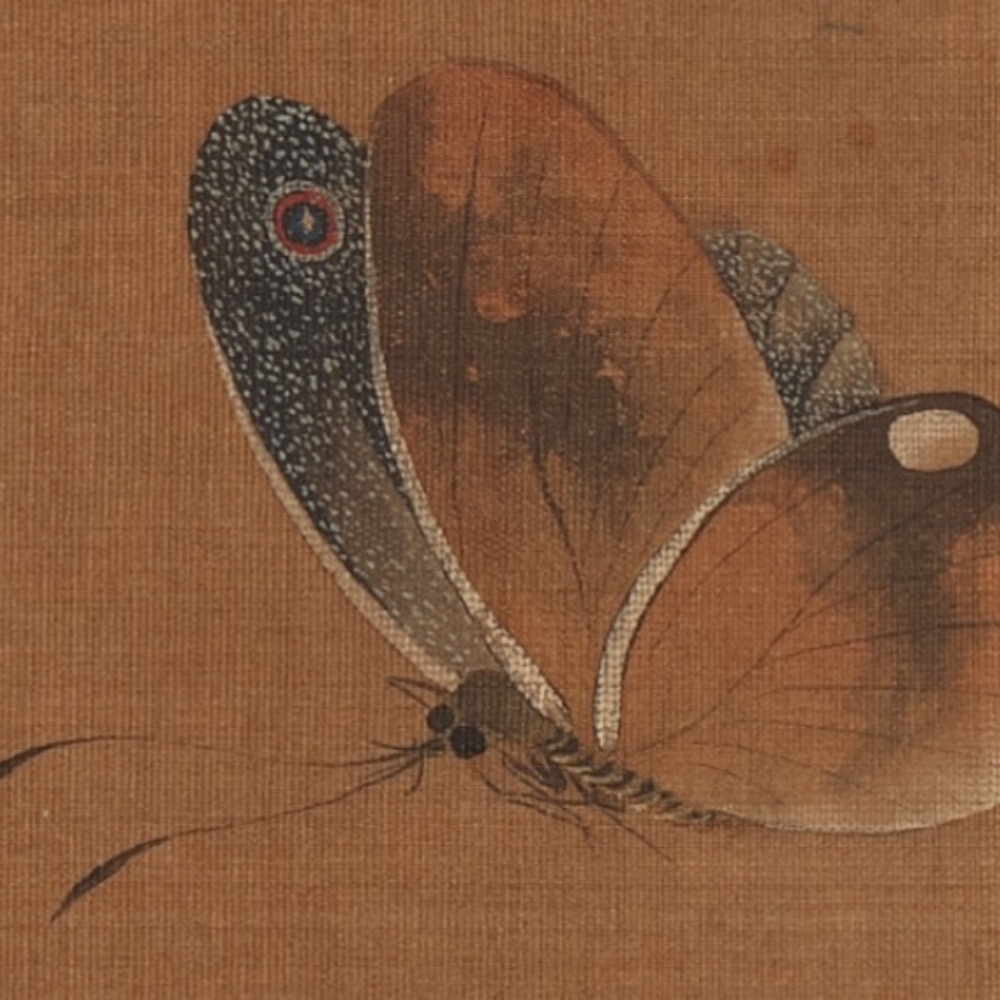
Biography of Flowers, Insects and Insects of Xuxi in Five Dynasties (Partial)
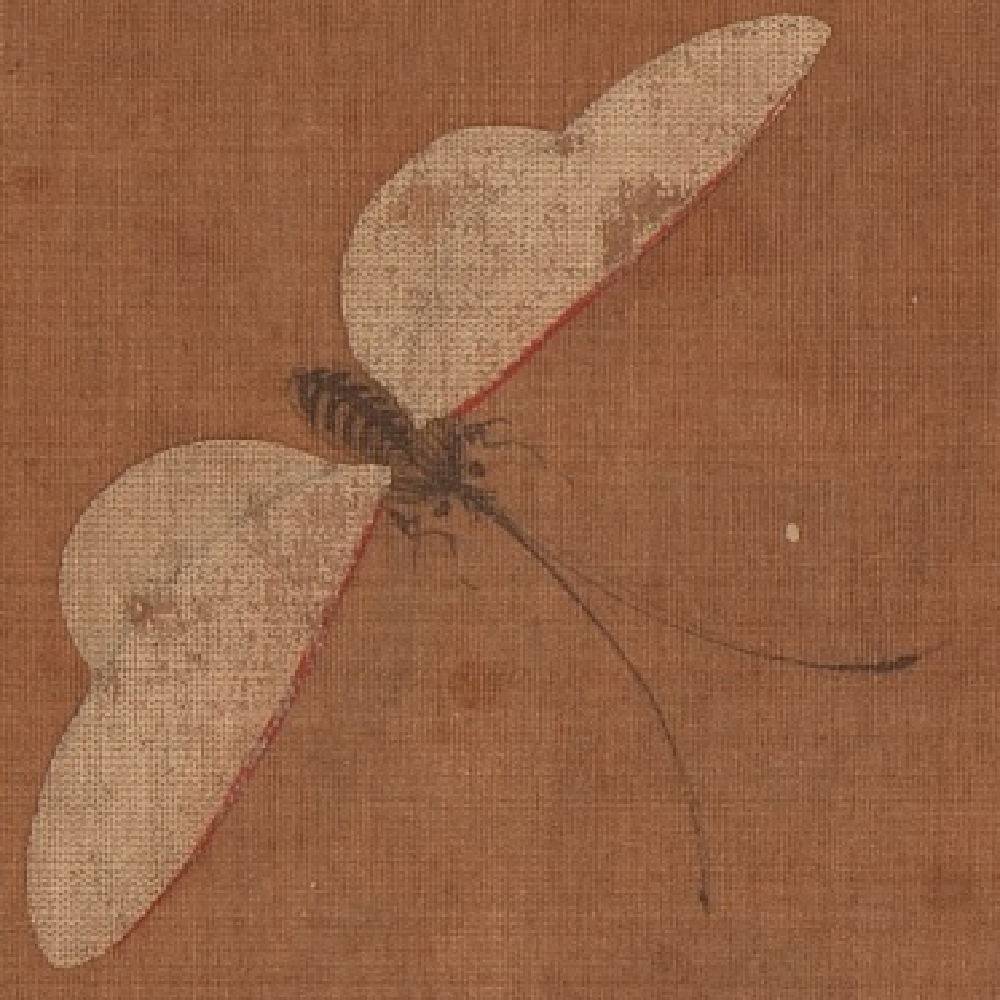
Biography of Flowers, Insects and Insects of Xuxi in Five Dynasties (Partial)

Biography of flowers, plants and insects (partial dragonfly) of the five generations of Xuxi
The dragonfly in the painting looks elegant, but it shows the artist's lack of subtle observation of the dragonfly. From the other paintings on display, we can see that there are realistic styles of dragonflies, as well as exaggerated and abstract brushstrokes to express the behavior of dragonflies. under observation. However, in this painting, although the coloring of the dragonfly's body is gorgeous, it shows that the author lacks enthusiasm for observing the dragonfly under the brushstrokes, especially in the description of the dragonfly abdomen, which is simply from thick to thin, ignoring the various aspects of the real dragonfly abdomen. The change is as if the tail of the snake was pieced together on the dragonfly, and only two gripper structures belonging to the dragonfly were added to the end.
A hundred butterflies in Qingyu province
This painting is called "Hundred Butterflies", but in fact, there are just one hundred butterflies in the painting, including moths and other winged insects. Emperor Qianlong, who has always looked at paintings carefully, was not picky about the inclusion of moths in the "Hundred Butterflies", probably because moths also had beautiful wings no less than butterflies!The painter Yu Sheng (1692-1767) entered the court in the second year of Qianlong (1737) and once painted with Lang Shining. The method of applying white powder in "A Hundred Butterflies" makes the wings and body of the butterfly more splendid, which should be affected by Western France. . Therefore, this painting shows the achievements of Yu Sheng's fusion of Chinese and Western techniques, and also reflects the new appearance of the development of court painting in the Qing Dynasty.
The curator of the National Palace Museum in Taipei said that the addition of contemporary life science knowledge has brought another new dimension to this painting exhibition. "This exhibition is particularly grateful to entomologists for their participation, which not only helps us understand the realistic degree of insect appearances by different painters, assists in identifying the types of insects in the paintings, and even understands the description of the habitats in the paintings from the habits of insects. Recognizing that the different grass and insect creatures on the picture are performing various dramatic climaxes concerning life and death."
It is reported that the exhibition will last until September 25.
(This article is compiled from the official website of the National Palace Museum in Taipei and the website of the Department of Entomology, Chung Hsing University, Taiwan.)